First time in paradise: the best things to do in Réunion Island

Feb 22, 2021 • 5 min read
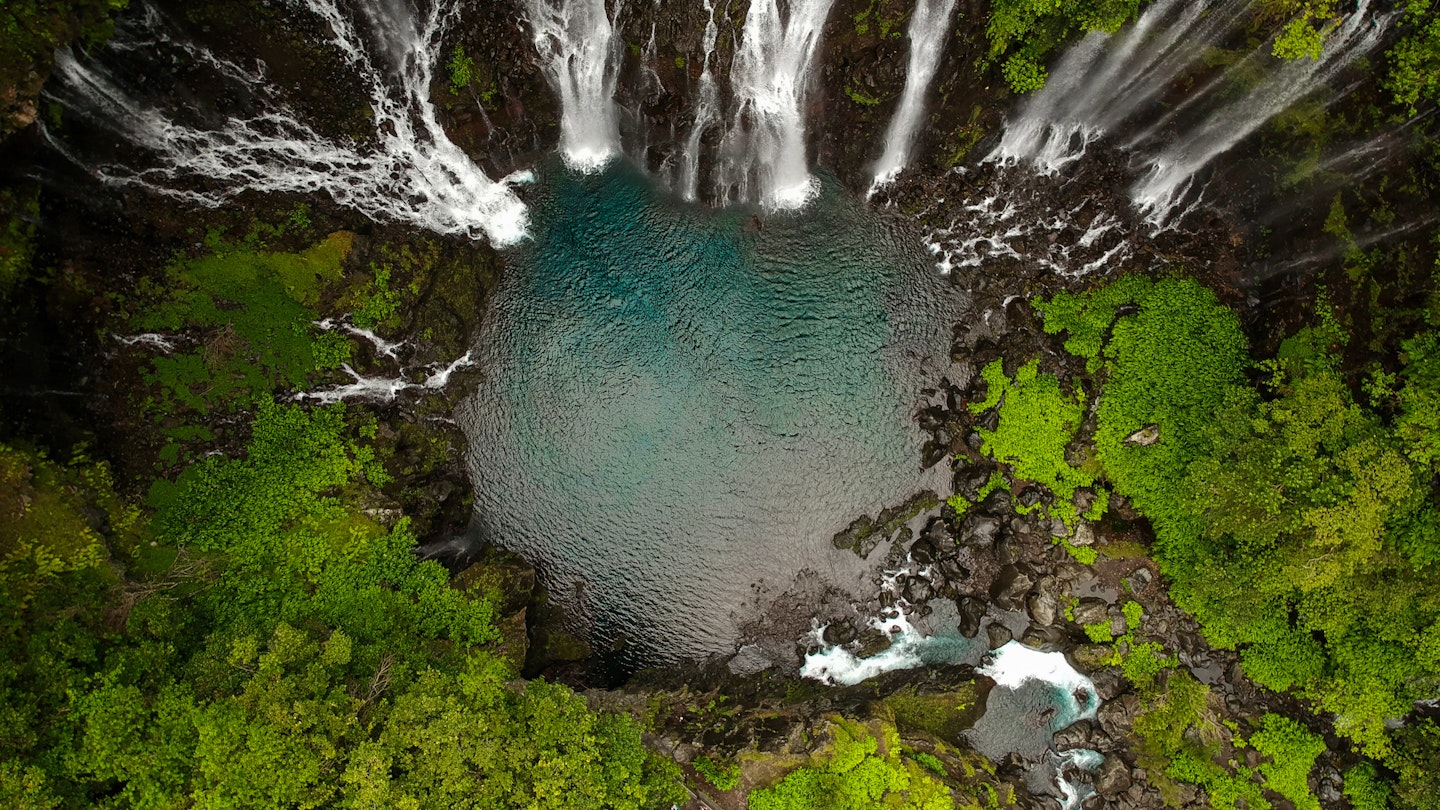
Grand Galet Waterfall is a must for any first visit to Réunion Island © Tony_ftn/Shutterstock
Hikes in lush tropical forests, spectacular views over an active volcano, secret baths under waterfalls, cultural diversity… Réunion island has it all and more.
A tiny French-speaking island in the Indian Ocean, tucked between Mauritius and Madagascar , La Réunion is only 2500 km2. But don’t be mistaken by its size: home to over 200 micro-climates, it is a treasure for landscape variety. This volcanic island also hosts more than 800 endemic species; no wonder its national park has been added to Unesco's list of World Heritage sites. Its population is also extremely diverse; as history brought people of European, Asian, African ancestry and more together, they have learnt to coexist and create exchanges between cultures. First time traveling to La Réunion? Here are some of the best things to do. You are in for a colorful adventure!
Editor's note: during COVID-19 , there are restrictions on travel. Always check the latest news before booking any trip, and be sure to follow local health guidance.

Piton de la Fournaise

La Réunion was born about three million years ago from volcanic activity. Although the ancient volcano that created the island is now asleep, its younger brother, the Piton de la Fournaise, continues to erupt today. It is one of the most active hot spots on the planet and also a spectacular sight.
To enjoy the most complete view over the craters, drive by car up to the Pas de Bellecombe viewpoint . You will go through the lunar Plaine des Sables , a red-earth plain giving out an otherworldly impression. It is recommended to reach the viewpoint in early morning as a sea of clouds usually glides in around 9am.
Plage du Tremblet
Regular volcanic eruptions shape the island, leaving fascinating sites to visit, especially in the south-east. Ever wondered what becomes of lava once it’s reached the ocean? Head down to Plage du Tremblet. This black sand beach is overlooked by a hardened lava flow born from a historic eruption in 2007.
Feel more of the volcanic energy by taking an excursion into lava tunnels. A few experienced tour guides will take you below the earth and into the womb of La Réunion for a real insider’s experience. Make sure you book with a certified guide by choosing the ones recommended by the Tourism Office or checking their background.
The highest summit today, the now inactive Piton des Neiges once gave birth to La Réunion. It now forms three calderas (a depression caused by the collapse of a volcano after erupting) called cirques. Peaks, ridges and valleys make them magnificent hiking sites with mountain paths attracting adventurers from all over the world. Mafate, the most famous crique, was once the refuge for people escaping from slavery who chose the inner mountains as protection from slave hunters. It remains accessible only by foot.

A common hike into Mafate starts from Col des Boeufs down to La Nouvelle village. Around there, walk through Plaine des Tamarins, a centuries-old tamarind tree forest, and spend a night in one of the the ilets, extremely remote villages at the heart of the cirques.
Salazie is another caldera, this one accessible by car. It is highly recommended for visiting Creole villages, one of them lovely Hell-Bourg. Guided tours, which you can book at the town’s own tourism office, can help you understand the lifestyle of tenants back in the day. Take a couple of hours to admire the renowned Case Folio with its traditional architecture and pretty fountain at the front of a lush tropical garden.

A small western coastal town, Saint-Leu has much to offer. Outdoor sports aficionados will enjoy paragliding, taking off from overlooking hills for an epic flight. After that, take a walk along Pointe au Sel, searching for secret coastal basins where you can refresh with locals in pristine waters. Finally, if you want to understand more of the Reunionese flora, head to the Conservatory of Mascarin , a vast botanical garden gathering all species growing on the island.
Sud Sauvage (Wild South)
While the north and west coasts are more urbanized, the south has remained wilder and more traditional. Primitive forests and vast sugarcane fields run downhill towards rocky beaches battered by turquoise seas. Don’t miss the small, often busy beach of Manapany-les-Bains, the white sand cove at Grand Anse and the volcanic rock cape at Cap Méchant . If you still have time, head back into the lands and drive along the Langevin river, until you reach the beautiful Grand Galet waterfall.
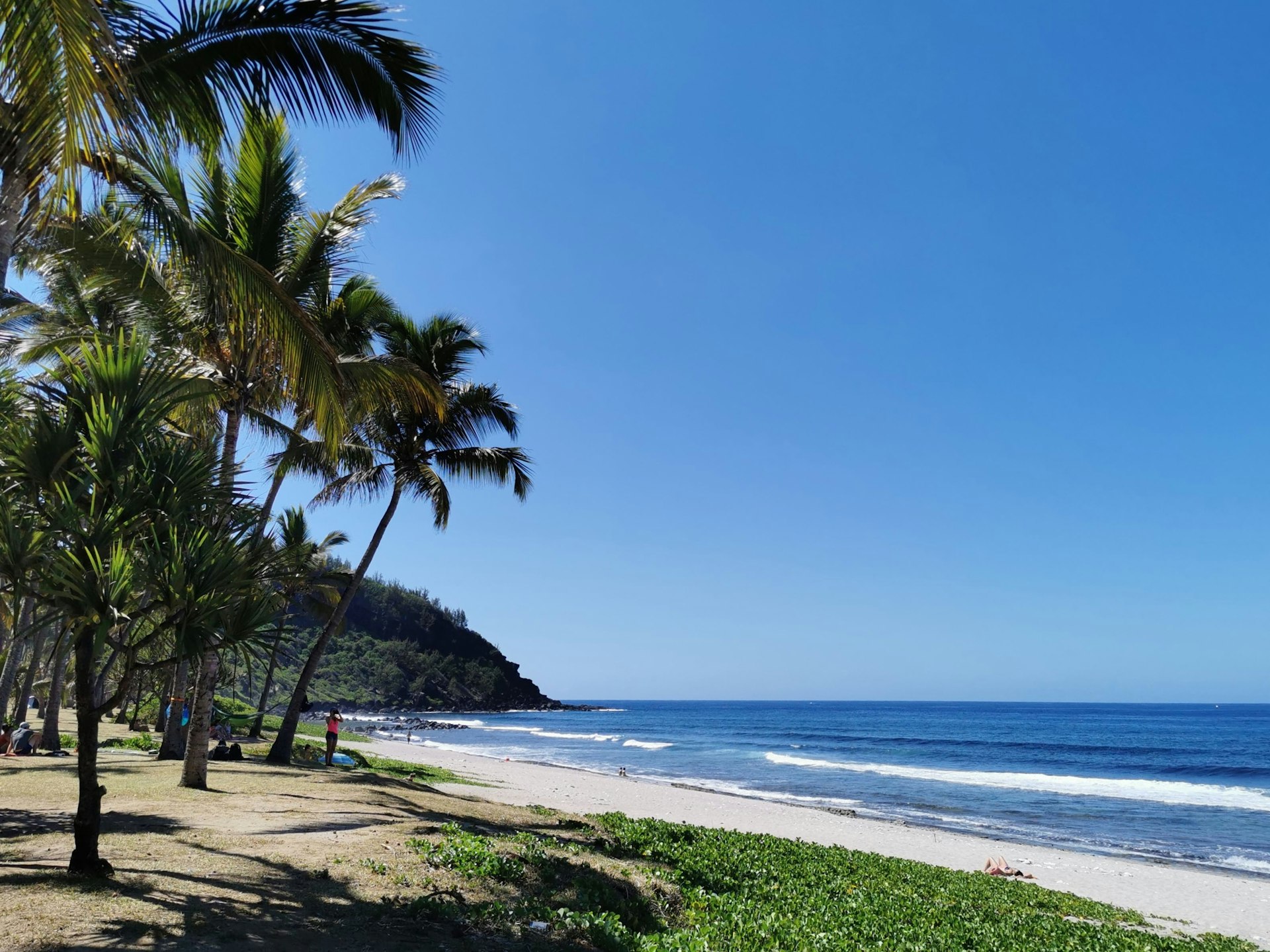
Cultural festivals
La Réunion has been populated by people of various ethnicities over time. Today, it is a melting-pot of African, Malagasian, Indian, Chinese and European origins. Communities, traditions, beliefs and ways of life have blended to form a unique culture on the island, commonly called Creole (to be understood as local). Get to know the island’s multicultural background through museums, but also by visiting religious venues, such as the Hindu temple Le Colosse in Saint-André, or the Chinese Guan Di temple in Saint-Pierre, the largest venue of its kind in the Indian Ocean as of today.
Look at the calendar to find out if you can witness some of these highlights: a Walk on Fire performed by the Tamul community (December-January) to honor Goddess Pandialé; the Chinese Guan Di festival (generally in July or August); or else the Hindu celebration of Light, Dipavali (November). Strangers are welcome to attend all of these celebrations. Some of them are even designed to share the community’s culture with outsiders.
Local canteens and markets
When traveling to Réunion, food is a must. Only through local cuisine will you completely understand the perfect multicultural blend and the list of local specialties is very long. You will find typical meals in La Réunion are shaped by Chinese, Indian, African, French influences and many others.

Eat your heart out at beach snack-bars with bouchons (steamed meat dumplings), samoussas (fried triangular snacks often stuffed with spicy meat), bonbons piment (spicy chickpea snacks). Don’t hesitate to enter canteens offering caris , the local dish with almost infinite variants (meat or fish cooked in a more or less spicy sauce). The most typical will be cari poulet (chicken), rougail saucisse (pork sausage) and cabri massalé (Indian masala goat). If you want to go a little fancier, choose civet zourite (octopus).
Last but not least, select the best tropical fruits at the markets, especially in December-January: mangoes, lychees, pineapples, anons, longans… delight awaits!
You might also like:
Check out this gorgeous colorful hotel in Mauritius World Lemur Day celebrates Madagascar's incredible and endangered animal Madagascar: your guide to adventure travel
Explore related stories
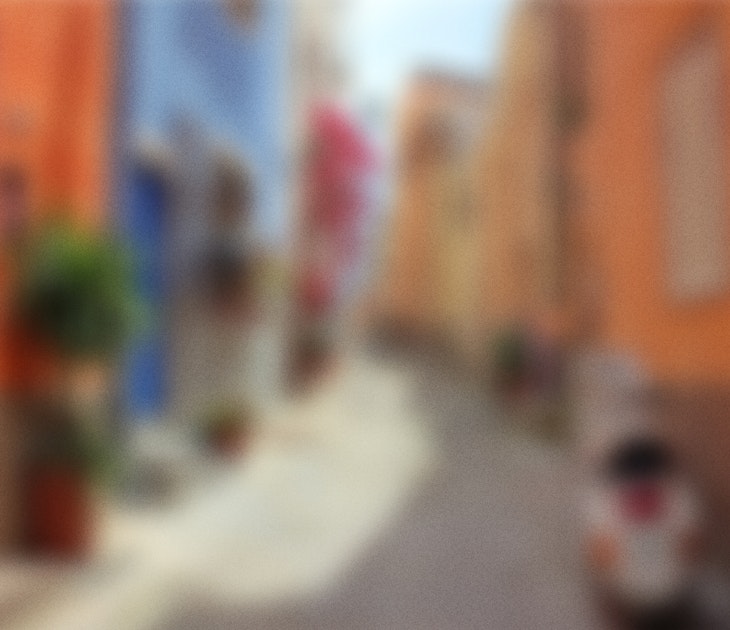
Aug 17, 2010 • 3 min read
Forget Hollywood fripperies, Madagascar is like no place else on earth. We've cherrypicked four unforgettable things to do in this truly unique place.
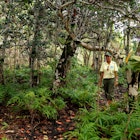
Dec 19, 2022 • 6 min read
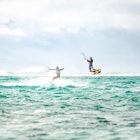
Dec 11, 2022 • 6 min read

May 21, 2022 • 6 min read
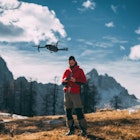
Apr 28, 2022 • 6 min read
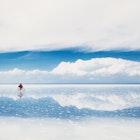
Mar 10, 2022 • 7 min read
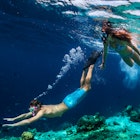
Jan 26, 2022 • 5 min read
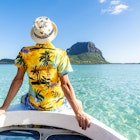
Jan 8, 2022 • 8 min read

Jan 20, 2021 • 6 min read

Nov 30, 2020 • 5 min read
Explore Reunion Island
Plan your trip to reunion island: best of reunion island tourism.

Essential Reunion Island

Trending in the forums

Reunion Island Is Great For
High-octane.
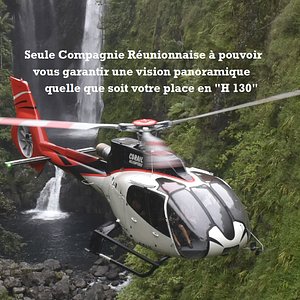
Eat & drink
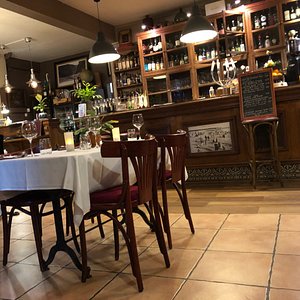

15 Amazing Things To Do on Réunion Island (+ itinerary)
When I researched the best things to do on Réunion Island, I came across tons of websites in French, which makes sense, as Réunion Island is an overseas department of France.
But it made me think of all the non-French-speaking people possibly missing out on this peculiar island.
Think dense, green jungle and marvellous volcanic mountains with endless hiking possibilities; a food scene mixing Creole exotism with French culinary standards; a warm and welcoming culture with family-style accommodations, all surrounded by sandy beaches with perfect weather all year round.
After focusing on Europe for a while with an extensive road trip in Catalonia , Spain, and another one in Scotland (not to mention a failed one in Italy we would love to forget), we desperately needed some far-flung destination.
Little did we know that I would get pregnant right after booking our flights to Réunion Island. This meant we had to adapt our usual travelling tempo: we didn't hike as extensively as planned and stayed longer at each destination - which was fine.
We still managed to get all the major highlights in our two weeks trip.
And so, here are 15 of the best things to do on Réunion Island - have fun!
Don't have time to read this now?
Pin it for later!

DISCLAIMER: This blog post contains affiliate links, which means we earn a tiny commission every time you book through one of our links at no additional cost for you
What And Where Is Réunion Island
Before diving into the activities, here's a little introduction to the island.
La Réunion Island is a trendy destination for French residents because, for them, it has many advantages that other tourists might not have.
For example, French people and Europeans generally don't need a passport to get there. A simple ID card suffices.
Also, Réunion Island is a French department, so, like in France, you pay in Euros .
And the most remarkable thing we experienced? You're in the middle of the Indian Ocean, but we Europeans have no roaming fees. You can use your mobile plan just like at home.
For all others, I recommend getting an App like Airalo , which allows you to buy e-sims with a specific amount of data. It's cheap, their service is good, and it will enable you to use the internet when away from a Wifi-network without seeing your bill explode.

Beautiful West coast of La Réunion
Coman i lé?
While the official language is indeed French, you will most likely hear a Creole-French mix when they talk to each other. Also, some words are not your classic school French but are used daily.
For example, a case refers to a house. You won't find any maison anywhere, only cases . Your children will not be enfants , but marmaille . And when our host told us we had to get cash, it was because there was no gabier in the neighbourhood. I am a native French speaker and had never heard that word before.
Nevertheless, if you speak decent French, you will get by anywhere. English works quite well, too, with hosts used to international guests.
La Réunion Island in a nutshell
- Réunion Island is a gorgeous tropical island in the Indian Ocean
- The island is a French oversea department and, thus, technically, in France, with Saint-Denis as the central city
- The official language is French, though they also communicate in Réunion Creole
- La Réunion was created roughly three million years ago - which is relatively young - when the Piton des Neiges volcano emerged from the sea after an eruption
- A particularity is the number of cirques , volcanic calderas formed after several eruptions
- The island has a surface of about 2500 km² with 863.000 inhabitants, most of them living on the coasts
- Harsh volcanoes, magnificent cirques and dense jungles dominate the middle, with a few villages only reachable by foot or helicopter
- The main activity is hiking, best done in multi-day-treks
- Réunion's culture is a mix of French, Creole, African and Indian influences, generated mainly by the sad slavery history
- Discovered by the Portuguese voyager Pedro Mascarenhas in 1507, it wasn't adequately colonised until the 1660s by the French, who brought enslaved people and workforce with them - there were no people on the island before that
- Until 1794, and once again until 1848 after a brief Napoleon-hiatus, the island's name was Île Bourbon - the reason why vanilla from the Réunion Island (and Madagascar) bears the name Bourbon
When To Visit Réunion Island?
Compared to Europe or North America, La Réunion seasons are opposite:
Mai to November is the "Austral winter", the cool season. But cool, in this case, still means about 25°C every day. The significant advantage is that it hardly ever rains (except on the East Coast), and there is no risk of cyclones. On the other hand, the sun goes down at 6 pm at the latest, and it gets dark quite quickly.

Lovely (early) sunset over La Saline Les Bains
"Austral summer" is from November to April: very hot, very wet. Big thunderstorms and cyclone risk. And also a lot more cloudy during the day.
Winter is thus preferable for hiking and water activities (better visibility); June is the calmest month. We went in May, which was also fine, but there are several national holidays in France during that month, so many métros (what the people from the Réunion call the French) are here to enjoy their days off.
How To Travel To Réunion Island?
All flights to Réunion Island pass through France, specifically Paris Orly, Charles de Gaulle and Marseilles Airport. This might be inconvenient depending on what part of the world you are travelling from.
From Paris, though, the flights are always direct (usually operated by Air Austral - a pretty good company!) and take about 11 hours.

The food on Air Austral flights is French standard - not bad at all
As Paris is well-connected will the whole world, getting to La Réunion Island is very easy for Europeans, maybe a bit less for others.
The best way is to research all the possible connections through Skyscanner , where you can choose different connecting airports and are sure to get the best possible deal as they compare all kinds of flight providers.
How To Get Around on Réunion Island?
While public transportation is doable and hitchhiking safe, renting a car is the best way to explore the whole island.
I think Rentalcars ( click here to get straight to Rentalcars' main site ) is still the best online platform to rent a car. It's easy and secure, with a wide choice of price ranges as they directly compare rental companies.
Plus, you can choose your extras and the insurance up front, which spares you the hassle of dealing with dishonest companies that want to upsell extra insurances you don't need.
That's not the case in La Réunion, but they tried to do this in Santo Domingo and Mexico, for example.
We had a little Hyundai, big enough for the both of us with luggage, and paid 350 € for two weeks, all insurances included.
Where To Stay on Réunion Island?
We would suggest looking for accommodations in four principal areas: Saint-Denis, Hell Bourg, Saint-Pierre and Saint-Paul.
Having a base camp in at least three of these four corners is the perfect opportunity to explore the entire island.
Saint-Denis
Booking an accommodation in Saint-Denis isn't the top priority, but it can be practical if your flight lands at night. Other than that, I would not recommend staying too long in the city.
Appartement Chez Andy | Here's a cost-efficient option for one night in the city; much cheaper than a hotel and with great reviews
Appartement Le Pétrel | Another apartment but for a different budget; spectacular view over the city and the sea
Villa Angélique | A charming boutique hotel in a historic building; the advantage here is that you can book with breakfast
Hell Bourg is a very small town, most of the accommodations lie a bit outside of the centre like in Salazie - but it's still very close.
L'Orchidée Rose | Small guest house close to the centre of Hell Bourg offering simple, but lovely, rooms, reasonably priced
Villa Le Jacaranda | An entire villa with two rooms, price-quality perfectly fine; the reviews are great; ideal if you want to spend a few nights
Chambre d'hôtes des Agrumes | This is where we stayed for three nights; big, charming bungalows in a gorgeous private garden; good breakfast and lovely hosts; this isn't an affiliate link as you book directly by mail or phone with the owners, no booking platform - highly recommend this

The bungalows at Chambres d'hôtes des Agrumes
Saint-Pierre
Appartement 98 bis rue Suffren | A privately owned apartment, perfectly located; very spacious and modern, with a great host; comes at a low price
La Kazaka Terre Saint | Gorgeous little hotel, right next to the beach; beautiful interior and a great breakfast
Maximin Mon Coco | This is where we stayed, in a small town called Les Avirons ; location-wise, it's not great as you have to get up and down the hill every time you want to visit something, but the apartment was terrific, with an excellent pool and a great host; we stayed for almost a whole week (not an affiliate link, just an honest recommendation!)

Our lovely AirBnB in Les Avirons
Le Caillou Blanc | In the centre of Saint-Paul, with a fantastic terrace overlooking the sea; great reviews, lovely decorated and inexpensive
thomlocation | A holiday bungalow, very spacious with all amenities to spend a few nights; there is even a jacuzzi on the premise for all guests
Appartement La Saline Les Bains | This is where we stayed (again: not an affiliate link), which wasn't in Saint-Paul, but in La Saline Les Bains; it is ideally located near the best beaches, like La Saline Les Bains and l'Ermitage; the apartment was simple, but the view from the garden magnificent - especially at sunset

The sunset view from our AirBnB in La Saline Les Bains
15 Amazing Things To Do on Reunion Island: Our Itinerary
As mentioned, I didn't know I was pregnant when we booked our flights and started our research. So we planned lots of hikes and our itinerary around these.
Once it was clear that we would have to adapt to the new circumstance, we kept the general itinerary but replaced some of the hikes with viewpoints accessible by car. Which, in hindsight, isn't bad either because I'm not sure how well my asthma would have coped with hikes in the tropical heat.
We still managed to see practically all the main highlights of Reunion Island, all in a much slower and safer tempo for a pregnant person.
Here's the itinerary for the Réunion Island we created and followed to maximise our two weeks stay - pregnant or not; it shows everything the island offers.
Like mentioned in the Where To Stay - section, our base-camps were in Hell Bourg, Les Avirons (near Saint-Pierre), and La Saline Les Bains (near Saint-Paul).
1. - Start With a Glimpse of Colonial History in Saint-Denis
Saint-Denis is the central city on the island and its economic and administrative capital.
Despite being located on a tropical island with various influences from foreign cultures, the general feel is European - the traffic jams mornings and evenings alone make you feel at home...
I would consider Saint-Denis as more of a stop-over on your way down. You will most likely arrive at the airport here, and it's also there that you want to get a rental car to explore the rest of the island.
There are a few exciting corners, like the Rue de Paris with the museums, the Tamil temple Kovil Kalikambal or the Maison Carrère . Still, Saint-Denis is also the loudest and probably the unsafest city in La Réunion.
But it's also here that you get a clear picture of how different cultures and religions can coexist in harmony: Tamil processions, Chinese stores, Creole restaurants, Muslim muezzins calling to prayer, all mixed with the typical French driving style and supermarkets that are all too familiar to Europeans.
2. - Visit The Most Creole Town on The Island: Hell-Bourg And Its Region
Welcome to " Les Hauts ", where the cases créoles are the most authentic, where the spiders are the size of your palm, where your eyes will turn green from all the vegetation, and your lungs rejoice from the amount of oxygen in the air.

Les Hauts : a mix of tropical jungle and European forests
You will want to plan a few days in this area, as there is so much to see.
The name is misleading in English: I can assure you that hell is nowhere to be found here. Except maybe in the form of spiders (the black and yellow Nephila Aurata) if you have arachnophobia. They are everywhere. They are huge. They are black and yellow.
But they aren't venomous. Their bite hurts, but it won't kill you.

The Nephila Aurata is very present in Les Hauts
Picturesque Hell-Bourg
Located amid the Cirque de Salazie and an ancient thermal station, the town was named after French admiral Anne Chrétien Louis de Hell , the island governor during the 19th century. "Bourg" is a French term for a small town or village.
The advantage of sitting on a hill inside a caldera is that the climate is much softer and less hot than elsewhere. The Bourgeoisie chose this area to build their holiday homes, away from the noisy Saint-Denis.

Hell Bourg, after the clouds have descended
Water trickling down from the surrounding mountains made it a success during the 19th and early 20th centuries. Unfortunately, a cyclone in 1948 had the principal source vanish, and the thermal activity stopped abruptly.
Nowadays, Hell-Bourg's primary source of income is tourism.
The town is a typical colonial town with colourful Creole houses, many little restaurants and a few excellent hiking possibilities.
Things To See in Hell-Bourg
Several little hikes depart from Hell-Bourg. One is particularly interesting as it's a pedagogical trek created by young students that relates the history of slavery and the marrons , a name given to enslaved people who escaped and started a new life in "the wild". It's about a 4.4 km round-trip, reasonably easy, with a bit of height to battle (roughly 250 m).
The parking at the start of the trek is located here , just follow the signs after that.
Another one is the Trois Cascades hike: quite steep initially, but the outcome is a series of three little waterfalls (hence the name) in a shadowy corner in the middle of the jungle. About 2.5 km round-trip, all the way up and the same way down (ca. 300 m elevation).

The main waterfall at Trois Cascades
Don't forget to bring a bathing suit for a refreshing dip near the most prominent waterfall - it's a bit tricky to get there as the path is hidden behind a bamboo forest (to the left of the chapel) and overgrown, but it's certainly worth the detour.
Find the location of the Trois Cascades here .
On the way to and from the other attractions, you will certainly pass the Cascade du Voile de la Mariée (meaning: waterfall of the bride's veil) a nice photo stop along the road which you can find here .

La Cascade du Voile de la Mariée
La Maison Folio
The Maison Folio is a typical case créole from 1870, still inhabited by the oldest member of the Folio family. Therefore, only parts are accessible to the public - she needs a bit of privacy.
Either visit on your own with a map and some info on a piece of paper - though Sebi managed to get the English version on mobile - or as a guided visit.
Very well maintained and preserved authenticity; worth to check it out.

La Maison Folio: a gorgeous house but linked to a sad history

Quick info - La Maison Folio
Opening times:
- Every day from 9.30 am - 11.30 am and 2.30 - 5.00 pm
Entry fee: 4 € when visiting alone (with a info-pamphlet), 6 € with a guide; free for children under 11 years old
Possible to combine with the Musée des Musiques et Instruments: 9 €
Le Musée des Musiques et Instruments - Maison Morange
Nestled inside a lovely house from the 1930s, this innocent-looking museum bears a rather large (private) collection of instruments worldwide.
This is an adorable thing to do with kids on Réunion island, as the museography is very educational and interactive, with screens and videos for the whole sound experience.
Quick info - Le Musée des Musiques et Instruments - Maison Morange
- Tue-Sun 10.00 am - 6.00 pm
- Closed on Mondays
Entry fee: 7 € , free for children under 8 years old
Possible to combine with La Maison Folio: 9 €
The cemetery
Here's a free activity in La Réunion: visit a cemetery.
Those who know me know my fascination with cemeteries, especially centuries-old ones. I love walking around and curiously examining the dates on the markers, wondering what these people did in life and how they came to die.
I guess that's partly because, as an archaeologist, digging into people's past is my job.
Side note | If you're new here and want to know more about me and my travel partner, check out the About Us section.

Hell Bourg's fascinating cemetery
Eerie Fact: one of the most notorious criminals on Réunion island, a fellow called "Zitte", lies in this cemetery. That is to say: his body does. To be sure of his passing, he was decapitated, and his head was sent to Saint-Denis. His spirit is said to be still lingering somewhere between both cities.
La Mare-à-Poule-d'Eau and the ancient thermal springs
We didn't know what to expect after this very short and easy hike, but not a vast yellow pond, the Mare-à-Poule-d'Eau . It's not the most spectacular sight, but still a refreshing area for a picnic - which is what most Réunion families do anyway on weekends (literally everywhere).
The ancient thermal springs are also visitable, but there isn't much to see except for a few ruins. Their history is notable, though, because these were the first on the island and extremely popular from the 1830s until the ones in Cilaos became more important.
Find the Mare-à-Poule-d'Eau here .

Hard to tell that it's a lake, without the hole: La Mare-à-Poule-d'eau
3. - Feel Small in The Rain Forest of Bébour et Bélouve
The hike of the Bélouve forest is one of the most gorgeous hikes in the Salazie region.
It's about 3 hours for a round-trip that leads through the rain forest with thick vegetation, feeling very outer-worldly and primal until reaching a platform with beautiful views of the Piton des Neiges and the Cirque de Salazie .
Most of the plants here are endemic, which is particular as lots of European fauna found its way to the island during colonisation. This means that one minute you see the invading chouchou plant taking over the scenery, and the next, you drive on a maple tree-bordered street with leaves turning yellow and red because it's technically "autumn".
Although autumn and winter in La Réunion still mean 25°C every day...
Hiking these two forests is also possible as a guided group hike .
The Bélouve forest is located here .
4. - Get Up Piton Des Neiges At Sunrise
Here's one thing to do on Réunion Island that we, unfortunately, had to forgo as it would have been irresponsible in my current state: hiking up the highest mountain on the island, the Piton des Neiges (3071 m altitude), before sunrise.
The scenery opening up before you in the early morning, revealing the cirques of Cilaos and Salazie and the surrounding hills, must be breathtaking. If you are in the proper condition, not asthmatic, pregnant, or otherwise struggling with your health, this is a must-do.
But even for healthy people, it's pretty challenging as there are no less than 1700 m in elevation to battle.
Good to know :
This goes for all hikes in La Réunion: Always start early in the morning as the mist descends from the mountains between 9 and 10 am and blocks every gorgeous view you want to see.
Also: take warm clothes when hiking up one of the hills - despite the tropical climate, it gets pretty cold at 2000-3000 m altitude...
5. - Explore The South-Eastern Coast: Saint-Pierre And Surroundings
Before heading down to Saint Pierre, where we had our next base camp, we stopped by the Takamaka Waterfall viewpoint, which you will find here .
It was a bit of a detour and a quite strenuous one involving lots of hairpin turns, but the drive through the green groves, past sugar cane fields, and the majestic view of lush hills with row upon row of waterfalls is reward enough.

The Takamaka waterfall viewpoint
Given that this is the wettest area on the island - and apparently in the world - expect a bit of rain and mist whenever you visit.
There is also a trek that leads down to the valley, which we didn't do for obvious reasons, and you can even dip into the natural pool at its base.
Saint Pierre's Weekly Market
Saint Pierre 's weekly Saturday market came third at the national championship of "most beautiful markets in France" in 2019 (yes, it still feels strange that this gorgeous, tropical island is indeed technically "in" France). By all means, it is lovely.
Stalls upon stalls with neatly stocked fruit in all kinds of sizes, shapes and colours; rows of handcrafted jewels and trendy clothes; the smell of freshly made samoussas , bonbon-piments , rouleaux de printemps and spices of all kinds (vanilla!), Creole music floating all over the place and people smiling at you for no reason: that's what you get at Saint Pierre's marché forain .

Saint-Pierre's Marché forain
I would suggest coming early, as it gets very crowded around noon - everyone wants a cheap and delicious lunch from the market. For example, you can get as many as ten samoussas for barely 3 €.
Also, the heat sets in as early as 9.30 am, and though the stalls are all under canvas, it can get rather hot with the crowds.
Add to that the scenic location right next to the sea - find it here - couldn't be more perfect.
Quick info - Saint-Pierre Market
- Sat 5.00 am - 12.00 pm
Around Saint Pierre: Saint-Leu And Kelonia, The Sea Turtle Sanctuary
Kelonia , located in Saint-Leu , might not be on everyone's bucket list when visiting Réunion Island. But it is undoubtedly an exciting activity, especially with kids, if only to support their efforts.

One of the injured sea turtles getting food in the convalescence basin
Kelonia is a nursing station for injured sea turtles. Brought here by local fishermen, who started the initiative, with most injuries caused by humans (fishing hooks, stomachs full of plastics, nets around their flippers), they first get treated in the intensive care unit in separate basins.
After the initial treatment, they are brought to a convalescence area, where they stay for quite a long time. The goal is to feed them until they are strong enough to be released back into the wild. This can take some time as these poor creatures are usually fragile when they arrive.

The convalescence area and the beach for the releasing in the back
The release is always done together with local school classes; each class gets to adopt the released sea turtle.
The whole complex is well thought out, with many explanation panels, interactive screens, a museum about the history of La Réunion and the turtles' behaviour, and a significant focus on how climate change affects it.
Quick info - Kelonia
- Mon-Sun 9.00 am - 6.00 pm
- Closed on public holidays
Entry fee: 8 € , possibility to get an audioguide for 2 €
Étang Salé: volcano sand beaches
Étant Salé is probably the best beach in this part of the island.
Don't expect pearly white sand and turquoise waters like in Maupiti, French Polynesia , or Caye Caulker, Belize , though: it is still a volcanic island after all, and thus the sand you find here is more of a dark ashen grey.

Étang Salé beach shortly before sunset (5.30 pm)
It's still an excellent spot for a swim, snorkelling, or sundowner.
Speaking of which: the sun sets early! Expect around 5.45 pm during the Austral winter and around 6.45 pm in summer.
The Étang Salé beach is located here .
Avoid the beaches on weekends: Réunion families love their weekly picnics on Saturdays and Sundays.
They get up early to save the best spot and, later on, bring big pots and pans filled with Creole deliciousness to spend the whole day together.
6. - Get To Know The Island's Fauna at Domaine Du Café Grillé
Here's an activity that wasn't on our plans but came highly recommended by our host: Le Domaine Du Café Grillé , an impressive Creole botanical garden showing off the history of the island's fauna.
The plants are structured chronologically, and the walk through the garden takes you back from 2022 to 1665.
Inside the (big) shop, a 10-minute video shows the process of cultivating and roasting coffee, the primary industry in La Réunion before sugar cane took over.
At the Domaine du Café Grillé, which is located here , they roast their coffee beans of the Bourbon pointu variant (hence the name of the café grillé), which you can taste and buy in their shop/café.

Enjoying our babymoon at the Domaine Du Café Grillé
Quick info - Le Domaine du Café Grillé
- Mon-Sun 9.30 am - 5.00 pm
- Closed for three weeks in June
Entry fee: 7.50 € without a guide, 9.50 € guided visit; half-price for children under 12 years old
Count minimum 1.5 hours for the guided visit; protect yourself against the mosquitoes!
7. - Visit One of The Impressive Tamil Temples in Saint Pierre
Nassaringua-Perournal is the largest Tamil temple on the island. An enjoyable visit if you want to know more about the Hindu culture in La Réunion.
Don't forget to dress decently: no showing arms and legs, no leather (!).
Karli is a lot smaller but considered the most beautiful Tamil temple on the island.
Nassaringua-Perournal is located here , and Karli here .
8. - Get Familiar With The (Somewhat) Sad History of Sugar at Stella Matutina
Without learning about the intrinsically linked sugar history, you can't know the real La Réunion.
The Musée Stella Matutina , located in Piton-Saint-Leu right next to Saint Pierre, is a vast museum complex set inside an old sugar factory that was active from 1858 until 1978.
Several thematically and chronologically arranged installations lead the visitor through the history of sugar exploitation since the 19th century.
A particular focus is put on slavery, which was, sadly, very dominant in La Réunion (and neighbouring islands Mauritius and Madagascar, for that matter).

Heavy machinerie for sugar cane exploitation at Stella Matutina
The visit continues with a very personal exhibition of portraits and testimonies of ancient workers before ending with an introduction to the Creole culture and its particularities (like a typical boutik sinoi , a traditional supermarket held by Chinese immigrants, authentic rhum-ads or a multi-coloured bus).
Don't hesitate to stop by the gift shop; there is a whole array of souvenirs for the people at home centred around sugar. I, for example, brought several types of spiced sugars for my grandma, among which a brown sugar perfumed with combava , a citrus-like fruit prevalent on Réunion Island.
Quick info - Musée Stella Matutina
- Tue-Sun 9.30 am - 5.30 pm
- Closed on Mondays and certain public holidays
Entry fee: 9 € + 2 € for the 4D cinema experience (optional)
Count about 2 hours for the whole visit
9. - Explore Creole Cuisine Through a Cooking Class
Speaking of combava , cooking classes are hard to find on the island, but it's a delicious experience if you do.
We were fortunate that our host was willing to show us exactly how to make the famous rougail-saucisse with gratin de chouchou, and it's been a regular in our kitchen ever since.

Our host Joël teaching Sebi how to make the rougail-saucisse
A quick explanation of these delicacies: a rougail is a kind of (spicy) stew, generally with traditional smoked sausages. It's served with a gratin of chouchou, a local vegetable used in all types of dishes, both savoury and sweet.
Chouchou (also known as chayote in France) is commonly called the "king of vegetables" as it's versatile and grows quickly. The plant has big green leaves, entwining around trees, sprawling everywhere, leaving a bright green carpet on the scenery. Although initially from Mesoamerica, the Réunion Island adopted it as their "national vegetable".
Creole food is rich in flavours and spices and not complicated to make if you know the secret tricks and have the right ingredients. For example, the sausage for the rougail is hard to find elsewhere, at least not with the same intense flavour.

Sebi's first rougail-saucisse on the island at restaurant Villa Marthe
I found a Creole cooking class on Tripadvisor if you like to dive deeper into culinary delights.
Or else, ask your host if they are an avid cook and would be willing to initiate you.
Also: beware that the rhum arrangé , meaning rhum with all kinds of fruits and spices added, is the speciality of the Réunionnais . They gladly offer you a glass of their homemade variation at every meal. The sweetness of some of them is treacherous, so be cautious...
10. - Head To The River Langevin For Some Canyoning And Waterfalls
Canyoning in the river langevin.
Book something like this canyoning tour in the Rivière Langevin in advance to be sure that there are spots left - not many offer these tours, and during high season, you won't find an available provider as places to do this safely are scarce.
Cascade De Grand Galet
For those who travel with a chronic disease (see the best tips on how to travel with IBD here ) or are pregnant, here's a lovely sight not to miss, one easily reachable by car: the Cascade de Grand Galet , located here .
If you came unmotorised to the island, here's a driving tour which explores all the attractions along the Langevin River, including the waterfalls.
Please forgive the bad quality of the photos, it was shortly before noon, so the sun was very high, and it was nearly impossible to get a good picture without those damn light flares. But you get the picture.

Cascade de Grand Galet
So here's a little tip: get there early morning or late afternoon, maybe right before or after your canyoning tour.
If you don't do a full-day tour and need a lunch break, look for a quiet spot along the river for a picnic. It's a bit windy along the river, and that's very refreshing in this tropical heat.
Don't sit too close to the water, though. The river is home to a hydraulic station, and at some point, they might open de watergate, and that's when the water rises fast. Signs are posted everywhere that strongly advise against swimming in most parts of the river.
Hence: the need to book a safe tour; tour operators know the spots that aren't dangerous for water activities.
One of these safe swimming spots is not far from the main waterfalls and even has a little cascade . Of course, Sebi had to jump in - it's what he does. Every waterfall we ever saw, be it in the Dominican Republic or Croatia - hell, even the icy rivers and lakes in Scotland in the middle of October: he would always jump in.

One of many jumps Sebi enjoyed in this particular spot
11. - Visit One of The Numerous Vanilla Farms on Réunion Island
The truth is, vanilla is sold at every single market in La Réunion. Moreover, during high season, plenty of little vendors are along the road.
The problem is that there are huge differences from one vanilla to the next, and you might end up overpaying for a mediocre quality product with barely any vanilla aroma.

Traveller's tip :
Always look for dark brown, dried beans, not fresh ones.
Fresh vanilla beans don't have the typical aroma yet, as this only develops during drying. They should be sticky and flexible.
We went to l' Escale Bleue , near Saint-Philippe, as it was on the way to see the cold lava streams. They offer a guided visit to their farm, where they humorously explain how vanilla is made (a process that takes nine months for the aroma to develop!).
When you buy vanilla beans from the supermarket, you have to cut them open and scrape out the little dark crumbs.

They look like regular beans but they will be so fragrant after drying
Well, this family-owned vanilla farm has developed a procedure that allows the dried bean to be used whole and thus have a stronger taste. I will spare you the details, but I bought some of these beans for my dad, and the flavours are remarkably intensive. For example, a piece of barely two centimetres is enough for one litre of milk.
It's pricey, but nothing compared to what we pay in Europe for a single bean that can only be used once.
L'Escale Bleue, located here , also offers an array of products made with smaller vanilla beans that don't get sold, like sugars, drinks, sweets, scrubs, etc.
Quick info - L'Escale Bleue
- Mon-Sat 9.30 am - 5.30 pm
- Closed on Sundays
Entry fee: free for the shop with a little introduction, 5 € for a guided visit of 30 - 45 minutes.
Don't forget to buy their little glass containers - you will need them to store the vanilla beans
We stopped by the Jardin des Parfums et Épices de Mare-Longue on returning to Saint Pierre. This botanical garden is considered another amazing thing to do on Réunion Island.
Still, if you arrive in-between guided visits, there is hardly anything to learn: no signposts anywhere, very unlike the Domaine du Café Grillé we visited earlier.
Find the Jardin des Parfums et Épices here .
12. - Drive Along The Coast To Contemplate (Cold) Lava Streams
The road from Saint-Philippe to Piton-Saint-Rose is the most prolific area for lava streams due to the orientation of the active Piton de la Fournaise.
No building activity is allowed on this part of the coast - who would want to do that anyway? Knowing that the volcano erupts at least once a year.
Granted, not every eruption is followed by a massive lava river flowing down to the sea, but still. The most impressive ones are from the eruptions of 2007, 1998, 2001, 2002, 2004 and 2005.
2007 was probably the biggest (recorded) eruption that created two new beaches and a platform with lava fountains as high as 200 m, acid rain, and explosions along the coast: an insane firework.
Some streams are still more visible than others; nature has already taken back parts of them by spreading hardheaded vegetation on this rather hostile ground.

The 2007 lava stream down to the sea
The stream from 2004 is the only one that formed proper lava tunnels that can be visited during a guided speleology tour like this one here . Just make sure you're not claustrophobic. Or pregnant. We didn't do it because of the latter.
While I myself am a little claustrophobic, my experience in the Crystal Cave in Belize showed me that one can overcome these fears.

Each eruption with massive lava flow towards the sea contributes to increasing the available size of the island by adding land masses along the coast.
The village of Saint Joseph was built on one of these platforms created by the volcano.
13. - Admire A (Very) Active Volcano at Piton De La Fournaise
I give you: one of the most incredible things to do on La Réunion Island considered the number 1 attraction.
Given that a volcanic eruption is at the origin of the very creation of Réunion Island, the people here have adapted to and adopted the Piton and genuinely admire it.

Piton De La Fournaise with the main crater on the right in the back: you can see where the lava came down in September 2022
A Young Volcano
Piton De La Fournaise was born 500.000 years ago, which is relatively young for a volcano. And for roughly 400.000 years, the largest mountain on the island, the Piton Des Neiges - noticeably older by eight million years - was active simultaneously. But the old man is dormant now; its last eruption was 12.000 years ago.
Unlike other active volcanoes, Piton De La Fournaise is much more innocuous because it's an effusive but not explosive volcano. This is why, during some eruptions, you can even hike around the volcano while contemplating glowing red-hot lava streams along the way.

Sebi marvelling at the volcano, hoping that it'll erupt soon
The only real danger is when the direction of the stream changes and affects populated areas, which hardly ever happens - or at least not since modern science allows us to predict the direction of the flows precisely.
The Piton De La Fournaise is under 24/7 surveillance; nothing escapes their measurement equipment.
How To Get To The Piton De La Fournaise
There is only one road leading to the crater, the RF 5 (" route forestière du volcan "), a scenic route with various viewpoints along the way, like the Nez de Boeuf (2050 m altitude) overlooking a breathtaking gorge.

The Nez de Boeuf gorge in the morning
Hiking to the crater's edge, located here , is possible and even recommended, provided an eruption isn't actively going on. We visited the volcano area when an eruption was deemed likely "within the next few days or weeks", so portions of the trails were closed off.

Eruption probable in the next few days - be careful and stay on the path
Check out this helicopter tour for another view of the volcano, ideally when it's erupting. Or get a guide for an epic sunrise tour of the volcano.
Don't skip the Plaine des Sables viewpoint on the way to or back from the central crater: the road is awful here (the worse portion - the rest of the route forestière is in excellent condition), but the scenery is outer-worldly. A brown-reddish Martian valley that strongly reminded us of some parts of the Wadi Rum desert .
There's also an excellent guided tour of the 2004 lava tunnels worth checking out if you're not pregnant (or claustrophobic).

Moon landscape at the Plaine des Sables
14. - The Absolute Best Thing To Do on Réunion Island: Embark on a Multi-Day Hike in Cirque de Mafate
Side note: we didn't do this ourselves, for obvious reasons, but it will remain on our must-do list until we return someday.
The Cirque de Mafate is probably the wildest of the three cirques on the island (the other two being Salazie and Cilaos ).
The central part of its 100 km² is cut off from the rest of the island, with about 800 people living in little villages called îlets dispersed in the vegetation. The îlets are only reachable by foot or helicopter (we incidentally witnessed their monthly refuse collection service in action, done by ... helicopter).
In total, five hills surround this cirque, rendering it thus inaccessible by roads. But that's precisely Mafate's charm.
I won't go into detail about the various hikes in Mafate since we couldn't do them, but for the best experience, you have to schedule at least five days inside the cirque to visit all the îlets .
Two main trails, the GR R1 and GR R2 , go across Mafate, and another one, the GR R3 , goes around it.
Six departure points on all sides are available to start your multi-day trek, but you must research them carefully as their degree of difficulty varies greatly.
Hiking in Mafate
Always carry a good site map, enough water and food, a flashlight, light shoes for crossing rivers, and everything you might need to spend a few nights in primary villages. Also, if you stay at the guesthouses, reserve the meals beforehand - they need time to get the groceries...
Word of caution: don't leave anything in the car if you leave it at one of the main parking lots near the departure points. As it's common knowledge that people parking there will be gone for a few nights, it's an open invitation for break-ins.
If you can't hike but still want to admire all of the cirques and especially Mafate, a helicopter flight is an absolute thing to do on Réunion Island for those who have money: it's expensive. We didn't do it because helicopters weren't recommended in my then-precarious pregnancy phase, but it is highly recommended by anyone who has done it.
Here's a tour offering the best sights of Cirque de Mafate from above.
Le Belvédère du Maïdo
Another possibility to get a glimpse of the grandeur of Mafate: the Belvédère du Maïdo .
It's THE best viewpoint on Réunion Island, and we loved it so much that we got up there twice.
Just kidding: the first time we tried was coincidentally the day France's Prime Minister went up there to plant something, a random political act. And so, for security reasons, we weren't allowed to drive to the top, only hikers. However, we didn't know that until we had almost reached the top (after more than one hour on sinuous and bumpy roads) and had to turn around at the last minute.
We got back up the next day, and it was worth the wait!
Here again: get there before 9 am at the latest. We arrived around 9.30 am, and already the clouds were beginning to seal the view. Half an hour later, you could barely see anything through the thick mist.
Find the Belvédère du Maïdo here .

From the Maïdo: the little îlet down there is Roche-Plate
15. - End Your Réunion Island Itinerary Around Saint-Paul
L'ermitage les bains.
An island trip isn't complete without at least a little bit of beach fun, and the region of Saint-Paul is ideal for that purpose.
Saint-Paul is located on the côte sous le vent , meaning "the coast underneath the wind", the West coast, protected from heavy winds. The east coast is a lot windier (hence: côte au vent , "coast exposed to the wind") and gets more rain than the other side of the island because rain clouds move from East to West and hit there first.
If lying around on a sandy beach, feeling the light breeze and the warming sun (beware of sunburns!) is too dull, add some snorkelling in one of the best lagoons, l' Ermitage Les Bains , or go for a proper scuba dive.

La Saline Les Bains beach
The latter can even be done inside a submerged lava tunnel at the Grotte du Portail - again, unsuitable for individuals with claustrophobia.
I must admit that we were slightly disappointed by our snorkelling outings. We had the fantastic luck of learning to dive in French Polynesia , and once you've experienced the extraordinaire natural aquariums of Fakarava , everything else seems a bit dull.
There are plenty of fish in the Indian Ocean but not as many coral reefs and colourful variety as in the Pacific.
The lagoon of l'Ermitage Les Bains can be found here .
Cimetière Marin
Oh, hey, there is also a notable cemetery in Saint-Paul !
This one is particularly fascinating because of its beautiful location and history.
Created in 1788, the cemetery of Saint-Paul holds some illustrious guests, all rendering a perfect image of the multi-cultural richness of the island.
It was abandoned in the 1970s but restored in 1977 to welcome the poet Charles Marie Leconte de Lisle (who died in 1894) to a more dignified resting place.
Another eerily famous tomb has a quirky history: the pirate Olivier Levasseur , called "La Buse", is supposed to be interred here; a plaque on the Desbassayns family grave serves as proof.
But here's the thing: he died in 1730, long before the cemetery existed. Someone is apparently fond of practical jokes.
Then there is the "slave cemetery": in 2007, a cyclone revealed a part of the cemetery that was unknown until then. About 2000 people were inhumated there two centuries ago, at a time when white and enslaved people weren't allowed to share the same burial space.

An eerie visit: Le cimetière marin, Saint-Paul
Frequently Asked Questions About The Island Of La Réunion
Is réunion island dangerous.
Thanks to Réunion Island being a department of France and thus, in Fact, European, the dangers aren't greater than elsewhere on mainland Europe.
Except for one: tiger mosquitoes are very much present on the island. The last ten to twenty years have seen a resurgence of yearly Dengue and Chikungunya epidemics. While cases are still proportionally low, compared to countries in South-East Asia, for example, the danger is present.
The only way to protect oneself is by wearing long-sleeved clothing and applying lots of mosquito repellent, either containing DEET (unsuitable for pregnant people) or Icaridine (safe during pregnancy). Every other natural repellent won't work against tiger mosquitoes.
Also, when sitting outside, we took the habit of burning mosquito repellent discs in the evening (when they are most active), and we brought our own (impregnated) mosquito net to sleep underneath.
If you plan on taking a mosquito net, also get a few removable self-adhesive strips without leaving are trace.
We used the ones from Tesa that can carry a load of up to 3 kg (a net weighs less than that), and it worked perfectly. We were able to hang it in every accommodation we stayed at.
Besides the mosquitoes, there are no animals to fear: the island doesn't host any poisonous animals. Even the scorpions are harmless - though they do still sting, of course.
The aforementioned giant spiders are impressive, but here too, a bite will hurt but won't kill you.

Can you see them? Click on the picture to get a better view...
Another danger is petty theft, especially in Saint-Denis, the island's most extensive and most populated city.
I also already mentioned this: don't leave anything inside your (rental) car on the parking near the trek departures, especially overnight.
Often overlooked danger: the sun. Even with a cloudy sky, UV radiation is stronger between 11 am and 3 pm than in mainland Europe. The island is located way down to the South of the earth, and especially when hiking, you are a lot more exposed at a certain altitude.
In the water
At the beach, always keep an eye on the markers, as there has been an increase in shark attacks in recent years. Don't be stupid by venturing out to restricted zones. It's their habitat; you're the intruder.
The signs also indicate if there is a strong current or undertow. Respect that too or you might end up with your name on one of the crosses along dangerous beaches, bearing the phrase "vanished at sea".

Each cross was put there for someone who vanished at sea
Can You Drink The Tap Water on Réunion Island?
Generally speaking, the water on Réunion Island is safer than in many other parts of the world. But it's not necessarily European standard, either. Like the Réunionnais say: tap water is safe to drink if you're not too sensitive. People with Ulcerative Colitis refrain from drinking it. You better buy bottled water.
Also: after heavy rainfall, the water gets dirty and coloured. You can check more details on La Réunion's water quality on Eau du Robinet .
How Is The General Sanitary And Health Situation on Réunion Island?
Another advantage of La Réunion being part of France is the excellent health system. The island has the best hospitals in the Indian Ocean, like the CHR of Saint-Denis .
The equipment, the doctors, the medication, everything is French and European standard - a detail not to be scoffed at for people with various health issues .
How Long Should You Stay on Réunion Island?
Our itinerary covers approximately two weeks, but if you plan multi-day hikes, you should have at least two to three days more.
Especially since the flight is still eleven hours from mainland Europe, you lose two days for the journey alone. Even more, if you are coming from other parts of the world. Always count that in.
What Kind Of Budget Should Be Reckoned With on Réunion Island?
The budget for accommodations depends significantly on whether you choose big hotels on the coast or a cosy little Airbnb in a town on the hills. The prices are a bit cheaper in general than in mainland Europe.
Restaurants also have naturally significant variations: you can eat a delicious rougail-saucisse for as little as 10 €, which is still much compared to neighbouring Mauritius, for example. But once you lean towards the French kitchen, prices go up. That is because these ingredients have to be shipped over.
To stay within a reasonable budget, go Creole. Especially on the markets: as I mentioned earlier, you can get at least ten samoussas for as little as 3 €, and that's plenty of food. Sandwiches, snacks and food truck specialities are cost-efficient options.
Then there is the question of whether you want to splurge and spoil yourself with a helicopter flight - that's a luxury.
All in all, I would say that you should reckon with a slightly smaller budget than you would when vacationing in France.

Beautiful views on the way to the Piton De La Fournaise
15 Amazing Things To Do On Réunion Island: Conclusion
Due to my condition, our tempo to explore Réunion Island was much slower than it would have been otherwise. And yet, we managed to see all of the main highlights, and it didn't feel like we were missing out on something.
This contrasting island, with its dense forests, impressive volcanic cones, the warmth of the people, the mix of cultures and religions, and their flavourful culinary world, has conquered many travellers' hearts. And still, people from Western culture won't feel out of place or foreign. The French Art de Vivre and some of their quirkier characteristics are very well present in La Réunion.
It's an island we will be glad to return to, possibly with kids, this time with an increased hiking value.
Remember that this is only a condensed list of things to do on Réunion Island. Depending on your time and budget, the number can easily be doubled.
I hope this post will be helpful in your planning of a La Réunion round trip and that you enjoyed following our personal experiences.
Feel free to comment, pin and share this post!

Don't forget to subscribe to get our latest blogposts, useful travel hacks or just some entertaining stuff!
Share this:
- Click to share on Facebook (Opens in new window)
- Click to share on Pinterest (Opens in new window)
- Click to share on Twitter (Opens in new window)
- Click to print (Opens in new window)
- Click to email a link to a friend (Opens in new window)

You May Also Like

Visit Copenhagen And Malmö in 3 Days

Western Austria : A Travel Guide For Road Trips

Food in Barcelona: Amazing Tapas And So Much More


Velvet Escape
go explore. experience. and be inspired.
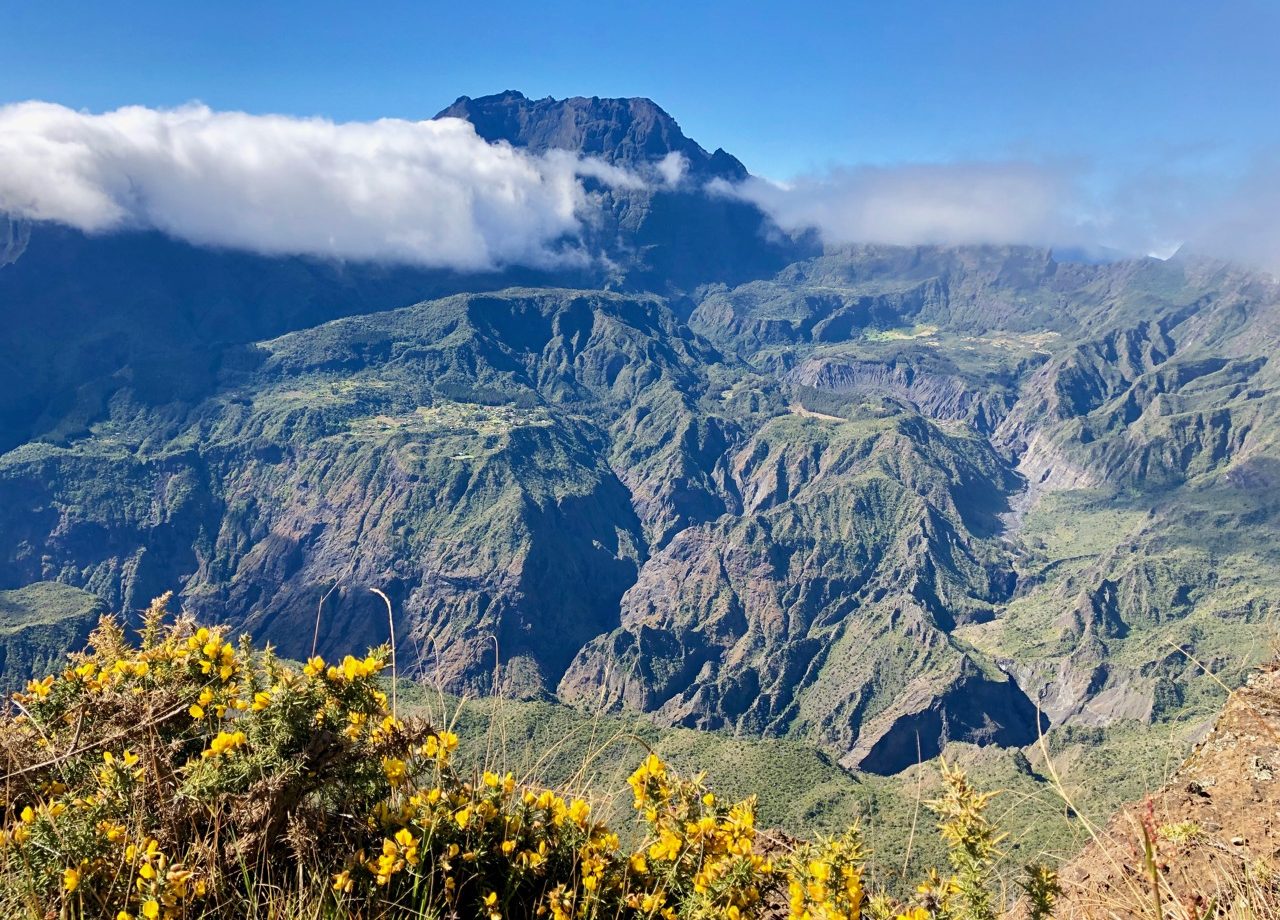
The best of Reunion Island – guide and itinerary
Réunion Island is located in the Indian Ocean ( map ), east of Madagascar and southwest of the island nation of Mauritius. An overseas department of France, Réunion is well known for Piton de la Fournaise, one of the most active volcanoes in the world, and its breathtaking mountains and calderas. It’s home to an incredible diversity of landscapes and micro-climates, a melting pot of cultures, bustling towns and stunning beaches. The main entry point is the Roland Garros International Airport near St. Denis, the capital city. From here, many adventures await for those who want to explore this diverse island! I’ve explored the length and breadth of this island and based on my trips, I’ve compiled this guide of the best places to visit in Reunion Island. These places can be visited on a comfortable 10-day self-drive itinerary – scroll down for a day-by-day overview of this Reunion Island itinerary.
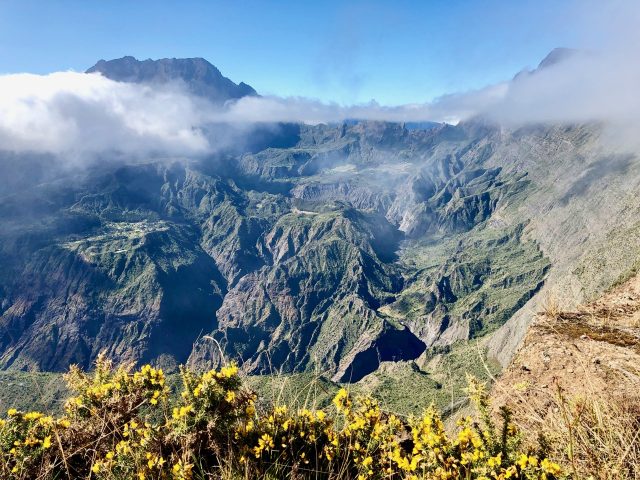
This Réunion Island guide contains links to services I often use myself and can recommend: Skyscanner (flights), Booking.com (hotel bookings), Rentalcars.com (car hire), Manawa and GetYourGuide (easy-to-book tours). If you make a booking via one of these services, I will receive a small commission (at no extra cost to you). These commissions help me to maintain my blog and share more travel experiences with you.
Best Places to Visit on Reunion Island
The Roland Garros Airport in Saint Denis is Réunion Island’s main point of entry. The car rental agencies are all located in a separate building opposite the main terminal. Exit the Arrivals Hall and cross the road towards the parking area to access the car rental offices. If you’re short on time, you can opt to join a guided day trip around the island.
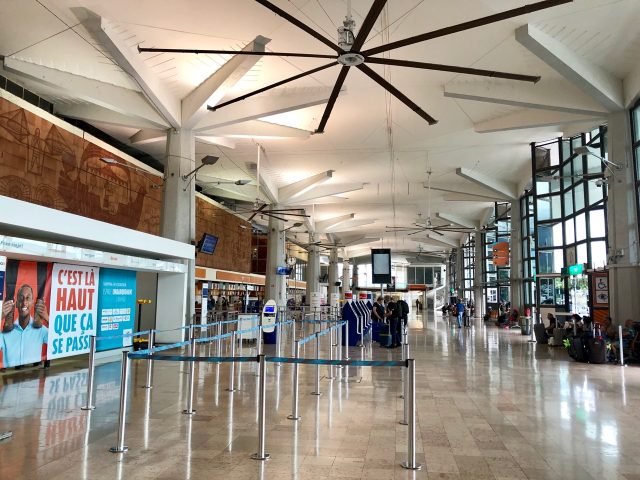
I recommend kicking off your Réunion Island itinerary by heading for the west coast on the N1 highway, bypassing Saint Denis. In less than an hour, you can be relaxing at the beach in Saint-Gilles or L’Ermitage-Les-Bains , the perfect way to recover from jet-lag. Just past Saint Denis, you’ll experience what has to be a masterpiece of modern engineering: a long section of the highway is basically suspended above the ocean! This highway was constructed due to frequent rock falls from the coastal cliffs that plagued the old road.
Read about things to do in Reunion Island .
The west coast, with its beautiful lagoons, sandy beaches and laid-back towns, is a lovely area to recover from a long journey to Réunion Island. Notable towns to visit in this area are Saint-Paul , Saint-Gilles and Saint-Leu . Spend a few days in this area exploring the coastline. The coastal road (N1A) from Saint-Paul to Saint-Gilles offers beautiful views of the ocean and the cliffs. The west coast is also the best area to go scuba-diving, deep-sea fishing or whale-watching (June – October are the best whale-watching months). There are various tour operators based in towns like Saint-Gilles-Les-Bains. Join a dolphin/whale watching boat excursion with snorkelling, or a marine safari from Saint-Gilles-Les-Bains.
Saint-Paul is a bustling town with colonial buildings, colourful markets and an esplanade that runs along the beach.
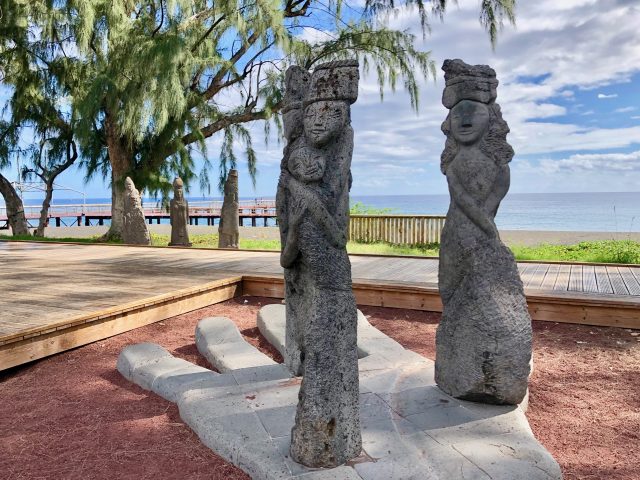
Saint-Gilles
Saint-Gilles is arguably my favourite town in this area. The town centre is compact, with many shops, cafés and restaurants. There’s also a marina and a lovely beach. I recommend parking at the large parking area at the marina and walking across the pedestrian bridge to the town centre. At the marina, you’ll find Chez Marie , a seafood restaurant which I can certainly recommend!
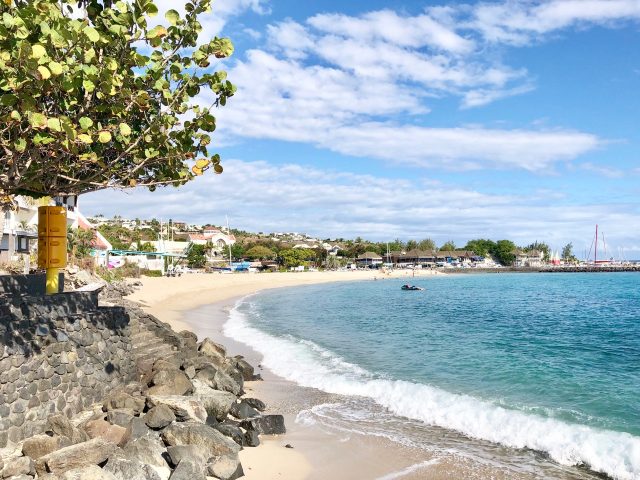
L’Ermitage-Les-Baines
Just south of Saint-Gilles is L’Ermitage-Les-Baines . This beach community has numerous hotels, shops, cafés and restaurants. There’s also the Jardin d’Eden (Garden of Eden botanical gardens) which is quite small but has some unusual plants and trees. One place that’s great for dinner in this area is Le Manta . Set in a beautiful garden, the restaurant serves local seafood and Creole specialties.
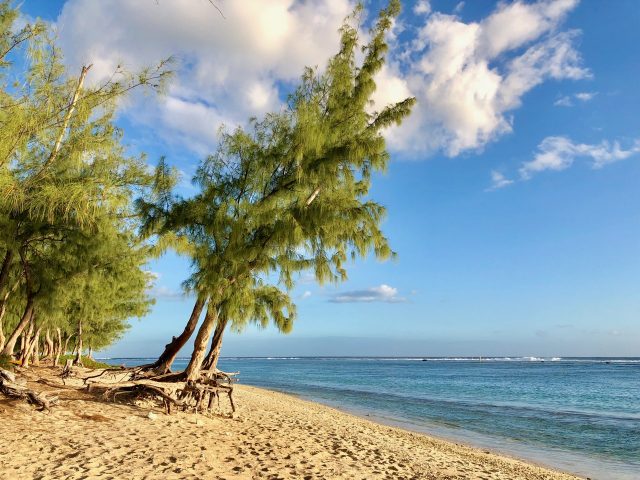
Follow the N1A coastal road down to Saint-Leu . Home to several historic monuments such as the Church of Colimacons and Hôtel des Postes , Saint-Leu is also a popular paragliding area. Go on a paragliding flight over the Saint-Leu lagoon . Another place worth a stop is Kélonia , a turtle conservation centre just outside Saint-Leu.
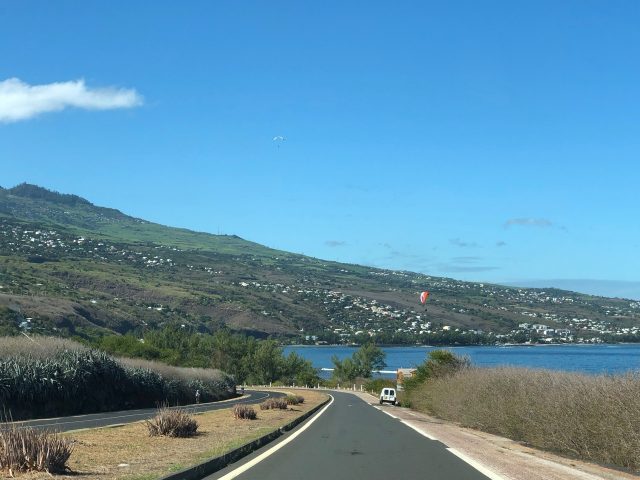
West coast beaches
The west coast boasts some of the best beaches on Réunion Island. The stretch from Saint-Gilles to L’Ermitage-Les-Bains and down to La Saline-Les-Bains has long, sandy beaches, protected by reefs. You’ll also find numerous beach cafés and restaurants. There’s also a beautiful black sand beach at L’Étang-Salé , southeast of Saint-Leu.
Caution: Réunion Island has a history of shark attacks. I enjoyed the beaches on the west coast but restricted my water activities to cooling off in knee-deep water or rock pools.

Inland from the west coast
From the west coast, it’s also easy to head into the mountains for some incredible scenery and a variety of hiking trails. You can opt for a hike into the Cirque de Mafate (a caldera that’s only accessible on foot or by helicopter), visit the Cap Noir viewpoint or you can drive up to Le Maïdo , which offers breathtaking views of Cirque de Mafate and Piton de Neiges (at 3,069 meters, the highest mountain on Réunion Island).
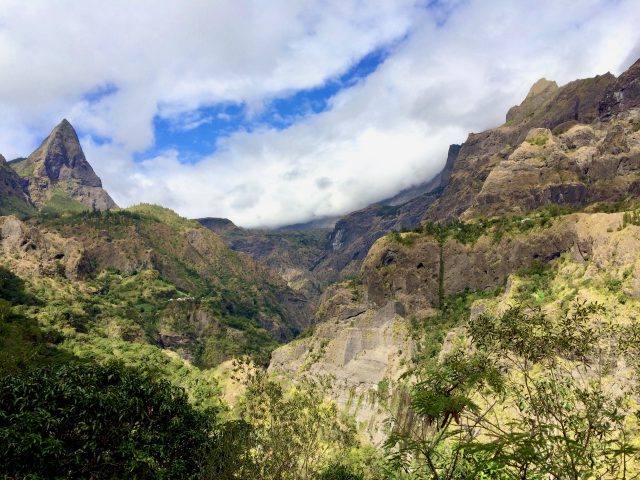
If you only have time for a drive to a viewpoint, I recommend Le Maïdo, arguably one of the best places to visit in Reunion Island! Le Maïdo is less than an hour’s drive from the coast. You can also opt for a spectacular paragliding experience from Maïdo !
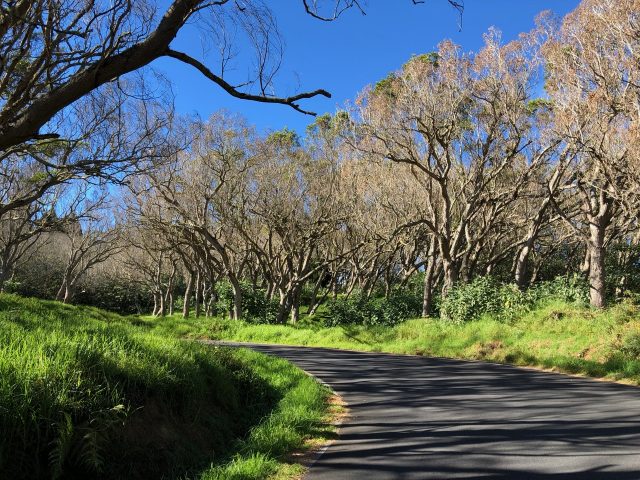
If you’re not afraid of heights and you’re feeling adventurous, take an micro-light flight across Réunion Island . Check here for more information.
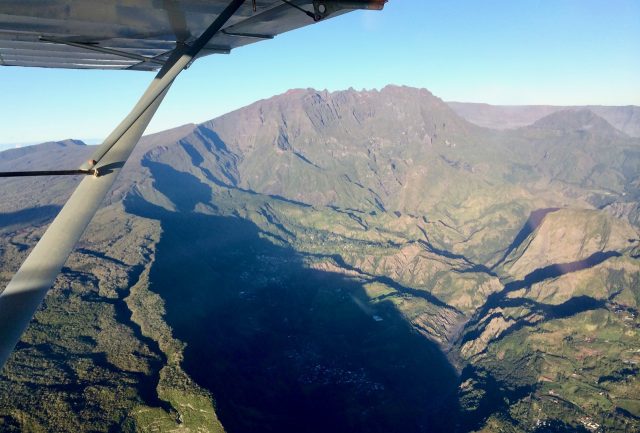
Where to stay on Reunion’s West Coast
There are numerous hotels, B&B’s and holiday rentals on the west coast. I stayed at Relais de l’Hermitage , a comfortable, albeit somewhat dated hotel, with fabulous staff. It has two pools and is literally a stone’s throw from the beach. In this area, you’ll also find Réunion’s most luxurious resort: LUX St. Gilles resort . Other nearby hotels include Hôtel Les Créoles and Hotel le Recif .
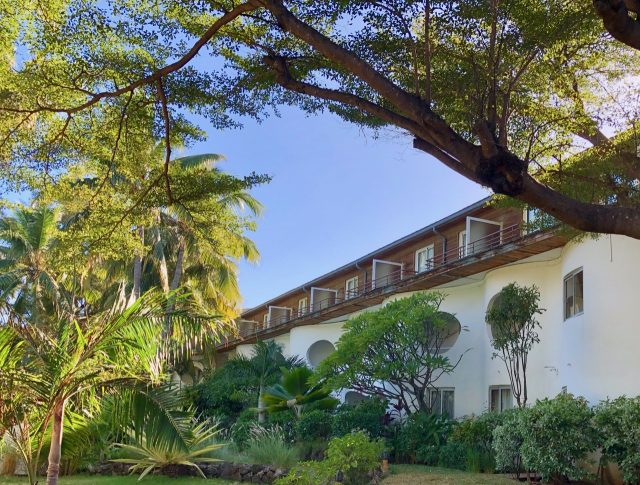
Search for accommodations in Saint-Gilles and L’Ermitage-Les-Bains on Booking.com.
Cirque de Cilaos
Cirque de Cilaos is one of three cirques on the island. These cirques were created when the Piton de Neiges shield volcano collapsed during an eruption a long time ago. What remains today are three huge caldera-like formations or cirques: Cirque de Mafate (there are no roads here), Cirque de Cilaos and Cirque de Salazie (both accessible by road). Of the three, Cirque de Cilaos is arguably the most majestic, with verdant forests, jagged peaks, towering walls (or ramparts) and waterfalls.
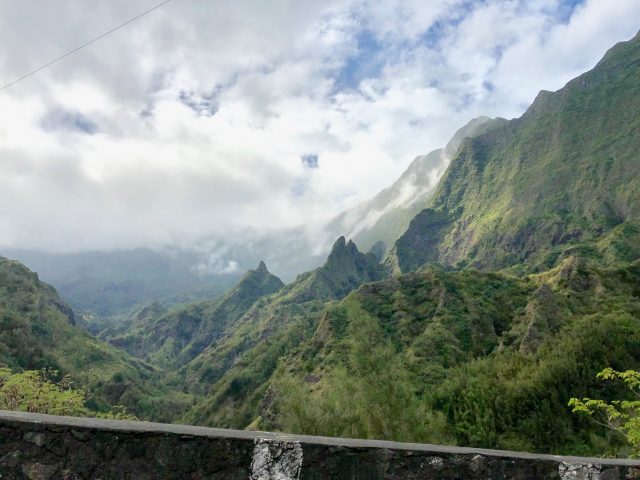
From Saint Louis, take the N5 road towards Entre-Deux (also a lovely place to visit) and Cilaos . The road into the cirque and up to Cilaos is winding (I call it the road of a hundred hairpin bends! Haha!), narrow at times and there are a few one-way tunnels to navigate, so drive carefully. The scenery is simply mind-blowing (it really feels like you’ve entered ‘The Lost World’!) but don’t take your eyes off the road. There’s a lovely café you can stop at for a coffee and it offers stunning views of the peaks.
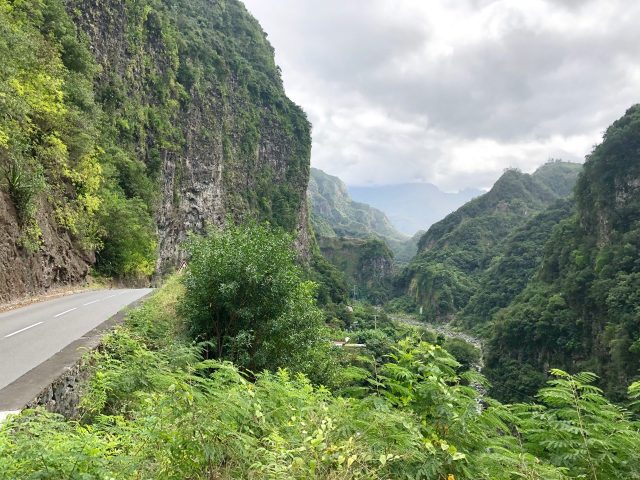
Cilaos is a small town with a variety of accommodation options, from hotels to B&Bs and holiday homes, restaurants and shops. If you’re an avid hiker, I recommend spending a few days here as there are many trails to explore, including one that leads to the top of Piton de Neiges (3,069 meters). Alternatively, you can simply stroll around the town or follow one of the easier trails and enjoy the fresh air and mountain scenery, visit the hot springs and taste some local wines. Check out this half-day hike in Cirque de Cilaos or join this half-day canyoning excursion through the Canyon of Fleur Jaune , the ‘pearl’ of Réunion canyons!
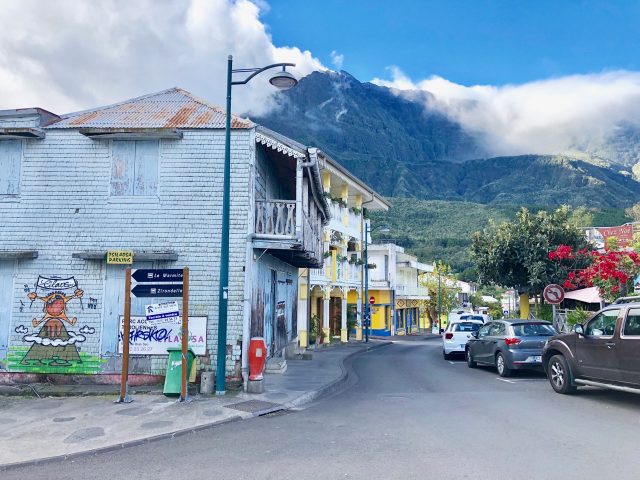
Restaurants in Cilaos I can recommend include Chez Noé , Chez Lucay and Restaurant Ti’ Bonheur de la Mare . Most of the restaurants serve local Creole fare (with Cilaos lentils). Ask for ‘piment’ (salsa) on the side if you like it spicy! In my book, Réunion Island has salsas which easily rival Mexican or other Caribbean varieties.
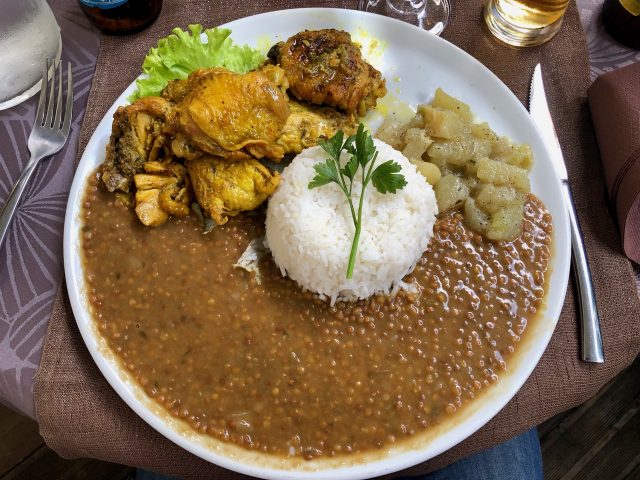
Where to stay in Cilaos
Hotels in Cilaos I can recommend are Hotel des Neiges (with easy parking, airy rooms and it has two pools) and Hotel Le Tsilaosa . There are also numerous apartments, chalets and holiday homes available.
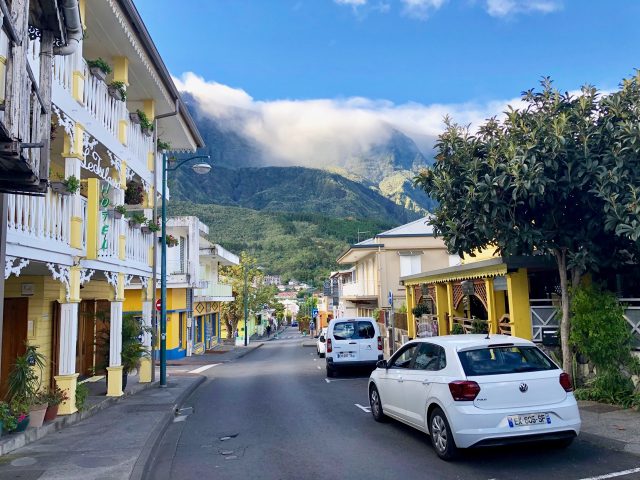
South coast
The south coast region stretches from Saint Pierre to Saint-Philippe. Saint Pierre is the largest town here and is perhaps my favourite town on Réunion Island. There are many hotels, shops, restaurants and cafés in the town centre and along the boulevard that runs parallel to the beach. What I particularly like about Saint Pierre is its melting pot of cultures, the Saturday market and the stunning lagoon at its doorstep.
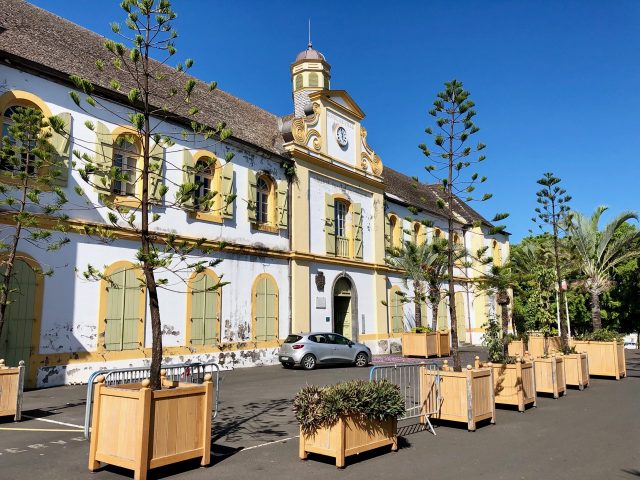
The Saint Pierre Saturday morning market (till 1pm), in particular, is a great place to experience the ‘couleur locale’, try various local food and stock up on spices, salsas, vanilla and souvenirs. I recommend approaching the market via Rue de la Poudriere and parking at either the Jumbo-Score supermarket or the field in front of the Narassigua Péroumal Hindu temple.
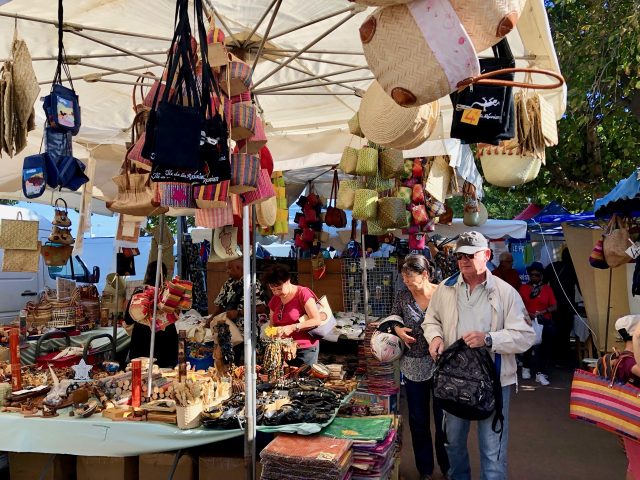
A great thing to do in Saint Pierre is to stroll along the path which runs above the beach. There are various kiosks where you can stop for a drink or a snack while you gaze out across the lagoon.
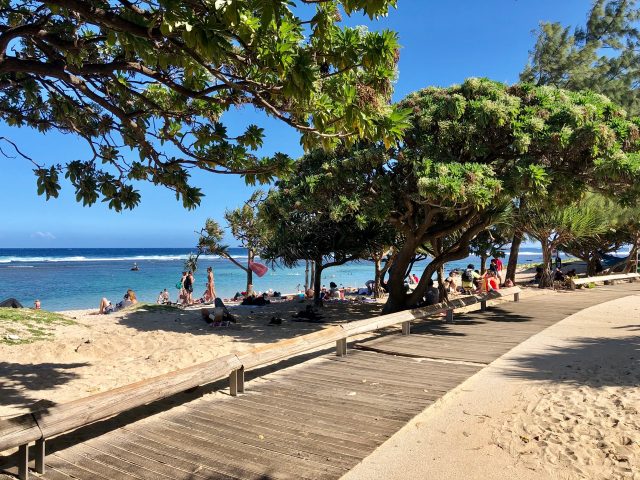
From Saint Pierre, you can also join an unforgettable helicopter tour over the island. I highly recommend this flight tour which departs from the Saint-Pierre Airport.
Where to eat and stay in Saint Pierre
Restaurants in Saint Pierre I can recommend include Le D.C.P. (very fresh seafood) and Ancre Terre et Mer . Hotels I checked out and can recommend are Villa Delisle (in the town centre across the road from the beach), Maison d’hôtes Côté Lagon (about 10-minutes’ walk to the town centre) and Le Battant des Lames (at the beach, about a 15-minute walk to the town centre).

Inland from Saint Pierre
Just north of Saint Pierre, you’ll find the Saga du Rhum , a historic rum distillery that’s worth a visit. There are also many inland attractions close to Saint Pierre. You can go on day trips to the Piton de la Fournaise (one of the world’s most active volcanoes) along the Route du Volcan , drive up to the Belvedere of Fenêtre des Makes (D20 road) or visit the Belvedere of Bois Court (D70 road).
Piton de la Fournaise
If you only had time for just one day trip from Saint Pierre, I recommend driving to Piton de la Fournaise , passing the spectacular Riviere des Remparts and the Martian landscapes of Plaine des Sables . Go in the morning before the clouds roll in. You can also opt to join a guided hike around the Piton de la Fournaise .
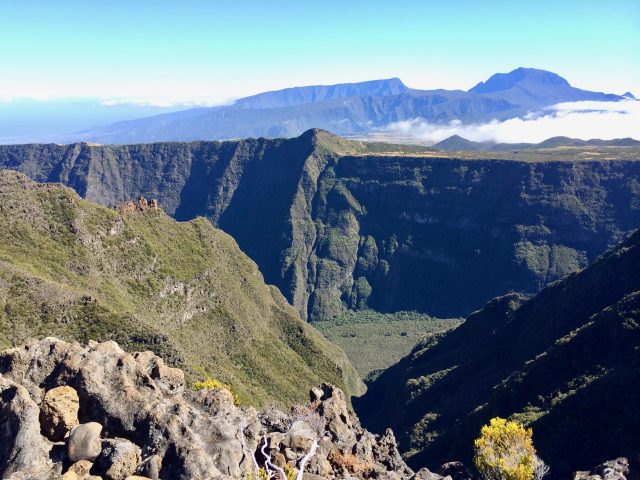
Cascade de Grand Galet
If you love waterfalls, I recommend visiting the Cascade de Grand Galet . From Saint Pierre, drive along the N2 past Saint Joseph to Langevin . Just before Langevin, turn left and follow the road up to the falls. The road starts off relatively easy but beware towards the end: you’ll have to cross a narrow bridge several times, and near the final stretch, the road becomes very steep, with tight hairpin bends. The view of the elegant falls is worth the effort though! It’s possible to hike to the pool at the base of the falls but I don’t recommend it if you don’t have proper hiking shoes.
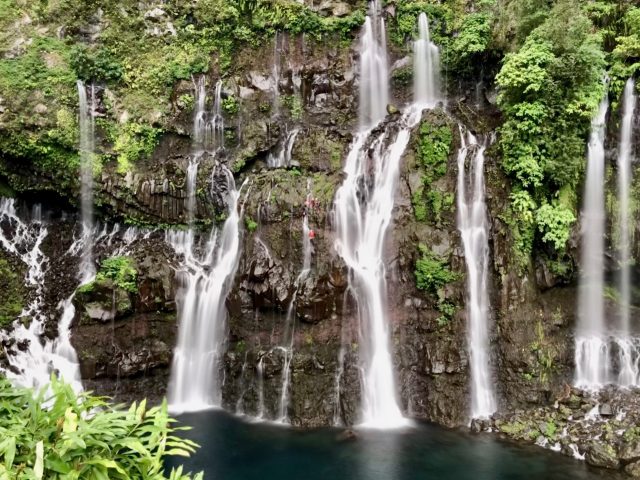
For the adventurous, check out the Petit Galet canyoning experience that includes a zip-line to the falls!
Cap Méchant
Further along the South Coast, visit Cap Méchant. The coast here is jagged and rough, with the black lava cliffs dropping steeply into the ocean. The relentless pounding of the waves have created many interesting rock formations, caves, little canyons and blowholes. Go for a walk along the cliffs to see and hear the booming waves, and enjoy a Creole lunch. There are three restaurants here: Restaurant Le Cap Méchant , L’Etoiles des Mers and Le Pinpin – all three are popular with locals, especially in the weekend.
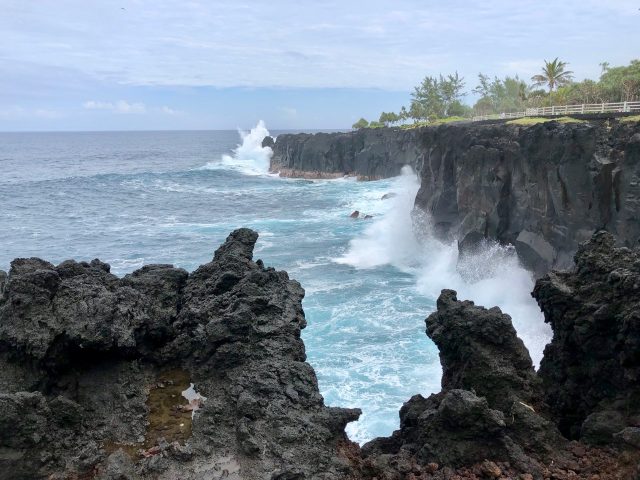
You can also opt to keep driving along the N2 road towards Saint Philippe . Along the way, you’ll be treated to beautiful coastal scenery and you can stop here for a drink or a meal – a variety of restaurants offer ocean views and Creole cuisine. You’ll also find the Jardin des Parfums et des Épices (Perfume and Spices Garden) just off the N2, an interesting stop for plant lovers.
The Lava Route (N2 road) stretches from Saint Philippe on the southeast coast to Saint-Rose on the east coast. This road hugs the east coast and passes old lava flows from past eruptions of Piton de la Fournaise as well as patches of forests.
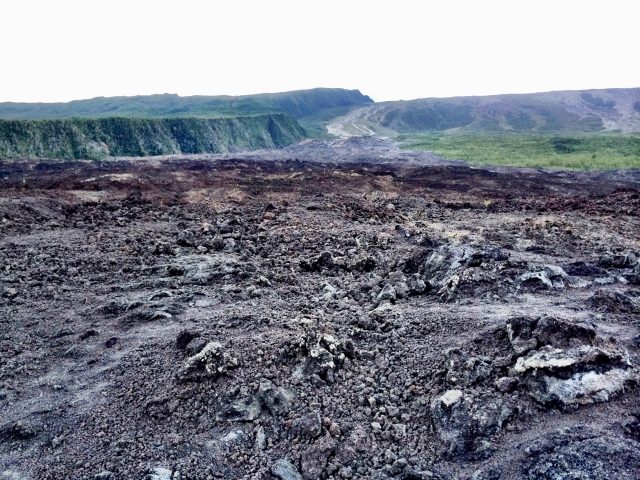
Hike inside a lava tunnel
If you’re really into volcanoes, I can recommend the hike inside an old lava flow of the Piton de la Fournaise. This lava tubing tour near Saint-Rose is a wondrous journey that will take you past intriguing formations and tunnel systems. I don’t recommend it if you’re prone to claustrophobia.
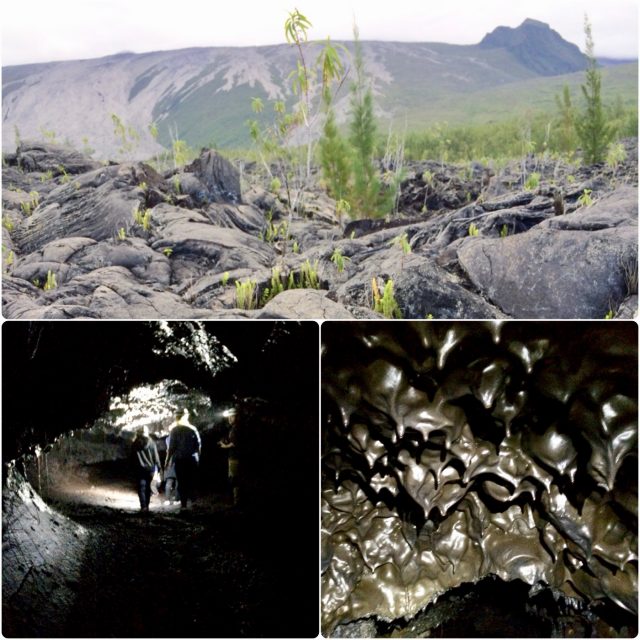
It’s a surreal sight to drive along this road that’s been rebuilt on numerous occasions. Look out for signposts which mark the year of each eruption and resulting lava flow. You can stop at various points along the way for photo opportunities. The Anse waterfall makes for a relaxing pitstop – there’s a café and WC facilities.
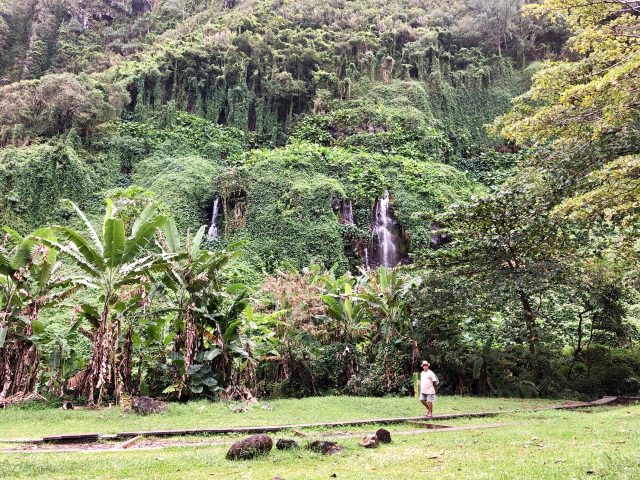
Notre Dame des Laves
The Lava Route ends in Saint-Rose. In the hamlet of Piton Saint-Rose , I recommend stopping at the Notre Dame des Laves . Located along the N2 road, this church is perhaps the most famous on the island as it survived a destructive volcanic eruption in 1977. The church is completely surrounded by hardened lava. Across the road, there’s a little museum dedicated to that particular eruption with a photo exhibition and a video show, which are absolutely worth seeing.
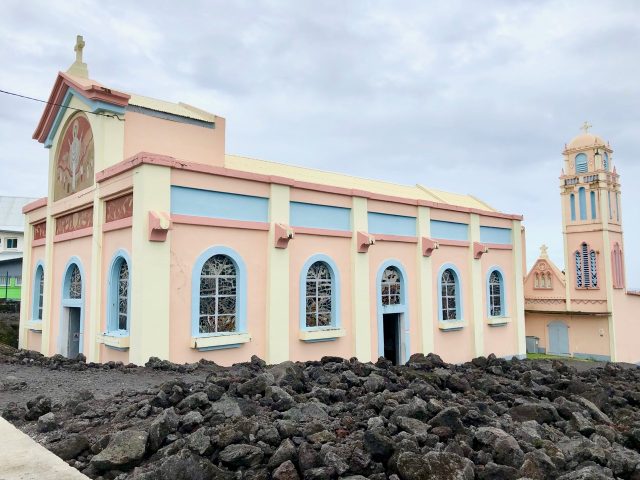
North coast
From Saint-Anne, the N2 road continues in a northwesterly direction towards Saint Denis. At La Rivière de l’Est , you’ll see the historic suspension bridge which crosses the gorge. You can make a quick photo stop here (look for the side road on the northern side of the gorge) but the bridge is closed to the public.
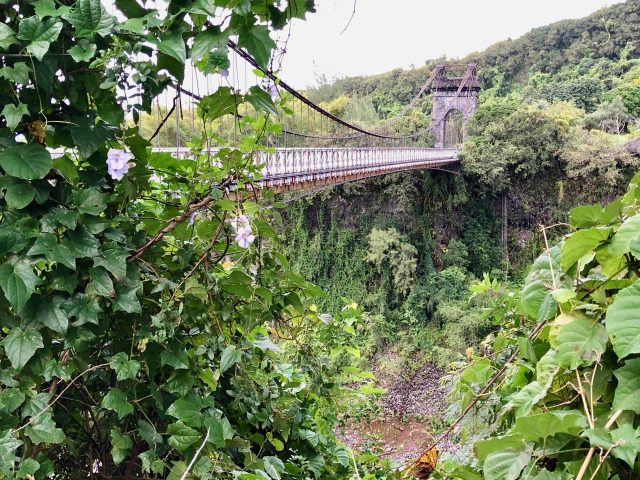
In Saint-Benoît , you’ll find the striking Eglise Sainte-Anne (St. Anne’s Church). Southwest of Saint-Benoît, the long and winding D53 road leads up to the Takamaka viewpoint. This viewpoint offers awe-inspiring views of the Takamaka Valley, the lush forests on the steep mountainsides and beautiful cascades.
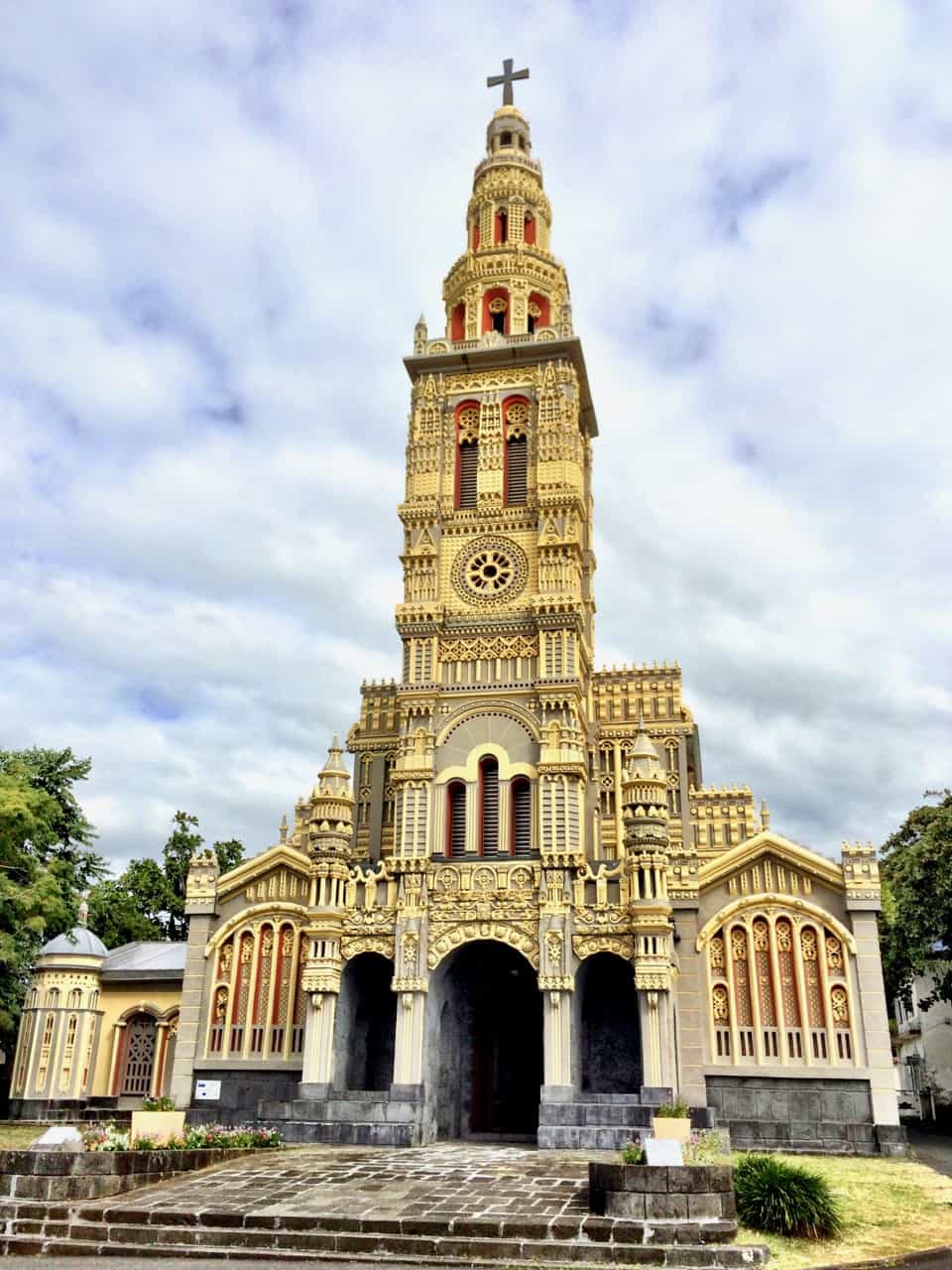
The Riviere des Roches , formed by old lava flows, is a popular canyoning spot. This is one of the best places on Réunion Island for an adventurous activity called aquatic hiking . Along the course, participants, hike, swim, slide and jump from one basin to the next. Bassin la Paix, part of the canyon, is a gorgeous lake with crystal-clear water, a lovely waterfall and surrounded by basalt columns. It is accessible by car.

The north coast between Saint-Benoît and Saint Denis is characterised by mile after mile of sugarcane fields, small settlements, industries and large outlet stores and hypermarkets. Around Sainte-Suzanne , points of interest include the Sainte-Suzanne lighthouse, the island’s oldest, and the Niagara waterfalls. Sainte-Suzanne is a popular canyoning area for families.
Cirque de Salazie
From the N2 road, you can venture into Cirque de Salazie, the most accessible of the three cirques, on the D48 road. This verdant cirque is most famous for its many waterfalls, such as the Cascade Blanche and the Voile de la Mariée , or Bride’s Veil waterfall. Both these falls are accessible from the D48 road but require a hike to get closer. Cascade Blanche is about a 40-minute hike from the car park. Find accommodations in Salazie .
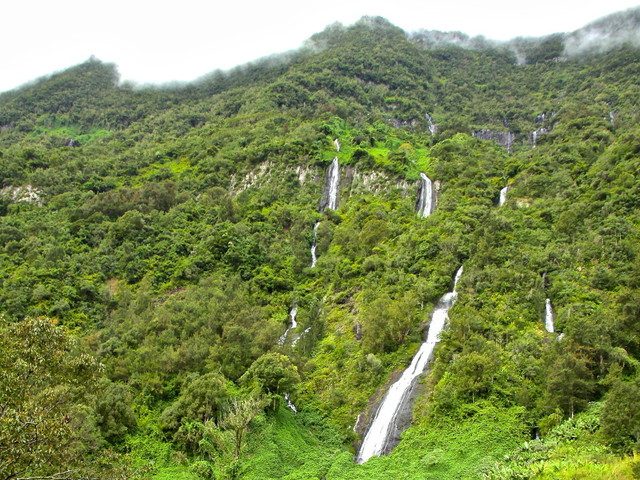
Continue to the Creole village of Hell-Bourg – with its colourful façades and surrounded by lush greenery, it’s been voted as one of the prettiest villages in overseas France. You can opt to spend some time in Hell-Bourg to go hiking – its higher altitude and cooler climate makes it a pleasant area for hikes – or you can spend a day exploring the village with its cheery buildings and flower gardens. A popular hike is the 600+ meter ascent to the Bélouve plateau through primary forest to the viewpoint, which has stunning views of Cirque de Salazie and Piton de Neiges. Along the way, you’ll pass exotic plants and towering tree ferns. The Bélouve plateau can also be reached by car via the Bébour Forest with the F2 road from Plaine des Palmistes. Join a guided hike through the Bélouve forest to Trou de Fer waterfall .
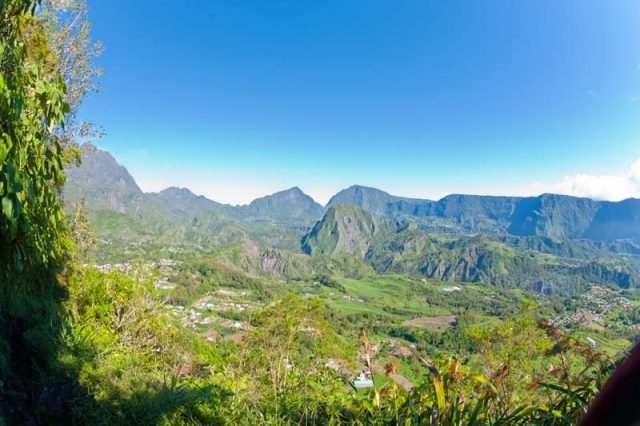
Saint Denis
Saint Denis is the largest town and capital of Réunion Island. You can stroll along the Barachois promenade (look out for whales during the winter months), see colourful Creole houses and admire the historic buildings along the elegant Rue de Paris. Another great thing to do in Saint Denis is visit its markets. I recommend Le Petit Marché with its vegetable, fruit and spice stalls, and Le Grand Marché, which sells handicraft and souvenirs. When strolling around Saint Denis, look out for cool street art by some of the island’s most famous artists. Search for accommodations in Saint Denis .
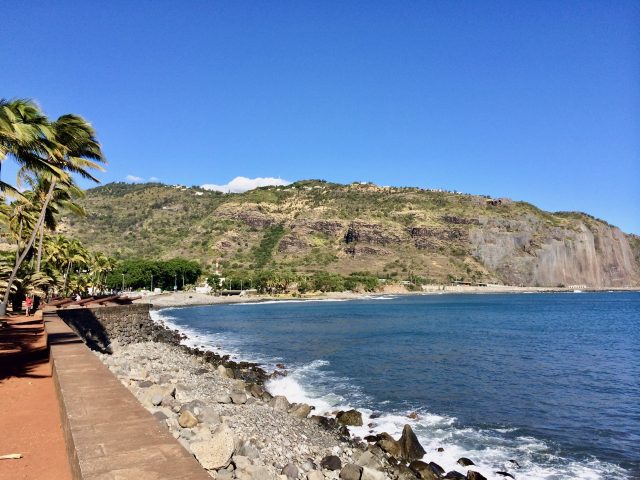
Read about street art in Réunion Island.
Check out the velvet escape travel planning page ., 10-day best of reunion island self-drive itinerary.
This 10-day self-drive itinerary takes you past the best places to visit in Reunion Island as described in the guide above.
You can start the trip at Reunion Roland Garros Airport and follow the entire itinerary or concentrate on 2-3 areas, depending on your interests or the length of your stay. I’ve included a suggested length of stay per place/area. The itinerary is as follows:
3 nights: West coast . Suggested base: Saint-Gilles-Les-Bains or L’Ermitage-Les-Baines. Suggested activities: drive to Le Maïdo, go whale-watching, hike into Cirque de Mafate, go on an ultra-light flight, visit the towns like Saint-Gilles or Saint-Leu, or laze on the beach.
2 nights: Cirque de Cilaos . If you’re not here to hike, I suggest spending a night in Cilaos to enjoy the amazing scenery. If you opt for a one-night stay in Cilaos, you can choose to spend the next night in Entre-Deux (a colourful Creole village) or La Plaine des Cafres .
3 nights: South coast . Suggested base: Saint-Pierre or surroundings. Suggested activities: drive the Route du Volcan to Piton de la Fournaise, wander around Saint-Pierre (check out the markets and relax on the beach), and visit the Grand Galet waterfalls. At the end of the two days, continue along the N2 road from Saint-Pierre onto the Lava Road and on to Saint Denis, a long drive but do-able at a leisurely pace.
1 night: North coast (optional) . You can also shorten your stay on the south coast in order to spend a night in Hell-Bourg in Cirque de Salazie, or to explore the Takamaka Valley.
1 night: Saint Denis . End your one week itinerary of Reunion Island in the capital. Stroll around the historic town centre and along the Barachois promenade. The next day, drive to the airport (15-minutes) for your car return and departure.
General info
Réunion Island is 2,511 square kilometers in size and has a population of under 1 million. A French overseas department, French is the main language and the Euro is the currency used. If you have a European Union mobile phone subscription (with EU-wide coverage), your voice and data plan is valid on the island as well with no extra charges.
How to get to Réunion Island
There are daily flights from Paris CDG and Orly airports to Réunion Island with Air Austral (the airline of Réunion Island, and a very good one I must add), Air France and French Bee (French LCC). There are also frequent daily flights from nearby Mauritius (45-minutes away). Air Austral also connects Réunion Island with cities in South Africa, India and Thailand. Search for flights with Skyscanner .
Roads and car hire
The roads are, in general, in very good condition, making it relatively easy to drive around the island yourself. However, the mountain roads, with their countless hairpin bends, can be a challenge to navigate, so if you’re not accustomed to manual (stick-shift) transmissions, I highly recommend hiring a vehicle with an automatic transmission. As in continental Europe, you drive on the right side of the road.
Accommodations
Accommodation options consist of small hotels, B&B’s, guest houses and holiday rentals. Luxury accommodations are sparse – the accommodations are mainly in the 1-3-star categories.
Weather and clothing
Réunion Island has a tropical climate. Winter is in July-August (opposite to the northern hemisphere) and is slightly cooler (18-24 degrees Celsius) and wet. Summers are hot (28-32 degrees Celsius) and humid. The west coast tends to be drier than the east coast. Note that it is colder up in the mountains (such as in Le Maïdo and Cilaos) so it’s advisable to bring a light jacket or sweater/hoodie. If you intend to go hiking, please ensure you have proper hiking clothes, shoes and other equipment, as well as sufficient water and food. The paths can be quite treacherous, especially after a rain shower.
Shark warning
There have been numerous (fatal) shark attacks on Réunion Island in the past years. It’s relatively safe (i.e. low risk) to swim or practise water sports within the confines of a lagoon such as at L’Ermitage-Les-Bains or Saint-Pierre, however, it’s not advisable (in some cases, it’s prohibited) to swim or surf in open-ocean areas. If you’re not sure, please check with the local authorities or tourism office. My personal advice is to relax at the beach, cool off in shallow areas (of a lagoon or a rock pool) and be active inland – the mountainous interior just begs to be explored!
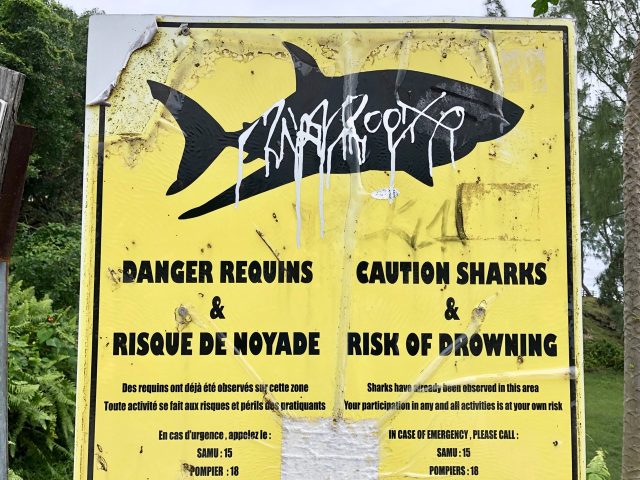
There you have it! My guide to the best places to visit in Reunion Island! I hope this guide is helpful for anyone planning a trip there. Travel safe and enjoy this magnificent island!
Related Posts
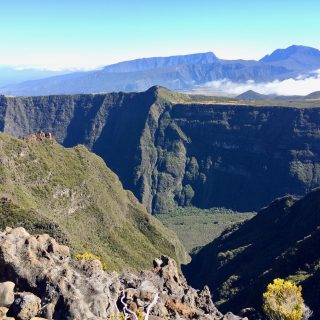
Subscribe to get the Velvet Escape Newsletter in your inbox!
18 Responses
The microlight is definitely more thrilling, and I think better for photography as you can open the window (or even door!). I enjoyed both the microlight and helicopter experiences but the microlight was more special I would say.
If we have to do either the microflight or the helicoper ride in the Reunion which one is the preferred or better option. Bepsi
The weather should be fine; about 26 degrees Celsius and the occasional rain showers. Have a great trip!
Hi, it will be first visit for me next month to Reunion Island I wander how the weather will be?
it was really nice reading about Africa’s best of Reunion Island – guide and itinerary
Hi Angela, I’m glad that my post ignited your interest and I hope you get to visit one day. Reunion Island is truly amazing and a road trip is the best way to explore the island. The mountainous interior is just incredible, and yes, I would avoid swimming in the ocean, even if it’s just off the beach.
Cheers, Keith
I have never really read much about the Reunion Islands and so this post was a real eye-opener. I love the sound of doing a road trip around the island and really immersing myself in the culture. The landscape looks incredible although I don’t think I would be swimming in the ocean with shark attacks on the increase!
[…] Check out my guide to the best places to visit in Reunion Island. […]
[…] Read my guide to the best places to visit in Réunion Island. […]
[…] Read my guide for the best places to visit in Reunion Island. […]
[…] Read about things to do in Reunion Island or my ultimate Reunion island itinerary. […]
[…] you’re flying to neighbouring Réunion Island, I recommend sitting on the right side of the plane for views of the southwestern coast, including […]
[…] Guide to the best places to visit in Réunion Island […]
[…] Read about the best places to visit in Reunion Island on a suggested 10-day self-drive itinerary. […]
[…] out my guide to Reunion Island with the best places to visit and a suggested 10-day […]
[…] about the Best Places to Visit in Reunion Island on a 10-day self-drive […]
[…] car (like a Toyota Yaris) is sufficient to navigate most of the mountain roads. Read about the Best Places to Visit in Reunion Island on a self-drive […]
[…] Read about the Best Places to Visit on Reunion Island. […]
Leave a reply
Save my name, email, and website in this browser for the next time I comment.
This site uses Akismet to reduce spam. Learn how your comment data is processed .
Appeared In

- 2 Other destinations
- 3.1 Climate
- 3.2 History
- 5.1 Passport and visa
- 5.2 By plane
- 5.3 By boat
- 6.1 By taxi
- 6.4 On foot
- 6.5 By aircraft
- 7.1 Piton de la Fournaise
- 13.1 Volcanic activity
- 13.2 Cyclones
- 14.1 Emergency phone numbers
- 14.2 Cyclones
- 16.1 Phones
- 16.2.1 Postage rates
- 16.3 Parcels
Réunion (French: La Réunion ) is a French overseas department located in the midst of the Indian Ocean , east of the island of Madagascar and 200 km to the south-west of Mauritius , in East Africa . This enchanting destination is blessed with a tropical climate and beautiful volcanic landscapes, with its appeal being as much due to its white sandy beaches as its mountain scenery. Réunion used to be known as the Isle de Bourbon and Isle Bonaparte.
Towns [ edit ]

- -20.878889 55.448056 1 Saint-Denis — the capital of Reunion island
- -21.048889 55.269167 2 Saint-Gilles — on the west coast, where all the white sand beaches are
- -21.166389 55.286944 3 Saint-Leu — a well-established city and surfing destination
- -20.995278 55.676111 7 Bras-Panon — a large producer of vanilla and host of the largest agricultural show on the island.
Other destinations [ edit ]
- -21.053889 55.420556 3 Mafate
- -21.3186 55.8008 4 Takamaka — location of the only water power plant of the island
- -21.14573 55.45983 7 Cirque de Cilaos
- -21.053889 55.420556 8 Cirque de Mafate
- -21.2425 55.708889 9 Piton de la Fournaise
Understand [ edit ]
Climate [ edit ].
The island's climate is tropical. The time from September to mid-December is the best time to go, since rain is uncommon then, and temperatures are mild on the beaches as well as in the hills, so you can both hike in the mountains and enjoy the seashore without issues of humidity or heat.
January to March is the rainy season, sometimes marked by cyclones. The island has two climatic zones: the greener windward side (east) that receives moist Indian ocean air, and the noticeably drier leeward side (west) shielded from the wet air by the mountainous landscape.
History [ edit ]
The Portuguese discovered the uninhabited island in 1513. Réunion became officially French territory in 1663. From the 17th to the 19th centuries, French immigration supplemented by influxes of Africans, Chinese, Malays, and Malabar Indians gave the island its ethnic mix. The opening of the Suez Canal in 1869 cost the island its importance as a stopover on the East Indies trade route. It remained a colony until 1946, when it became a département of the French Republic.
Locals take great pride in marking the anniversary of the abolition of slavery (which happened on 20 December 1848), in a festival known locally as "La Fête Cafre" (a "cafre" being the name given to an indigenous dweller of the island, now widely used to address a friend). This gesture towards the past is still very much present in society today, and as such the word "slave" ("esclave") is a grave insult to a Réunionnais.
Today, the population of Reunion is widely varied in terms of ethnic origin, which each group inheriting its respective traditions.
- Réunion Tourism website
Talk [ edit ]
French is the official language of Réunion, although Creole is widely spoken. Everyone understands French, as it is the language of education, but few people understand English.
French spoken with the local Reunion accent, intermingled with Creole, can be difficult to understand for native French speakers. Metropolitan French are locally nicknamed zoreilles ("ears") for their tendency not to understand and ask people to repeat.
English speakers meet every Monday evening between 19:30 and 23:00 (including during holidays) at the Moda Bar, 75 rue Pasteur, in Saint-Denis. Infoline 0692 560220. If you speak English, it is a good way of sharing ones accent, culture and language to meet travelling and resident couch-surfers. Ten to twenty people attend each week. The bar allows people to bring take out food.
See also: French/Creole dictionary
Get in [ edit ]
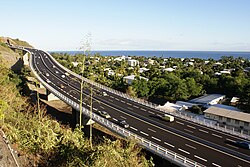
Passport and visa [ edit ]
Although Reunion is an integral part of France, it is not part of the Schengen area, so it has its own immigration and visa rules. Citizens of Mauritius, for example, do not need a visa for short visits to Reunion but do need a visa to visit mainland France.
By plane [ edit ]
The main airport is Roland Garros International Airport , near Saint-Denis ( RUN IATA ). The vast majority of intercontinental flights arriving at Reunion come from mainland France, with a handful of other airports through the Indian Ocean. Airlines flying to Reunion are the following:
- Air France operates direct flights between Paris Orly and Roland Garros.
- Air Austral is the principal local airline, which serves numerous destinations in Africa and the Indian Ocean ( South Africa , Comoros , Mauritius , Madagascar , Mayotte and the Seychelles ), as well as Paris Charles de Gaulle Airport . Air Austral also offers transfers onto the TGV-Air service for various destinations within France, and the Thalys line from Paris towards Brussels. If coming from Asia, there exists a seasonal service from Bangkok Suvarnabhumi airport .
- Air Madagascar flies from Roland Garros to Antananarivo , Antsiranana , Nosy Be . Air Madagascar stops in at Roland Garros on its twice-weekly Antananarivo to Guangzhou, China, but does not have traffic rights to carry passengers between Saint-Denis and Guangzhou.
- Corsair offers a weekly service to Paris Orly , Lyon , Marseille and Toulouse .
- Air Mauritius has multiple daily flights to Sir Seewoosagur Ramgoolam Airport, Port Louis , Mauritius . The trip is 45 minutes.
For travelers from North America, travel direct to Reunion can be very expensive (well over US$2000 in economy and booked months in advance!) due to a lack of competition and lack of codesharing agreements with Air Austral at Paris-CDG. The most affordable way to travel from North America to Reunion is to book a flight to Mauritius, then book a separate flight for about US$180-300 round-trip between Mauritius and Reunion, which are less than an hour apart by air. Mauritius is served by several major carriers, such as British Airways, Emirates, South African Airways, Turkish Airways, Air France (to Paris-CDG, rather than Paris-Orly), KLM (seasonal), Lufthansa (seasonal), and Austrian (seasonal), so fares are competitive at about US$1200-1800 and can involve shorter layovers.
The small Pierrefonds Airport on the southwest side of the island near Saint-Pierre has daily flights to Mauritius on Air Austral and Air Mauritius, plus a seasonal Air Austral flight to Rodrigues .
By boat [ edit ]
- From Reunion, it is possible to reach Mauritius and Madagascar by boat. Two ferry services offer these routes, the Mauritius Pride and the Mauritius Trochetia. They are at 4, avenue du 14-Juillet 1789, 97420, Le Port, telephone: ☏ +262 262 42 19 45 .
- Throughout the year, a number of cruise liners dock on the island. More information should be sought through individual cruise companies.
Get around [ edit ]
It is often said that Réunion has more than its fair share of cars, and it's true. At certain times, the road networks can become jam-packed with vehicles, but in order to overcome this, all a visitor needs to know is when to travel and how to travel. The national road ( route nationale ) which goes round the island is double-laned for each direction in many places. Other roads are usually paved, with one lane in each direction. There have been plans to build a railway to alleviate the traffic congestion, but as of 2018 those plans have been shelved.
By taxi [ edit ]
Hailing a taxi on the island is fairly expensive, especially when leaving the airport (expect to pay €15).
By bus [ edit ]
Intercity bus travel around the island is served by Car Jaune ("Yellow Bus", buses are easily recognisable by their yellow colour). There are 13 lines. Apart from these buses there are also local buses. Most of lines operate between 06:00 and 18:00 .
- Car Jaune, Ligne B, from Saint-Denis to Saint-Pierre and back, Par les Bas (via the coast). Operates approximately every 1½ hours.
By car [ edit ]
There is one main road around the island (74 km of it is four-lane) and another road from Saint-Pierre to Saint-Benoit ( route des plaines ) through the interior of the island.
Due to the volume of cars, traffic jams often occur so you should avoid travelling during peak times.
Because of the volcano, the road is sometimes closed along the east side of the island.
The four-lane highway between La Possession and Saint-Denis, known as the route du littoral , runs between an unstable cliff and the sea. Because of the rain (mostly between December and March), this highway may be "basculée", that is switched to a two-lane road. Expect traffic jams in such circumstances. It is being replaced by a remarkable €1.7-billion, 5.4-km viaduct a few hundred metres offshore – as of July 2023, the southbound section opened; it is not clear when the northbound section will open.
The Route des Tamarins is an expressway linking Saint-Paul and Étang-Salé offering spectacular views of the coast. With its completion, a 4-lane divided highway now runs around three-fourths of the island.
Do not underestimate driving times, even if the island seems small. The main roads, especially on the west coast, tend to jam; so do the streets of Saint Denis. The roads in the interior are mountain roads, some with many turns and steep slopes.
Car hire is available.
On foot [ edit ]
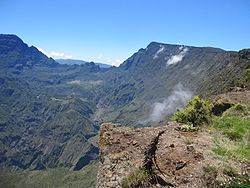
Reunion Island has almost 1000 km of hiking trails, with an astonishing variety of landscapes for an island. The cirques , plains and volcano have been classified as a french national natural park. The best hikes are probably in the Mafate cirque and on the volcano (see Piton de la Fournaise ). The exceptional Mafate circus has no roads, and about 800 inhabitants.
You can find hostings on main hiking places.
By aircraft [ edit ]
Some helicopter and airplane companies do scenic flights. These depart very early in the morning (in order to avoid clouds and fog at altitude). There are also some helicopter trips, e.g. to La Nouvelle in Mafate.
See [ edit ]

Piton de la Fournaise [ edit ]
The active volcano is located in the south of the island. Even the approach over the Plaine de Sable (sand plain) offers many visual highlights. Directly below the rim of the crater there is a parking lot with a magnificent view. From a safe distance, hikers can watch the activity of Mount Fire. Guided hikes to the best vantage points are offered on site by various agencies. Tours at sunset are particularly fascinating, since then the lava flows can be seen particularly well in the dark. You should not do these tours without a local guide, as the signposts of these 4-5 hour hikes are sometimes very difficult to see. But even when the volcano is not active, hikes of various lengths along the rim of the crater or the descent into the crater floor offer fascinating views. For the descent, however, you should have a head for heights, as the path winds very narrowly in zigzags towards the ground. Once at the bottom you can admire the mini cone "Leo Formica" and walk up to the "Church" (a colorful fault). If you have time and stamina, you can also climb the highest point of the actual volcano, and from there you have a magnificent panoramic view over the various lava flows to the sea. However, this should only be done when the weather is good and there is no volcanic activity (be sure to inquire at the information stand in the parking lot!). The weather changes very quickly and within an hour clouds can gather so thick that you can hardly find your way back. On the way back, make a stop at the "Maison du Volcan" (House of the Volcano) which has some fascinating video images of the last major eruptions.
Do [ edit ]
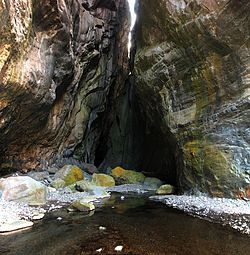
Reunion is very much an island to be discovered through exploring its mountainous scenery and outdoor activities. The typical landforms of Réunion "Pitons, Cirques and Remparts of Reunion Island", have been inscribed on the UNESCO World Heritage List and the world heritage covers more than 40% of the island.
Hiking [ edit ]
Réunion has some very scenic well-developed hiking areas, and it is filled with numerous hiking stages and multi-day routes in different routes. The particularly interesting part is the rugged volcanic interior of the island with the two volcanic peaks and the three crater basins.
Diving [ edit ]

There is also good diving off the coast of Reunion.
Buy [ edit ]
Money [ edit ].
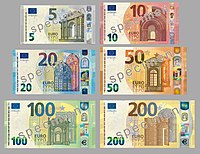
Reunion is part of the Eurozone, so as in many other European Union countries the currency used is the euro (symbol: € ).
It is compulsory, for the large majority of businesses, to post prices in windows. Hotels and restaurants must have their rates visible from outside.
Most shops accept international credit cards (Visa and Mastercard) but most of them require a minimum amount for credit cards payments (usually €15).
There is a good number of ATMs (called "gabier") which don't charge you for using them.
Shops [ edit ]
Most shops are closed on Sunday.
Most of supermarkets are open M-Sa from 09:00 to 20:00. Some of them are open on Sunday morning.
You can find traditional objects in some shops but it's often easier and cheaper to go to a market (marché). The market in Saint-Paul is famous and you'll also find fruits and vegetables: it gathers on Friday morning and afternoon and on Saturday morning.
It's a good place to buy African traditional objects, such as Oware .
Gifts [ edit ]
Here are some ideas for gifts:
- local music;
- book or dvd about volcano's last eruption
Eat and drink [ edit ]
Thanks to its history, Reunionese cuisine is a mix between different cultures: French, Indian, Chinese & African
Typical dishes are cari and rougail which are a meat or a fish cooked in a sauce and eaten with rice.

Depending on the season, many tropical fruits are available, like lychees (December), mangoes, pineapples (the Victoria types in Reunion are said to be the best in the world by the locals), bananas, papaya...
At lunchtime, you can have many kinds of sandwiches and samosas in snack-bars (cheap but not very balanced, except for the spicy "achards sandwich"), and find restaurants easily (average of USD10-15). Other local specialties are bonbons piments , which are spiced and salted fritters, piments farcis , which are stuffed hot peppers, and bouchons , which are morsels of meat or fish that are surrounded by rice paste and steamed before being served with soy sauce.
Réunionnais pastries are often quite thick and sweet. There are pastries made from sweet potatoes ( gâteaux patates ) and (for a bit of an adventure) manioc ( gâteaux manioc )
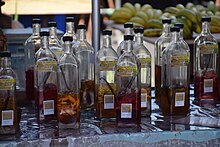
Reunionese cuisine is quite safe, but ask for some dishes to ensure that they're not too spicy. The spice level is below that of much Indian cuisine.
The main local drink is rum. The lowest quality rum is made from fermented cane sugar molasses and is not aged (thus its color is clear). It is often drunk as rhum arrangé - rum flavored by fruit and spices. Rhum arrangé , being fruity and sugary, is easy to drink but beware of the high alcohol content! Higher quality rum is rhum agricole , made from fermented cane sugar juice. It is either clear, or aged in oak barrels, giving it a brown colour.

If you are looking for the most famous places, you will find them in Saint-Gilles-les-Bains on the west coast and in Saint-Pierre in the South. These are seaside resorts with many nightclubs and many trendy bars where you will have no trouble attending a Mayola show, or dancing the Sega. On St Denis, the pedestrian area laid out around the cathedral offers many restaurants and lively bars. On Sunday evening from 18:00 , the "rondavelles" by the sea offer free concerts, enough to end the week well around a cocktail or a local beer, around local "tapas": pepper candies, samosas, corks and other local spring rolls.
Wine [ edit ]
The traditional "wine of Cilaos" is a very sweet, quite rustic cooked wine. You will easily find some in the Cirque de Cilaos and along the roads, but not in supermarkets: the legality of this trade is debatable, but the gendarmes allow this tradition to continue.
Since 2004, the "Chais de Cilaos" have been selling modern wines (three local wines and one table wine): sweet white, dry white, rosé and red. The cellars can be visited. Fans will go to Cilaos on the occasion of the lentil festival in November or for Saint-Vincent in February. You can buy some at the Cilaos tourist office.
Sleep [ edit ]
There are many possible accommodation types in reunion: Ordinary hotels; privately run Gîtes d'Étape; Gîtes de Montagne are mountain cabins or lodges located in the central areas appropriate and operated by Reunion Island Tourism Board ; youth hostels are operated by Auberge de jeunesse de la Réunion. There are five youth hostels at Réunion Island ; Hell Bourg, Bernica, Entre Deux, Saint Denis and Cilaos.
Work [ edit ]
For European people coming from an EU country, working in Reunion is allowed without a visa or work permit. If you're from outside the EU, you will probably need a work permit. Check with the French Embassy in your country. Do not forget, though, that the unemployment rate is high. If you work in the health sector (doctor, nurse), it will be much easier.
Stay safe [ edit ]
Volcanic activity [ edit ].
From time to time the island experiences volcanic activity. However, this is nothing to worry about; the lava flows are fluid and slow moving, and they always go by the less-inhabited Southern part of the island. Alerts are always sent out, and authorities block roads that are covered by lava.
Cyclones [ edit ]
The season when cyclones generally occur is the Southern hemisphere's summer, from October to April. However, alerts are sent out by radio, and it's very hard to not hear about it. Should a cyclone occur during your visit, stay indoors during it.
Crime [ edit ]
Reunion is fairly safe - even safer than much of metropolitan France. Take common-sense precautions such as:
- Don't walk around alone at night
- Don't flaunt expensive cameras or jewellery
- Don't resist in case of aggression
Most crimes are family-related and alcohol-related
The major attraction of Reunion is the stunning scenery, with impressive walks on cliffs and, obviously, the volcano. In some high altitude areas, especially the volcano, mid-day fog may really hamper orientation; also, temperatures may drop significantly. In foggy weather, do not stray from well-marked paths. Carry layered clothing.

Stay healthy [ edit ]
Unlike most tropical islands, Réunion hasn't had issues with malaria or infectious tropical disease for several decades. Travelers should still take precautions against mosquito bites; in 2005-6 the island had an outbreak of Chikungunya virus spread by tiger mosquitoes.
Caution should be taken when spending time in the sun. High altitude areas may be scorchingly hot when the sun is high, and cold when it is foggy. You might not notice the sensation of sunburn forming if it's chilly out, so don't hesitate to cover up with light clothing even in the heat. It's advisable to bring your own sunscreen, as it's somewhat expensive on the island.
Sanitary and medical facilities in Reunion are very good.
As in the rest of France, French and EU residents get most of their health care costs covered by the compulsory health insurance plan ( sécurité sociale ). This plan does not cover nonresidents, who will be expected to pay full price. A travel health insurance is thus advised. Full price costs are significantly lower than in the United States.
Visitors from European Union should bring an EHIC (European Health Insurance Card) - obtained in their own country before departure. The E111 form is no longer valid. Ask for details at your local health care organisation.
The major hospital is in Saint-Denis but there are various others in important cities. There are doctors in almost every village.
Tap water is usually safe for consumption. Public sources of water are unsafe if labeled with "Eau non potable" (Water not drinkable).
Emergency phone numbers [ edit ]
- emergency services: 112 (which can be dialled by any mobile phone, even if not connected to a GSM network);
- fire brigade: 18;
- police station: 17;
- specialised emergency medical service (called SAMU): 15.
During the cyclonic season (November to April), you should check cyclone warnings shown in newspapers or broadcast by the radio or TV. There are three states of warning:
- Vigilance cyclonique (cyclone watch): risk of cyclones in more than 24 hours, you should buy in advance enough food and water as well as batteries and candles;
- Alerte orange (orange alert): risk of a cyclone in the next 24 hours, schools are closed, try to avoid getting around;
- Alerte rouge (red alert): risk of a cyclone in the next few hours, don't move from your home and avoid using the phone, stay calm.
Respect [ edit ]
Réunionnais people have a sense of nationalistic pride that may seem a little unusual or unexpected. It's an island phenomenon that's difficult to explain to people from the mainland. However much someone shouts about the island's superiority from the rooftops, don't be concerned about xenophobia.
Connect [ edit ]
Phones [ edit ].
Country code: 262
Dialing within Reunion: all numbers have 10 digits. Landlines begin by 0262 and mobile phones by 0692 and with 0693.
Dialing to Reunion: international prefix + 262 + phone number without the first 0 (this leads to dial twice 262 which is normal). If you dial from mainland France, just use the 10-digit number.
Dialing from Reunion: the international prefix is 00.
Calling to a mobile phone is more expensive than to a landline. Number beginning by 0800 are free phone. Number beginning by 089 are premium-rate.
When the new EU roaming regulations came into force, more EU-based mobile providers started offering roaming in Reunion. Many of them even treat Reunion the same as roaming in mainland France, so you can use your plan with no additional charge. Few out-of-EU mobile phone companies offer international roaming to Reunion, however, so double-check with your provider about availability and pricing before leaving. Your company should specifically state that they offer roaming to Reunion (or include it in their EU roaming allowances) since it has different mobile phone companies from mainland France (and as an outermost region of the EU, EU providers are not required to include it in their roaming allowances). If you have service from a provider in mainland France, specifically check that your plan covers the "DOM" (overseas departments).
Alternatively, you should be able to get a Pay-as-you-go SIM card from various locations. There are three companies offering wireless services: SFR (SRR) , Orange Réunion , and Free Réunion . As in mainland France, Free is the cheapest offer by far, at €9.99 a month for 50 GB and unlimited talk and text locally, to mainland France, and to landlines across Europe.
Post [ edit ]
La Poste, the French national mail carrier, is responsible for postal service on Réunion. Post offices are found in all cities. Post boxes are bright yellow.
Postage rates [ edit ]
Less than 20g (postcard, letter with one or two pages in a regular envelope - as of 4 April 2022 ):
- France (including Overseas Territories DOM-TOM ), priority (airmail) letter: €1.43
- Rest of the World, international priority (airmail) letter: €1.70
The basic stamp for regular mail is red with the head of "Marianne" (the Republic logo). It does not state its euro value and can therefore be used even after a price increase. It is sold in all Post Offices, Bureaux de Tabacs (Tobacco sellers identified by a red lozenge) and postcard vendors. The latter may also carry other common stamps.
In most Post Offices you will find an automatic machine (yellow) with a scale and a screen. Just put your mail on the scale, tell the machine (French or English) the destination, pay the indicated amount and the machine will deliver a printed stamp.
Parcels [ edit ]
Chronopost, UPS and DHL offer parcel services.
Go next [ edit ]
- Paris is reached by daily flights.
- Other East African islands with good connections are Madagascar , Comoros , Seychelles and Mauritius .
- Remote islands of the southern ocean are reached by the supply ship Marion Dufresne, which has tourist berths. This sails four times a year from Réunion on a one-month circuit of Crozet Islands , Kerguelen , Île Saint-Paul (where tourists may not land), Île Amsterdam and back to Réunion.
- Has custom banner
- Has mapframe
- Maps with non-default size
- Has map markers
- Marker with Wikivoyage article but no wikilink
- Has Geo parameter
- Outline regions
- Outline articles
- Region articles
- East African Islands
- All destination articles
- Pages with maps
Navigation menu
- Skip to primary navigation
- Skip to main content
- Skip to primary sidebar
- Skip to footer
TravelAwaits
Our mission is to serve the 50+ traveler who's ready to cross a few items off their bucket list.
Things I Wish I’d Known Before My Travel to Reunion Island | A Guide You Will Appreciate

- Destinations
- News and Tips
- Travel With Confidence
Note: The Travel Awaits team regularly updates content to provide the latest, and most accurate information to our readers. The updated content in this article may not reflect the views or opinions of the original author.
It was dark when our plane descended through the clouds and landed on Réunion Island. It was slightly disconcerting arriving after dark. I couldn’t see the beaches, the mountains, or anything that looked remotely tropical. Instead, aside from the humidity, I could very well have arrived in Europe, which technically, I had.
Réunion is a tiny little piece of France in the Indian Ocean! I somehow made my way through customs and immigration, collected my bag, and found my taxi, all without speaking a word of English; before setting off into what, for me, was a completely unknown destination.
I’d gone to Réunion Island to take part in Xterra Réunion, an off-road triathlon race, and had done absolutely no research about my destination before I boarded my flight. I’m here to tell you now some of the things I wish I’d known before I’d got there. But first, some basic facts:

Things I Wish I’d Known Before My Travel to Reunion Island
1. location.
Réunion Island in the Indian Ocean is an overseas department/region of France. It is located approximately 340 miles east of Madagascar and 109 miles southwest of Mauritius .
2. Population
As of January 2021, Réunion had a population of 858,450.
3. Language
As in the rest of France , the official language of Réunion is French. In addition, a majority of the population speaks Réunion Creole.

4. A Brief History
Little was known about the island, which was uninhabited prior to the arrival of the Portuguese, who landed here in 1513. In the 1640s, the island was occupied by the French, who claimed it as their own, renaming it Ile Bourbon. The island was renamed Réunion in the 18th century and became prosperous, along with the nearby island of Mauritius, because it was on the shipping routes between Europe and Asia. Sugar plantations, worked by slaves imported from Africa, formed the major sector of the island’s economy. Slavery was abolished on December 20, 1848 (a date celebrated annually on the island), though indentured workers continued to be brought to Réunion from other places, predominantly South India. The island was a French colony until 1946 when it was granted the status of “Overseas Department.” Réunion is now one of the most far-flung parts of the European Union.
5. How To Get There
It isn’t easy to get to Réunion; there are few travel options and most of those are expensive.
One option is to fly from Mauritius; the flight is only 45 minutes. A one-way ticket from Mauritius to Réunion costs around 80 euros (around $93).
Option two would be to take an Indian Ocean cruise. That way you could combine Réunion with Madagascar , Seychelles , and Mauritius, though this would mean you wouldn’t have much time to totally experience the island.
The third option would be to look for a cheap flight. The cheapest is usually via Paris. A one-way ticket can be as little as 150 euros (around $175), which isn’t much for a 12-hour flight!
6. Best Time To Go
The best time to visit Réunion Island is May–November when the weather is generally dry and cool. It starts to get hot and rainy from November–April. Réunion is known for its torrential rainfall, so it’s advisable to avoid the monsoon season.

7. Getting Around
Possibly the most daunting experience of my entire Réunion visit was collecting my rental car on day one! Unaccustomed to driving on what was, for me, the “wrong” (left) side of the road and the “wrong” (left) side of the car, I was nervous as I took possession of the little white Peugeot that was supposed to get me around for the next few days. I don’t have a great reputation with my family for certain aspects of my driving, particularly reverse! While I think their comments about my driving are vastly exaggerated, I was still rather apprehensive when it came to getting behind the wheel. For those of you not used to left-hand drive, be forewarned.
8. What To Eat And Drink
Réunion offers a wide range of exotic food and drink. Eating is one of the favorite Réunionese activities and mealtimes are family occasions. The island is a melting pot of cultures and nationalities. Indian, Chinese, French, Malagasy, and mainland African dishes have all been absorbed into and contributed to the island’s cuisine, making the local food interesting and exotic, but not too spicy or bizarre.
My top suggestions for what to eat and drink on Réunion include:
- A taste of French bakery and sweetness in the shape of baguettes , croissants, pain au chocolat , and macaroon s of all flavors and colors
- Poulet bitumine is a deliciously crispy chicken found in little roadside stalls all over the place. The name literally means “tarmac chicken.”
- Chou-chou is originally a South American vegetable (part of the gourd family); it’s best smothered in white sauce and cheese, and then grilled — called chou-chou gratin.
- Rougail is a delicious chili sauce you’ll find on the side of most dishes: a bit bitter, a bit sour, a bit salty, and a lot spicy!
- Carri is a regional specialty, a Creole dish in which Indian spices and local ingredients like meat, poultry, fish, or seafood are simmered together.
- Bourbon, the local beer, is affectionately referred to as the Dodo. It comes in an adorable little “medicine bottle” shape, and is the absolute perfect thing to drink after a busy day.
- Rhum arrange is rum infused with pineapple, litchi, cinnamon, or even orchid flowers; it’s dangerously delicious!
- Ti’ punch is straight rum, some sugar, and a little lime. The first time I tasted this, I thought the barman had made a mistake! I’m not accustomed to drinking a glass of straight rum, but by the end of my visit ti’ punch and I were firm friends.

Things To Do On Réunion Island
Visit an active volcano.
Located within the Réunion National Park (a UNESCO World Heritage Site), you will find Piton de la Fournaise (The Peak of the Furnace), one of the world’s most active volcanoes. The volcano has had more than 150 recorded eruptions since the 17th century, with the most recent in April 2021.
Piton de la Fournaise is one of Réunion Island’s most popular tourist attractions and about 400,000 people visit every year. It is pretty accessible to all, whatever your age or fitness level. You can drive to the rim of the external crater and simply gaze at the peak in the distance. Or, if you have the time and inclination, you can climb it, starting from the waves lapping at its base in the Indian Ocean, and ultimately reaching its summit, which is often in the clouds.

A huge part of Réunion’s appeal is found high above sea level, inside the towering volcanic calderas left behind from the island’s violent volcanic history. These calderas, or cirques, offer amazing hiking opportunities and have more than 600 miles of hiking trails.
Piton de Neiges, or snow peak, was formed by the Réunion hot spot and emerged from the ocean about 200,000 million years ago. Now deeply eroded and inactive for the last 20,000 years, it is surrounded by three massive crater valleys: Mafate, Cilaos, and Salazie, all famous for their hiking routes. Of these three, Mafate is the most challenging, as it is completely inaccessible by road. The trails are definitely not for those suffering from vertigo and should not be hiked alone. Fortunately, I was accompanied by Nicolas Cyprien, a local Réunionese guide, who not only knew the way but also filled me in on all kinds of information as we headed off into the wild heart of the island.

The Beaches
Whilst hiking and the outdoors may be the most popular reasons for visiting the Réunion island , you will inevitably end up on the beach at some point in your trip. Réunion has its fair share of idyllic beaches, here are a few spots to get you started:
- Plage de L’Hermitage is Réunion’s most popular beach and gets quite crowded over the weekends. The sand is as white as it gets, the water is crystal clear, and casuarina trees provide some shade. Don’t forget your snorkeling gear.
- Away from the crowds, Plage de la Salines is a perfect stretch of salt and pepper sand, just south of Plage de L’Hermitage. The beach is long, so it’s never hard to find a spot, and you can enjoy views that stretch all the way south to Saint-Leu. There are a few clear patches for swimming, but this is a great place for snorkeling. Sadly, the coral is mostly bleached, but there are lots of tropical fish.
- One of Réunion Island’s finest black sand beaches is Plage de l’Etang Sale , a prime spot for watching the sunset or mixing with the locals.
- Plage des Brisants , also known as surfer’s paradise, is famous for its waves. The beach’s fame does not stop with surfing though, a popular annual film festival is held here, so if you are a movie buff, look out for the announcements.
Pro Tip: A word of caution about swimming. Réunion Island has become so notorious for shark attacks, that swimming and surfing are banned outside the coral lagoon. Eleven people have died in shark attacks since 2011.

Visit St. Gilles
Once you’re done with the beach and are looking for some culture, St. Gilles is the place to be. Situated on the western side of the island, the town is known for its eclectic mix of art and cultural shows. The streets are lined with numerous bars and nightclubs, playing an array of music from jazz, rock, and dance music to traditional local music.
Shop At Saint-Paul Market
Saint-Paul Market runs from Friday morning to Saturday morning — a full 24 hours — and sells some of the most exotic fruits and vegetables you have ever seen. Food is not the only thing sold here though, the market is also famous for art and souvenirs.
Picnic At Langevin Or Trois Bassins
Langevin, a waterfall in the south of the island, is one of Réunion’s best-kept secrets. Alternatively, rent a canoe and head to Trois Bassins on the west coast. These are two of the island’s ultimate picnic spots and are well worth a visit.
Swim With Whales and Dolphins
Whale season on Reunion Island is from June to September, when these giants migrate down to the warmer Indian Ocean waters from the Atlantic to mate and give birth. There are companies like Duocean that organize boat trips to see and swim with these cetaceans.
Usually, the ideal places to see them are on the west coast, around the Bay of Saint-Leu.
Blower dolphins and pantropical spotted dolphins are in these waters at any time of year, and diving schools can take you out to swim alongside them. As you swim in big groups you are not at risk of shark attacks.
Visit Saga du Rhum
You can choose between a guided or independent visit to the museum inside the Isautier Distillery, the oldest one still in use on the island. The Saga du Rhum is a museum devoted entirely to Reunion’s rum. As with any distillery, there’s a bar where you can try Reunion’s various rums for free at the end. The rhum range includes “agricultural”, “traditional” and infused rum, or varieties that have aged in the cask for different periods.
Among other trophies, the Saga du Rhum Museum was also awarded the Accessibility Trophy in 2014 for the best museum on the island for the disabled.
So there you have it, my round-up of things to know about Réunion, and what to do while you are there. Have a great visit and enjoy!

How to Reach Reunion Island?
You will have to travel to Reunion Island by plane. The island has two airports: La Réunion Roland Garros airport near Saint-Denis and Saint-Pierre Pierrefonds in the south of the island. There are three direct Air France flights to Reunion Island from mainland France.
Are There Active Volcanoes on Reunion Island?
Yes, Reunion Island is home to one of the world’s most active volcanoes, the snow-capped Piton de Fournaise. The interesting fact is that France has as many active volcanos as Iceland, albeit in its overseas territories and departments.
Why Visit Reunion Island?
Not as well-known as nearby Mauritius, Reunion Island is one of the most intriguing spots on earth. With its extraordinarily varied terrain that includes coral reefs, waterfalls, lush forests, rare birds, and plant life, this little-known gem is a dream destination for ecotourism and adventure sports.
What Is the Best Time of Year to Visit Reunion Island?
Ideally, you should go during the dry season from May to early November. Scuba diving and snorkeling are most popular between April and November. The impressive humpback whales stop off near Reunion during the breeding season, between August and October.
Where to Stay on Reunion Island?
Saint-Gilles-Les-Bains in the west is where the best beaches and stunning beach bars are. There’s a local weekend market and some great restaurants. Also, Saint Pierre on the south coast is one of the most dynamic cities on the island.

Born and raised in Sydney, Australia, before moving to Africa at the age of 21, Sarah Kingdom is a mountain climber and guide, traveler, yoga teacher, trail runner, and mother of two. When she is not climbing or traveling she lives on a cattle ranch in central Zambia. She guides and runs trips regularly in India, Nepal, Tibet, Russia, and Ethiopia, taking climbers up Tanzania’s Mount Kilimanjaro numerous times a year.
How to Visit Reunion Island (And on a Budget)
Mix france and hawaii together and voilà : reunion. three hundred miles east of madagascar, reunion is a department of france with similarly excellent cuisine and a 35-hour work week. the island contains an active volcano, world-class hiking, black sand beaches, and a tropical island attitude more like maui than paris., the cirque de mafate, highlights of reunion, volcanoes. the piton de la fournaise is an active volcano that erupts every few years. the volcano is located within a large crater that can be reached by car. depending on the level of seismic activity, you may be able to walk across the crater to view the volcano up close. other dormant volcanoes on the island have left breathtaking scenery to explore by car or on foot., our friend jay guided us around the island (piton de la fournaise in background), hiking. for many, hiking and exploring the mountains is the reason to visit reunion. from day-hiking to week-long treks, there are plenty of options for enjoying reunion’s mountainous scenery. cilaos is a popular starting point to hike the cirque de cilaos, climb the piton des neiges—(reunion’s highest point at 10,069 feet/3069 meters), or hike other numerous trails in the area. trail racing is a big sport in reunion. you will likely see some extremely fit people running up and down painfully steep trails., mafate. inside the cirque de mafate, one of reunion’s volcanic craters, a few hundred people reside in small villages connected by footpaths. there is no road access. walking around mafate evokes images of 19 th century france, mixed with the mountainous scenery of machu picchu. some children walk for miles to get to school. hikers can camp or spend the night in guesthouses located inside the crater. i wish i could have spent a week here, especially after the steep hikes required to descend and ascend the crater walls., we struggled to capture mafate's magnificence in a smaller photo, black sand beaches. as a volcanic island, reunion contains both black and white sand beaches, primarily on the west coast. the ocean around reunion is some of the most shark-infested in the world. there are so many sharks, surfing is illegal. you can swim in some places, but man-made rock pools near the water are probably a safer bet., one of several rock pools on reunion, huge waves. no, you probably don’t want to surf (re: sharks), but the southern shore receives massive waves on their way up from the southern ocean. when they reach the cliffs of cap méchant, they crash onto shore with stunning force., standing on a 40-foot cliff at cap méchant, multiculturalism. reunion is frequently pointed to as a shining example of multicultural harmony. major groups include people of european, african, indian, and chinese descents, with large numbers of people from mixed-race backgrounds. coming from the united states, it is cool to see people from various ethnic groups hanging out with each other so frequently. as a visitor, we found locals to be easygoing and welcoming., food. like mainland france, food in reunion is extraordinarily high-quality. bakeries abound, and gas stations sell premade food better than anything you would find under a heat lamp in an american gas station. with its diverse population, reunion features excellent french, african, indian, and chinese food—blended in ways found only on reunion., the best dish we tried, unique to reunion, is gratin de palmistes, a mouthwatering dish made with hearts of palm, cream, and cheese. we also enjoyed “american sandwiches,” open-faced baguettes toasted with cheese, french fries, and a choice of other toppings., gratin de palmistes. mmmm... cheese (fromage), the dodo. reunion’s de facto national beer is the dodo, named for the extinct bird that previously lived on neighboring mauritius. the dodo seems to be the only beer anyone drinks on reunion. the slogan, “ la dodo le la ” (the dodo is here), appears above virtually every bar in the country., dodo beer and an american sandwich, what you need to know, despite its remote location, reunion is firmly in the developed world. reunion uses the euro, atms are plentiful, credit cards are widely accepted, and plug-ins are european. roads are immaculate and cellular coverage is everywhere. as in france, stores are open during limited hours to preserve the french work week., what things cost. reunion is a remote island and part of france, two things that keep prices high. other traveler expenses can be quite low. visiting the volcanoes is free, the parks are free, and the beach is free. if you like camping, reunion allows free camping on most public land as long as you pack up during the day. if you avoid eating in restaurants, food at groceries stores is high quality and reasonably priced., in 2017, sarah and i spent an average of $73/day and could have lowered that if we stayed more than five days. for an itemized list of everything we spent, see our article: cost to travel in southern africa for 10 weeks (plus some sweet islands in the indian ocean), a black sand beach by our camping spot at pointe des sables, flights. reunion’s remoteness is part of the charm and limits the number of tourists, but the cost of flights is significant. nonstop flights arrive from several destinations in france, bangkok, and johannesburg, as well as several other islands in the region. flights from paris start at ~$360 one-way. neighboring mauritius (134 miles east) receives numerous long-haul flights, making it another option if you have time to visit both islands. in 2017, sarah and i visited reunion while touring the region, so we flew in from mauritius for $148 and out to madagascar for $117. we poured over google flights, skyscanner, momondo, and kiwi.com to find the best flights for us., transportation. public transportation is available around the island and in cities, but reunion is best viewed with a vehicle. you will need your own transportation to reach many of the island’s remote sights and driving around the island is part of the fun. roads are well maintained with signage befitting a modern country. mountain roads can be curvaceous, zig-zagging back and forth to gain elevation. the cost is reasonable (we spent $105 for 5 days) and having a car is helpful if you are camping on the beach or in the mountains. gas costs ~€1.36/liter (march 2018), but distances are relatively short. automatic transmissions cost more than manual., parking lot in the sky, accommodations, camping on public land. with a tent and a sleeping bag, you can find plentiful places to camp on reunion. most public land is available for camping, especially by the beach and in reunion national park (covering 42 percent of the island). décathlon is a good place to purchase cheap camping gear if you don’t want to bring your own. some beaches even have showers. paid camping with showers and bathrooms is also available, budget accommodations. if camping or sleeping in a rental car isn’t your thing, hotels start at ~$45 on booking.com and ~$20 on airbnb for two people. reunion’s hostels are not on the major english-language booking sites, but can be found at aubergesdejeunesse.com. couchsurfing is also an option., a guesthouse inside mafate, language. reunion is part of france and everyone speaks french. english is about as common as the rest of france—fairly rare. be polite (and try to speak a little french) and most people will be patient and friendly. reunion creole is spoken as a first language by a significant amount of the native population., sarah and i don’t speak french but did not find this a difficult barrier. we learned basic phrases and numbers, and this was enough to get by. with a sim card for your smart phone and a rental car, you can figure out pretty much everything on your own. france is a modern country and most things operate the same as in other western countries., weather. with its tropical location and sea breezes, reunion maintains warms temperatures all year. november to april is cyclone season and a bit hotter and more humid. cyclones typically hit the island once or twice per year for a couple days. may to october is drier and less humid. because of prevailing winds and the location of the piton de la fournaise, the east side of the island receives more rain and overcast skies. hiking is frequently better in the morning before afternoon fog rolls in., our waterfall view obscured by afternoon fog, items to bring with you. if you plan to hike, bring footwear for the occasion and a backpack. you can bring mostly warm-weather clothes, but the temperature will be chillier at higher elevations. bring sunscreen for the beach and for hiking. anti-nausea medicine is helpful for the winding interior roads and altitude sickness., sarah and i camped our whole time on reunion and frequently during our time in africa. to reduce weight, we brought a tent and sleeping bags. we probably should have bought mattress pads at some point but didn’t need them on the beach., for a complete packing list, see: packing list for 10 weeks in africa followed by 6 weeks in canada ., screenshot of our gps driving through the mountains, passport and visas. reunion’s visa policy is similar to france. most europeans can visit indefinitely, and other western countries can visit for up to 90 days without a visa. visitors in the 90-day category may need to show an onward ticket upon arrival. reunion is not part of the schengen area, but eligibility to visit is the same for most nationalities. differences primarily affect citizens of china, india, and visa-holders in the schengen area., schengen area visa exemption map. image source: wikitravel, looking for a guide, our friend jay, who we met during study-abroad, is a former reunion national park employee and gives tours at reasonable rates. he is an avid hiker, knows most of the history of the island, and once got kidnapped at sea . contact him via facebook at this link ., let us know what questions you have in the comments. bon voyage, pin this article for later.
- Latest Posts
Sterling Laudon
Latest posts by sterling laudon ( see all ).
- How to Hike the Top of the Chinese Wall in the Bob Marshall Wilderness - March 28, 2023
- All of the bad things that happen when you travel - October 14, 2019
- Favorite countries of long-term travelers - August 8, 2019
This site uses Akismet to reduce spam. Learn how your comment data is processed .
Great photos. I thought this was a travel brochure put out by the RCOC (Reunion Chamber Of Commerce), but the people in the pictures looked so familiar! I would love to visit Reunion, but my knees are rickety. Mafate in particular sounded like a place I would love to knock around.
Thanks, Pat! There is some pretty good hiking near you in Montana as it is. And a supervolcano that hopefully never goes off. Perhaps you can venture to Reunion and hire a donkey to carry you around. It would be very Sancho Panza–I think you would fit in.
How does the Dodo compare to the beer at Lewis and Clark Brewing co? I might have to do a personal comparison. See if i give it the old Chris Lambert stamp of approval.
Few places have beer as good as Montana. The Dodo is a good light lager, which all taste pretty similar in my opinion. I mostly like the way “La Dodo le la” rolls off the tongue.
I’m debating buying some cheap tickets to Reunion now and this a great resource! i’ll be solo and on a tight budget. Any thoughts on whether renting a car pays for itself in being able to have better access to free camping spots or is it more or less as easy to get places by bus and hitchhiking? Also, I read somewhere else that hitchhiking to the volcanoes was pretty common. Did you notice many hitchhikers when you were there? And were you able to do any of the longer hikes with a car or did they require coming in … Read more »
Hi Emily. I’m happy you found this article helpful. I’m not certain about hitchhiking (since I didn’t try it). My semi-educated guess is that it would be feasible. The people are really friendly and hitchhiking always seems a bit more common on islands. That said, I don’t remember seeing hitchhikers. You correctly point out that having a car was pretty handy for accessing camping spots and hiking trails which tended to be in more remote areas. Buses exist going around the island, but it seemed like most people were getting around with cars. Road density is pretty high and there … Read more »
From my friend on Reunion: “I think you have more freedom when you rent a car. You can drive mostly everywhere on the island. Hitchhiking isn’t common anymore because people do use cars a lot but you can find facebook groups that helps you going places. Near the volcano it’s pretty common for sure and people will help drive you to the point of view. And for the longer hikes it depends. You can have a tour in mafate or different “cirques” start and return from one point or start from one cirque and finish in another one.” He also … Read more »
Hi Sterling,
Thank you for a great article! May i know where did you rent a car as prices i can find are much higher than you mentioned:) Would really appriciate if you could recomend any one or any company 🙂
Best Reagrds, Voytek
I searched on kayak.com and rented from Sixt, booking a couple months ahead of time. I don’t know if the price we paid was typical, and I don’t have any particular insight into renting cars in Reunion, as my experience is limited to the one time. Sorry I can’t be more helpful!
That’s great. Thank yo so much
Hey Sterling! Great article. I have a group of 4 planning a trip to reunion in April, but we haven’t found a lot of English resources online. We’d love to do a 3/4 night backpacking hike during our trip and I was wondering if you have any tips? We’re also hoping to stay near the beach for a few nights. Would love some suggestions.
Wonderful you are going! I am dying to go back. If only Reunion weren’t on the other side of the world. For 3-4 nights of backpacking, you can hike all over the inside of the Mafate crater. You can park on the crater’s edge (Le Maido) and do a return trip or hike through the crater and out a different exit. We spent one night inside the crater and it was painful to leave after such a short trip. The inside of the crater is unbelievably beautiful and the few houses connected by trails are charming. There are free minimalist … Read more »
thanks for this helpful post. My question would be how did you know who owns the land (public vs. private) – we would like to camp as well. Do you know if there are some great opportunities for snorkeling? Thanks a lot!
Glad it was helpful! We didn’t snorkel, but I read about some good spots. This website has a good overview: https://www.snorkeling-report.com/destination/snorkeling-reunion-island/
For figuring out public land, our default is zooming in on Google Maps. Public land is usually green when you zoom in. There were a lot of parks in the interior and beaches on the outside where you can camp.
Hello! Are the mountain roads fine in smallish cars (eg VW Polo) or do you need an SUV?
- You are here:
- Countries & Parks
- Réunion Travel Guide
- Best Time To Visit
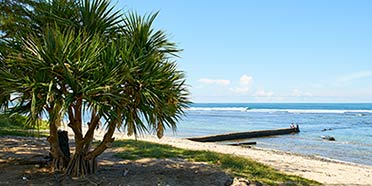
Réunion Travel Guide Réunion
- Weather & Climate
- Popular Routes
- Getting There
- Malaria & Vaccinations
Best Time To Visit – Réunion
Réunion is great to visit anytime outside the cyclone season from January to March. July to October are the driest months and the cool temperatures are ideal for hiking. Be warned though, the mornings and evenings are cold at this time. It gets very busy from July to the end of August as these are the main French school holidays.
May to November – Dry Season – Winter
- Lovely weather with lots of sunshine
- Not as hot and humid as the Wet season
- Perfect for hiking
- June to October is the whale watching season
- July and August are high-season months
December to April – Wet Season – Summer
- Low season; fewer visitors and lower rates
- Lots of rainfall and it is hot
- Cyclone season is January to March
- Christmas and Easter holidays are busy
Want To Visit Réunion?
Réunion Operators
- Tour Operators for Réunion
- Agency Tours

Search your next Holiday
Check our best destinations.
Things to see
Things to do
Our proposals, things to do and see.
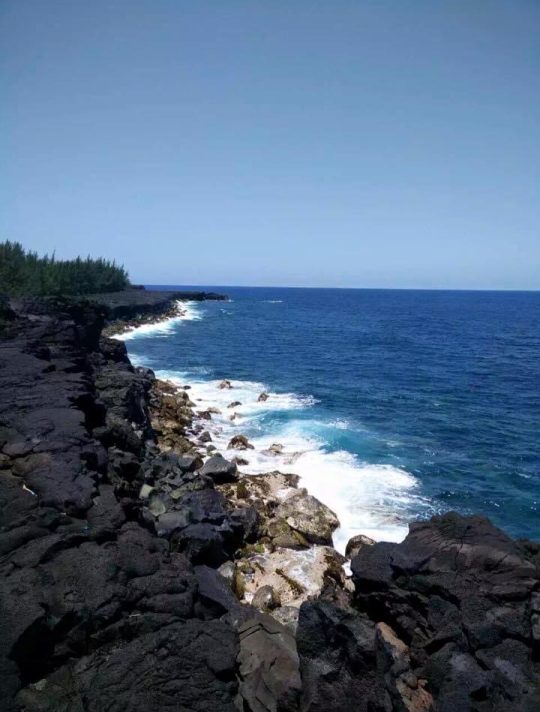
In the Water
Half and full day fishing
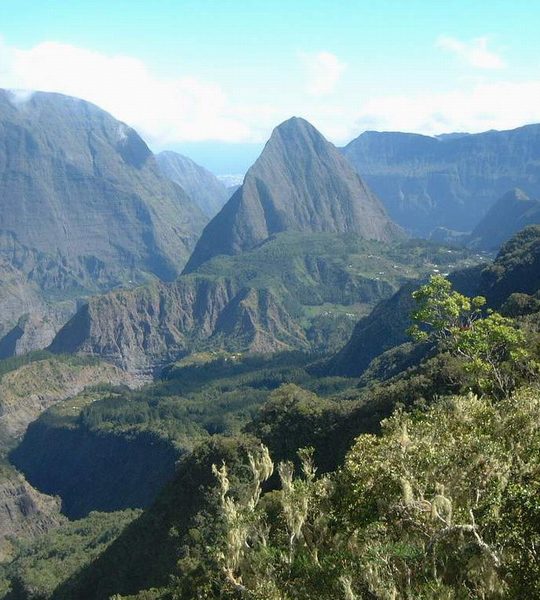
HALF DAY TOUR OF SAINT DENIS (North)
HALF DAY TOUR OF MAIDO (West)
FULL DAY TOUR OF SALAZIE & SAINT-DENIS (North East)
FULL DAY WILD SOUTH & LAVA TUBE (South)
FULL DAY VOLCANO & SAGA DU RHUM OR VOLCANO MUSEUM (South)
FULL DAY TOUR OF SALAZIE & VANILLA PLANTATION (East)
FULL DAY CIRQUE DE CILAOS (South)
6 NIGHTS / 7 DAYS PACKAGE FOR REUNION DISCOVERY TOUR
5 NIGHTS / 6 DAYS PACKAGE FOR REUNION DISCOVERY TOUR
4 NIGHTS / 5 DAYS PACKAGE FOR REUNION DISCOVERY TOUR
3 NIGHTS / 4 DAYS PACKAGE FOR REUNION DISCOVERY TOUR
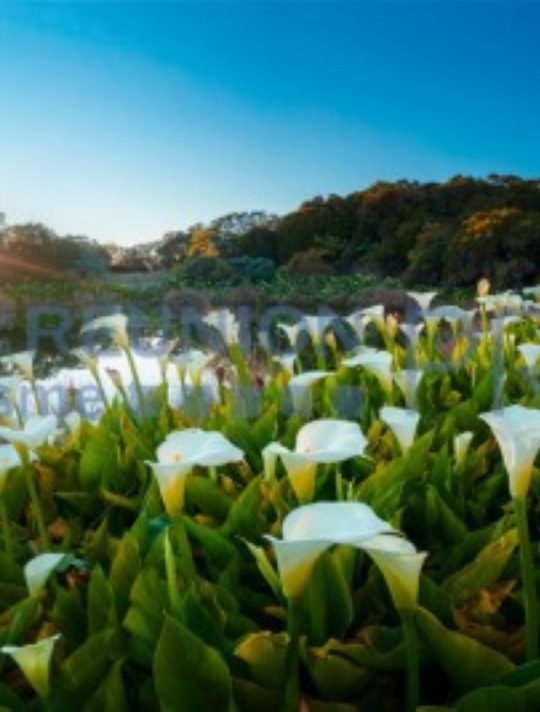
LA CAVERNE GENDARME 3H
Lava tunnel 2004 – 3h, lava tunnel – blue tunnel 3h.
HIKING TO BELOUVE – TROU DE FER (IRON HOLE)
HIKING TO PITON DES NEIGES
HIKING TO GRAND BASIN
HIKING TO MARLA IN MAFATE FOR THE DAY
HIKING TO PITON DE LA FOURNAISE VOLCANO
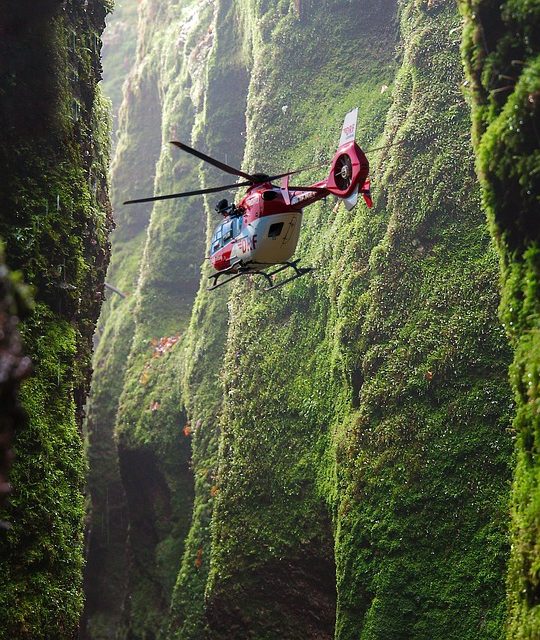
Helicopter – The “Excellence” Overflight Tour
Helicopter – HeliRando Grand Bassin
Helicopter – HeliRando Mafaté
Helicopter – At the Heart of the Waterfalls Tour
Helicopter – The Complete Tour (Tour de l’ile)
WHERE TO STAY
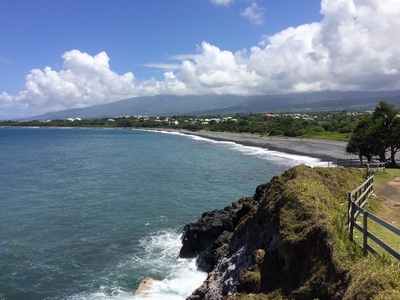
East & Cirques
Hotel – DIANA DEA LODGE *****
Hotel – LE CILAOS ****
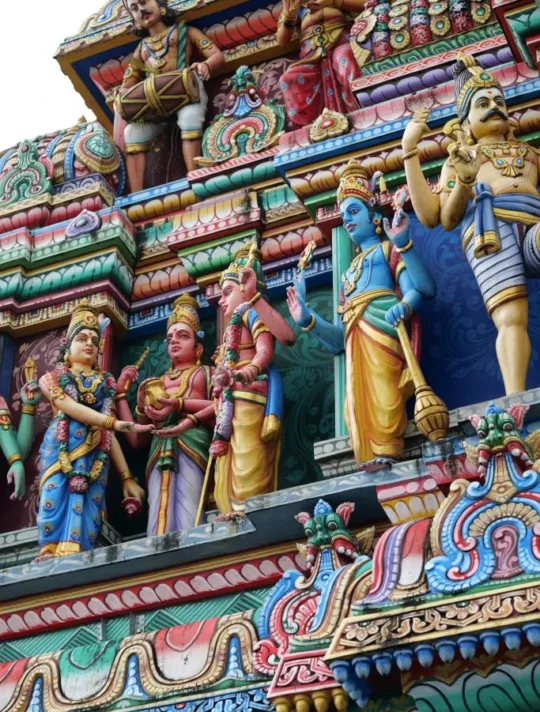
Hotel – DINA MORGABINE SAINT DENIS ***
Hotel – AUSTRAL HOTEL ***
Hotel – BELLEPIERRE HOTEL ****
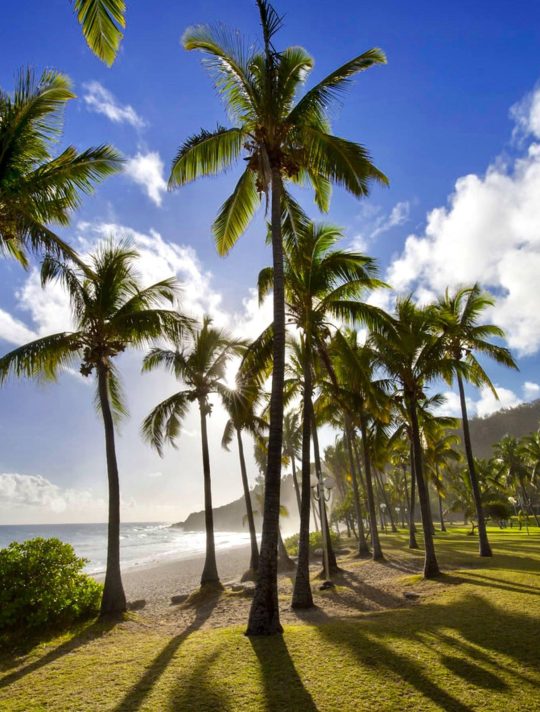
FULL DAY WILD SOUTH
Hotel – LE SAINT PIERRE HOTEL ***
Hotel – LES BATTANT DES LAMES ***
Hotel – VILLA DELISLE HOTEL & SPA ****
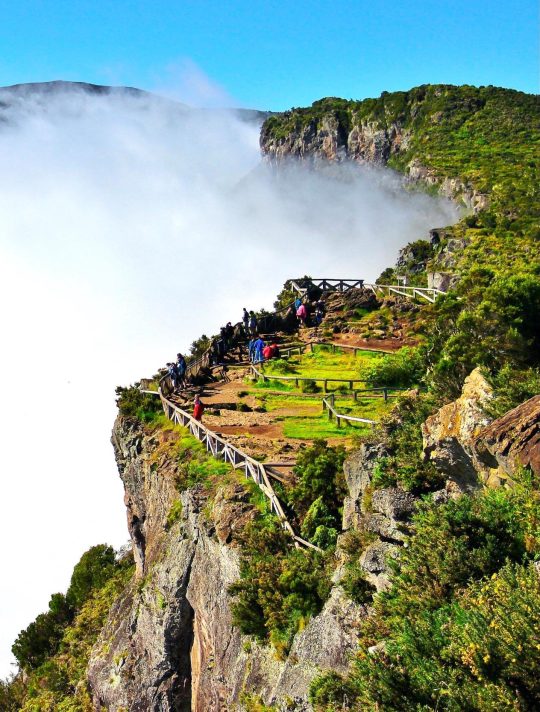
Hotel – THE TROPIC APPART HOTEL ***
Hotel – DINA MORGABINE SAINT GILLES ***
Hotel – RESIDENCE SANTA APOLONIA ****
Hotel – LUX SAINT GILLES RESORT *****
Next Holiday
THE REUNION APPROACH
TO LIVING TOGETHER AS ONE
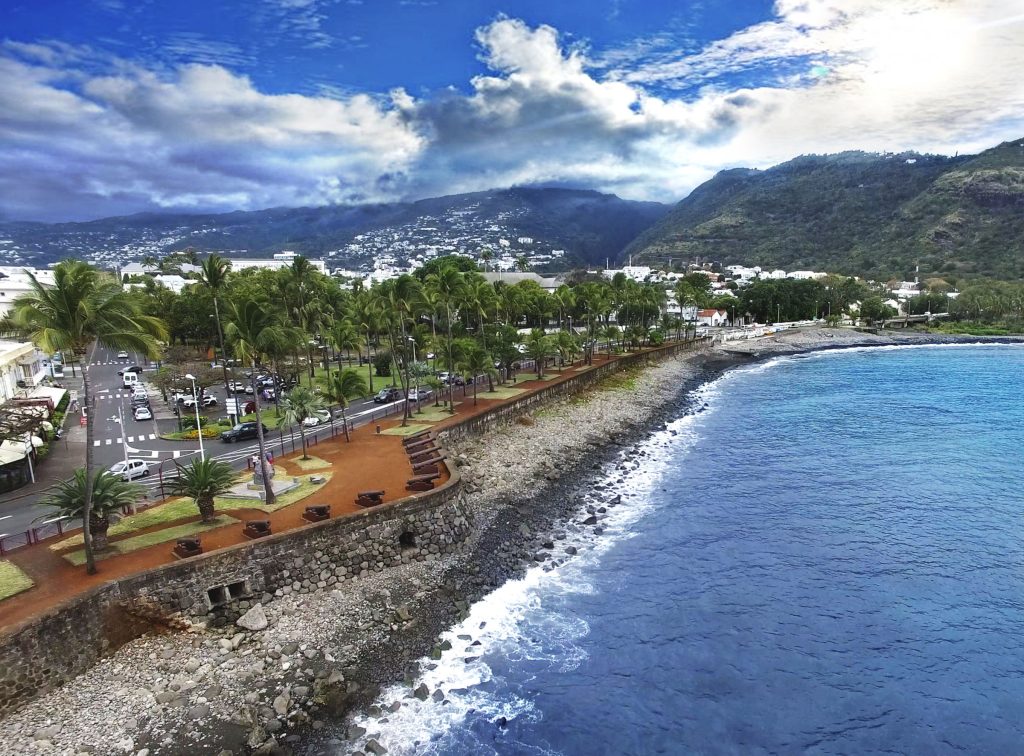
The Reunion approach to living together as one
Reunion Island is a land of variety, where you can find a diversity of cultures reflecting a rich history and illuminating the daily life in La Reunion.
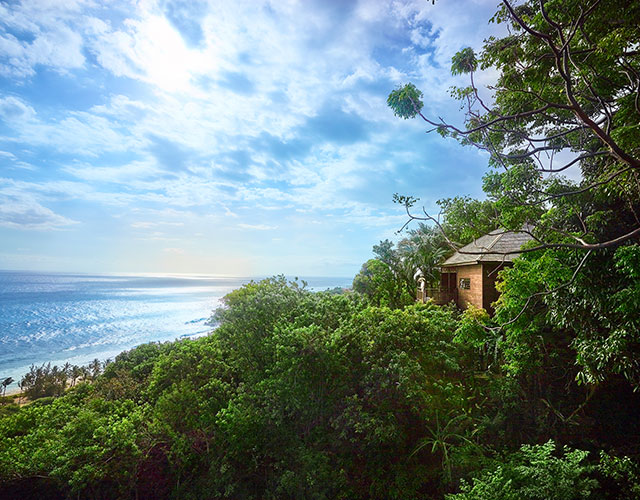
Facts about Réunion
What you need to know about The Reunion
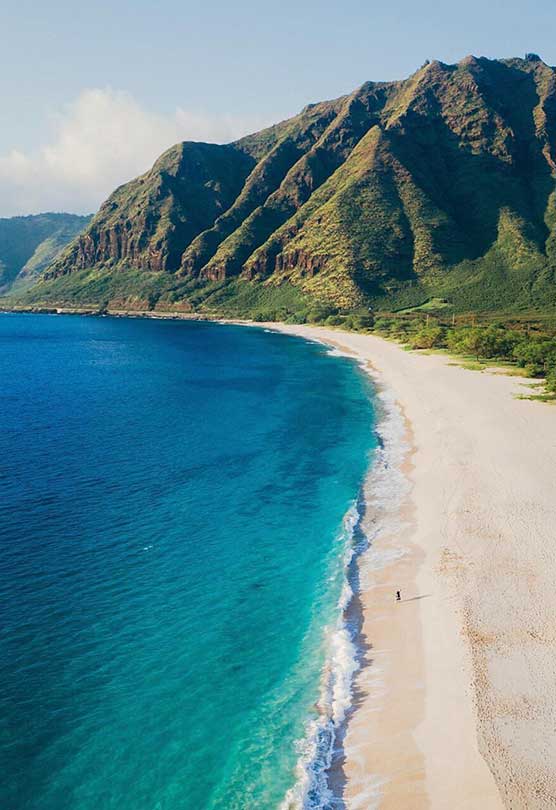
Information about Covid-19 (Update from 18th Sept-2021)
The health emergency status is extended until 15 November 2021 on Reunion Island.
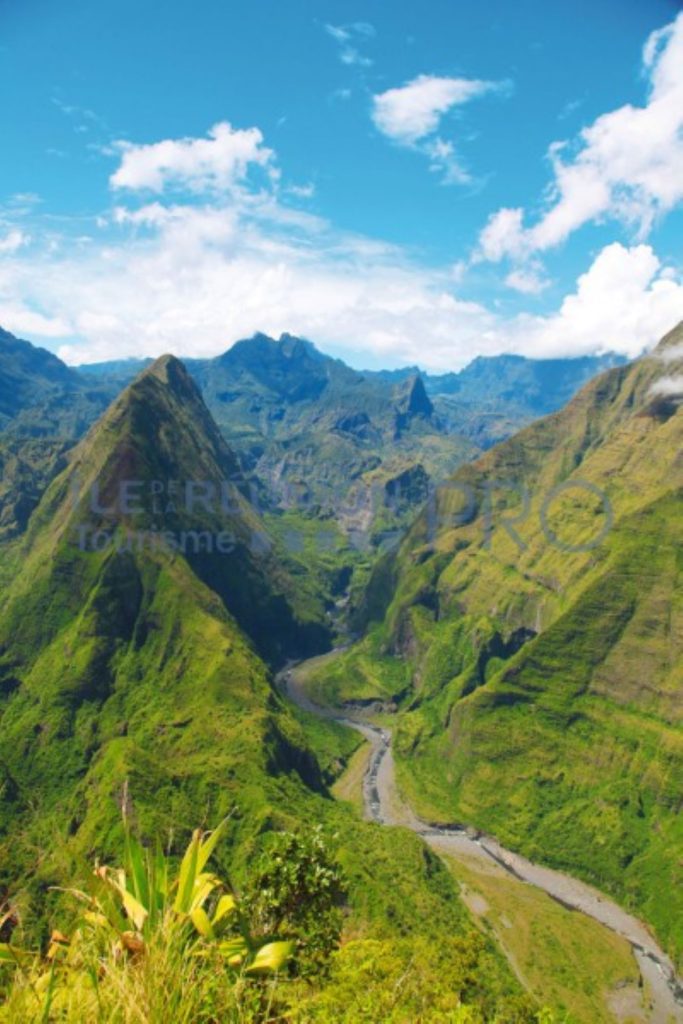
General Information
One island, several climates A variety of landscapes A unique language
Hikes in lush tropical forests, spectacular views over an active volcano, secret baths under waterfalls, cultural diversity… Réunion island has it all and more.
Emerging from the blue waters of the Indian Ocean, Reunion Island appears like a green emerald from a distance, with lush mountains and volcanic peaks creating an unforgettable scene. It's a place of breathtaking natural beauty and dramatic
Préparez vos prochaines vacances sur l’île de La Réunion dès maintenant et retrouvez tous les hôtels de l’île en ligne. Pour vous aiguiller, la zone balnéaire se trouve principalement dans l’ouest, mais aussi dans le sud notamment à Saint-Pierre. N’oubliez pas les hôtels des hauts qui ne manquerons pas de vous dépayser.
Enjoy Activities
Discover nature, enjoy a good deal, our promotions.
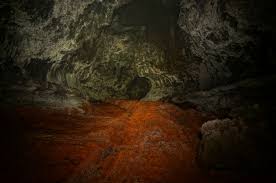
It is an unusual Tunnel which is more than 250 years old, with the ground completely oxidized !!
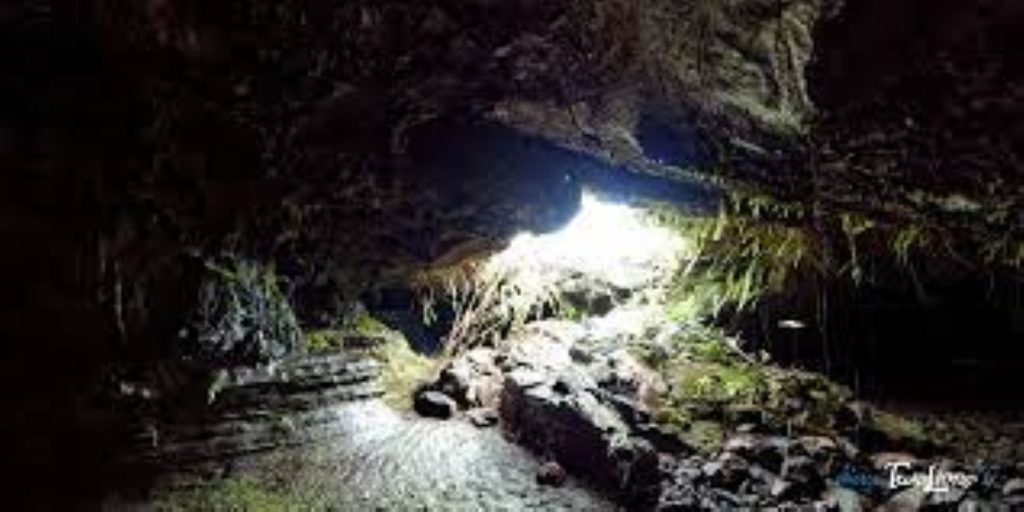
This is the most requested outing because it is accessible to all, out of the ordinary and full of crispy information on the volcano !!
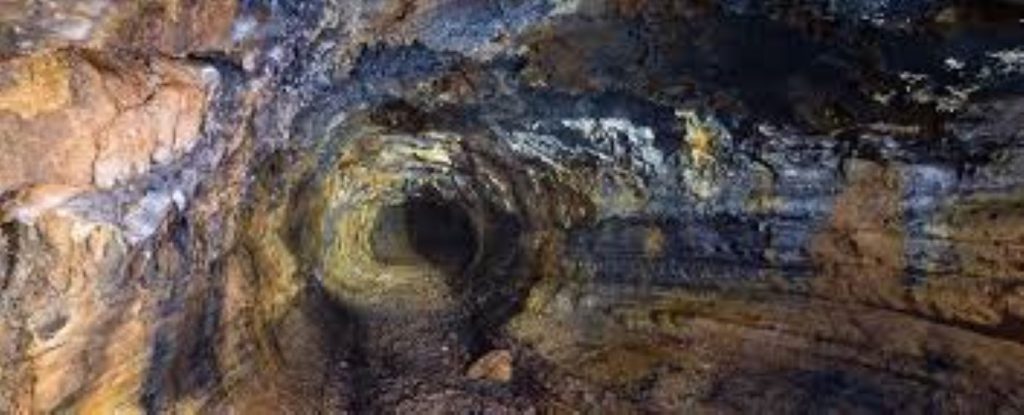
The Blue Tunnel is a magnificent private lava tunnel which is approximately 23,000 years old !!
KEEP IN TOUCH
Travel with us.

YRS Travel is positioned to take advantage of this growth and moderate competition in the island travel portion of the industry, with dedicated and experienced staff, excellent networking and effective management and marketing.
LAST MINUTE
Travel agency la reunion, come to visit la reunion 2024.

Best Time to Visit La Réunion

Climate Overview

General & Geography
Climate on la réunion.
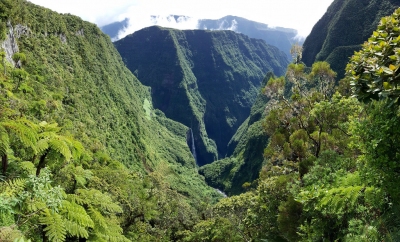
Beach Vacation in February

Best Time to Visit La Réunion: Overview
When is the best time to travel on la réunion, climate chart la réunion, saint denis.
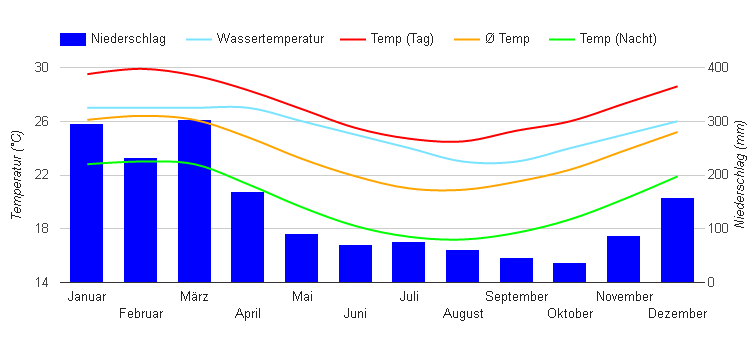
Source of Data: German Weather Service (Offenbach) and Wikipedia
Climate Table La Réunion
Temperatures, precipitation, sunshine in saint denis (la réunion), current weather and forecast.
Best Time to Travel for the Regions
Saint Denis: all except January, February, March, and April

Distances to La Réunion
Where’s la réunion, continent: africa, la réunion: experiences of our visitors.

Very pleasant climate. Met a lot of nice people. All in all a successful work assignment.
Weather Rating: 5 stars – Excellent

In the morning the weather was great with blue sky. Around 12 o’clock it got clogged up in the mountains. It was usually very good by the sea.
Weather Rating: 4 stars – Good

Sunny, very warm on the coast, occasional short showers. In the mountains clear view in the morning, from noon often cloudy and rarely rain. Getting up early is definitely worth it, then great walks are possible.

It was nice and warm on the beach and pleasant to hike in the mountains.
Landed in pouring rain and everywhere waterfalls on the slopes, which was very impressive. Unfortunately, some hiking trails are not usable, but there is always (!) an alternative on this versatile island…It is also worth getting up early and seeing fantastic mountain panoramas that cannot even be guessed behind the clouds, all the more gigantic when the wind breaks up the clouds…It was always very warm, even rather humid…in the higher altitudes pleasant… All high peaks were seen several times in the 3 weeks..The sea was pleasant for swimming, diving and snorkelling, clear water…

Hello, we had it mostly sunny partly cloudy but always pleasant
Weather Rating: 3 stars – Mixed

many showers and sunshine alternated but always pleasantly warm
warm, sunny occasional rain, sea bath temperature, clear blue water
From late in the morning it often clammed up. Then it rained in showers every now and then. The temperatures were muggy-hot with about 30 degrees. The mountain peaks were never visible during our stay of 7 days. Unfortunately always cloudy.
It was pleasantly warm, but not too hot, unfortunately it rained on some days. Unfortunately, the humidity during the hikes was a little bit too humid.

on the west coast nice and warm.in the mountains (cirques) in the morning very nice ,covered in the afternoon light rain east coast
Share your Experience and Win
Destinations in the Vicinity …
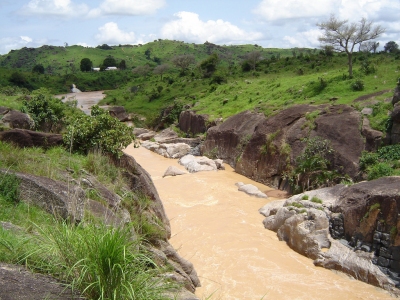
- Imprint / Privacy
- Image Sources
You are using an outdated browser. Upgrade your browser today or install Google Chrome Frame to better experience this site.
Réunion (France) Traveler View
Travel health notices, vaccines and medicines, non-vaccine-preventable diseases, stay healthy and safe.
- Packing List
After Your Trip
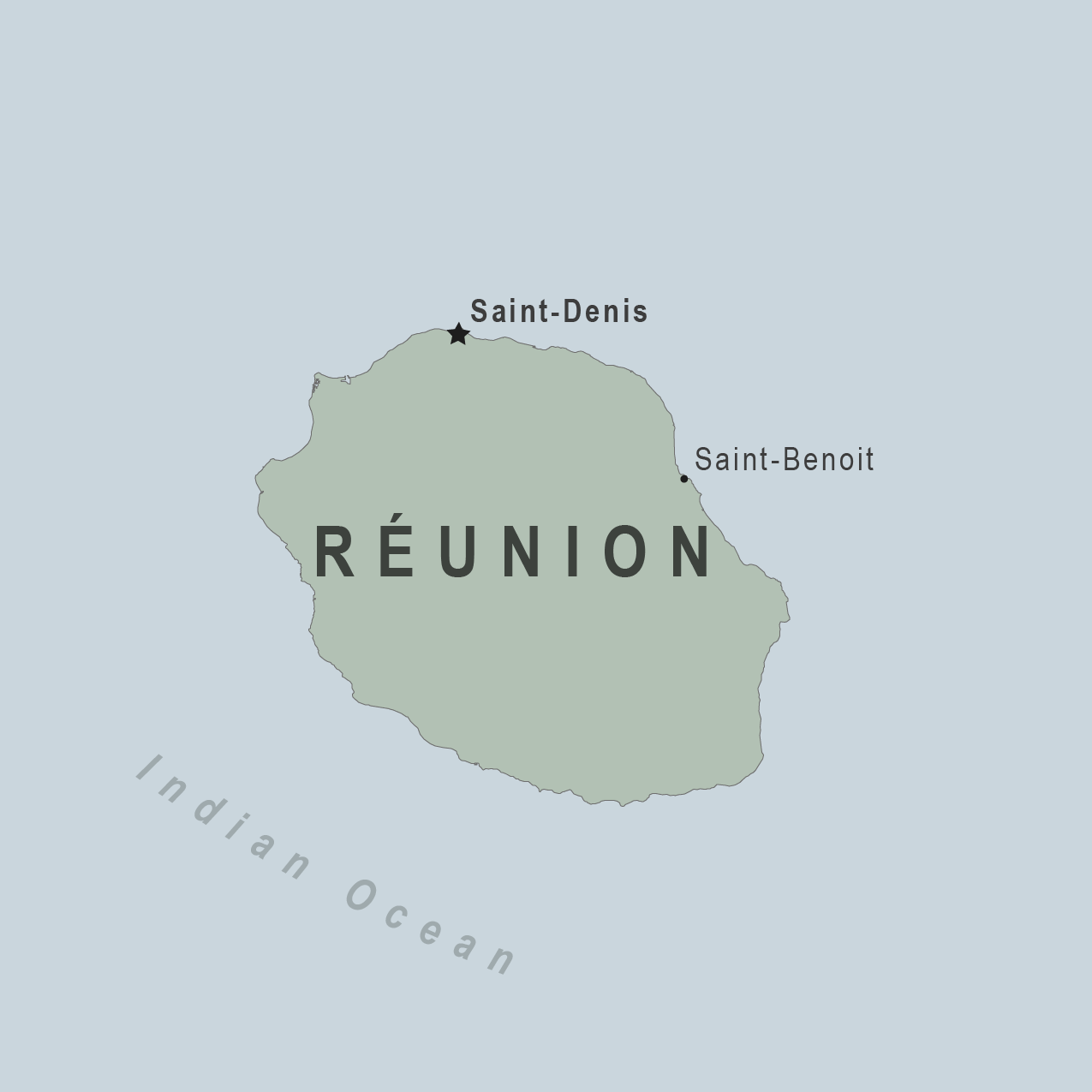
There are no notices currently in effect for Réunion (France).
⇧ Top
Check the vaccines and medicines list and visit your doctor at least a month before your trip to get vaccines or medicines you may need. If you or your doctor need help finding a location that provides certain vaccines or medicines, visit the Find a Clinic page.
Routine vaccines
Recommendations.
Make sure you are up-to-date on all routine vaccines before every trip. Some of these vaccines include
- Chickenpox (Varicella)
- Diphtheria-Tetanus-Pertussis
- Flu (influenza)
- Measles-Mumps-Rubella (MMR)
Immunization schedules
All eligible travelers should be up to date with their COVID-19 vaccines. Please see Your COVID-19 Vaccination for more information.
COVID-19 vaccine
Hepatitis A
Recommended for unvaccinated travelers one year old or older going to Réunion.
Infants 6 to 11 months old should also be vaccinated against Hepatitis A. The dose does not count toward the routine 2-dose series.
Travelers allergic to a vaccine component or who are younger than 6 months should receive a single dose of immune globulin, which provides effective protection for up to 2 months depending on dosage given.
Unvaccinated travelers who are over 40 years old, immunocompromised, or have chronic medical conditions planning to depart to a risk area in less than 2 weeks should get the initial dose of vaccine and at the same appointment receive immune globulin.
Hepatitis A - CDC Yellow Book
Dosing info - Hep A
Hepatitis B
Recommended for unvaccinated travelers of all ages traveling to Réunion.
Hepatitis B - CDC Yellow Book
Dosing info - Hep B
Cases of measles are on the rise worldwide. Travelers are at risk of measles if they have not been fully vaccinated at least two weeks prior to departure, or have not had measles in the past, and travel internationally to areas where measles is spreading.
All international travelers should be fully vaccinated against measles with the measles-mumps-rubella (MMR) vaccine, including an early dose for infants 6–11 months, according to CDC’s measles vaccination recommendations for international travel .
Measles (Rubeola) - CDC Yellow Book
Réunion is free of dog rabies. However, rabies may still be present in wildlife species, particularly bats. CDC recommends rabies vaccination before travel only for people working directly with wildlife. These people may include veterinarians, animal handlers, field biologists, or laboratory workers working with specimens from mammalian species.
Rabies - CDC Yellow Book
Recommended for most travelers, especially those staying with friends or relatives or visiting smaller cities or rural areas.
Typhoid - CDC Yellow Book
Dosing info - Typhoid
Avoid contaminated water
Leptospirosis
How most people get sick (most common modes of transmission)
- Touching urine or other body fluids from an animal infected with leptospirosis
- Swimming or wading in urine-contaminated fresh water, or contact with urine-contaminated mud
- Drinking water or eating food contaminated with animal urine
- Avoid contaminated water and soil
Clinical Guidance
Avoid bug bites, african tick-bite fever.
- Avoid Bug Bites
African Tick-bite fever
Chikungunya
- Mosquito bite
- Mosquito bite
Airborne & droplet
- Breathing in air or accidentally eating food contaminated with the urine, droppings, or saliva of infected rodents
- Bite from an infected rodent
- Less commonly, being around someone sick with hantavirus (only occurs with Andes virus)
- Avoid rodents and areas where they live
- Avoid sick people
Tuberculosis (TB)
- Breathe in TB bacteria that is in the air from an infected and contagious person coughing, speaking, or singing.
Counsel your patients on actions they can take on their trip to stay healthy and safe.
Eat and drink safely
Food and water standards around the world vary based on the destination. Standards may also differ within a country and risk may change depending on activity type (e.g., hiking versus business trip). You can learn more about safe food and drink choices when traveling by accessing the resources below.
- Choose Safe Food and Drinks When Traveling
- Water Treatment Options When Hiking, Camping or Traveling
- Global Water, Sanitation and Hygiene | Healthy Water
- Avoid Contaminated Water During Travel
You can also visit the Department of State Country Information Pages for additional information about food and water safety.
Prevent bug bites
Bugs (like mosquitoes, ticks, and fleas) can spread a number of diseases in Réunion. Many of these diseases cannot be prevented with a vaccine or medicine. You can reduce your risk by taking steps to prevent bug bites.
What can I do to prevent bug bites?
- Cover exposed skin by wearing long-sleeved shirts, long pants, and hats.
- Use an appropriate insect repellent (see below).
- Use permethrin-treated clothing and gear (such as boots, pants, socks, and tents). Do not use permethrin directly on skin.
- Stay and sleep in air-conditioned or screened rooms.
- Use a bed net if the area where you are sleeping is exposed to the outdoors.
What type of insect repellent should I use?
- FOR PROTECTION AGAINST TICKS AND MOSQUITOES: Use a repellent that contains 20% or more DEET for protection that lasts up to several hours.
- Picaridin (also known as KBR 3023, Bayrepel, and icaridin)
- Oil of lemon eucalyptus (OLE) or para-menthane-diol (PMD)
- 2-undecanone
- Always use insect repellent as directed.
What should I do if I am bitten by bugs?
- Avoid scratching bug bites, and apply hydrocortisone cream or calamine lotion to reduce the itching.
- Check your entire body for ticks after outdoor activity. Be sure to remove ticks properly.
What can I do to avoid bed bugs?
Although bed bugs do not carry disease, they are an annoyance. See our information page about avoiding bug bites for some easy tips to avoid them. For more information on bed bugs, see Bed Bugs .
For more detailed information on avoiding bug bites, see Avoid Bug Bites .
Stay safe outdoors
If your travel plans in Réunion include outdoor activities, take these steps to stay safe and healthy during your trip.
- Stay alert to changing weather conditions and adjust your plans if conditions become unsafe.
- Prepare for activities by wearing the right clothes and packing protective items, such as bug spray, sunscreen, and a basic first aid kit.
- Consider learning basic first aid and CPR before travel. Bring a travel health kit with items appropriate for your activities.
- If you are outside for many hours in heat, eat salty snacks and drink water to stay hydrated and replace salt lost through sweating.
- Protect yourself from UV radiation : use sunscreen with an SPF of at least 15, wear protective clothing, and seek shade during the hottest time of day (10 a.m.–4 p.m.).
- Be especially careful during summer months and at high elevation. Because sunlight reflects off snow, sand, and water, sun exposure may be increased during activities like skiing, swimming, and sailing.
- Very cold temperatures can be dangerous. Dress in layers and cover heads, hands, and feet properly if you are visiting a cold location.
Stay safe around water
- Swim only in designated swimming areas. Obey lifeguards and warning flags on beaches.
- Practice safe boating—follow all boating safety laws, do not drink alcohol if driving a boat, and always wear a life jacket.
- Do not dive into shallow water.
- Do not swim in freshwater in developing areas or where sanitation is poor.
- Avoid swallowing water when swimming. Untreated water can carry germs that make you sick.
- To prevent infections, wear shoes on beaches where there may be animal waste.
Keep away from animals
Most animals avoid people, but they may attack if they feel threatened, are protecting their young or territory, or if they are injured or ill. Animal bites and scratches can lead to serious diseases such as rabies.
Follow these tips to protect yourself:
- Do not touch or feed any animals you do not know.
- Do not allow animals to lick open wounds, and do not get animal saliva in your eyes or mouth.
- Avoid rodents and their urine and feces.
- Traveling pets should be supervised closely and not allowed to come in contact with local animals.
- If you wake in a room with a bat, seek medical care immediately. Bat bites may be hard to see.
All animals can pose a threat, but be extra careful around dogs, bats, monkeys, sea animals such as jellyfish, and snakes. If you are bitten or scratched by an animal, immediately:
- Wash the wound with soap and clean water.
- Go to a doctor right away.
- Tell your doctor about your injury when you get back to the United States.
Consider buying medical evacuation insurance. Rabies is a deadly disease that must be treated quickly, and treatment may not be available in some countries.
Reduce your exposure to germs
Follow these tips to avoid getting sick or spreading illness to others while traveling:
- Wash your hands often, especially before eating.
- If soap and water aren’t available, clean hands with hand sanitizer (containing at least 60% alcohol).
- Don’t touch your eyes, nose, or mouth. If you need to touch your face, make sure your hands are clean.
- Cover your mouth and nose with a tissue or your sleeve (not your hands) when coughing or sneezing.
- Try to avoid contact with people who are sick.
- If you are sick, stay home or in your hotel room, unless you need medical care.
Avoid sharing body fluids
Diseases can be spread through body fluids, such as saliva, blood, vomit, and semen.
Protect yourself:
- Use latex condoms correctly.
- Do not inject drugs.
- Limit alcohol consumption. People take more risks when intoxicated.
- Do not share needles or any devices that can break the skin. That includes needles for tattoos, piercings, and acupuncture.
- If you receive medical or dental care, make sure the equipment is disinfected or sanitized.
Know how to get medical care while traveling
Plan for how you will get health care during your trip, should the need arise:
- Carry a list of local doctors and hospitals at your destination.
- Review your health insurance plan to determine what medical services it would cover during your trip. Consider purchasing travel health and medical evacuation insurance.
- Carry a card that identifies, in the local language, your blood type, chronic conditions or serious allergies, and the generic names of any medications you take.
- Some prescription drugs may be illegal in other countries. Call Réunion’s embassy to verify that all of your prescription(s) are legal to bring with you.
- Bring all the medicines (including over-the-counter medicines) you think you might need during your trip, including extra in case of travel delays. Ask your doctor to help you get prescriptions filled early if you need to.
Many foreign hospitals and clinics are accredited by the Joint Commission International. A list of accredited facilities is available at their website ( www.jointcommissioninternational.org ).
In some countries, medicine (prescription and over-the-counter) may be substandard or counterfeit. Bring the medicines you will need from the United States to avoid having to buy them at your destination.
Select safe transportation
Motor vehicle crashes are the #1 killer of healthy US citizens in foreign countries.
In many places cars, buses, large trucks, rickshaws, bikes, people on foot, and even animals share the same lanes of traffic, increasing the risk for crashes.
Be smart when you are traveling on foot.
- Use sidewalks and marked crosswalks.
- Pay attention to the traffic around you, especially in crowded areas.
- Remember, people on foot do not always have the right of way in other countries.
Riding/Driving
Choose a safe vehicle.
- Choose official taxis or public transportation, such as trains and buses.
- Ride only in cars that have seatbelts.
- Avoid overcrowded, overloaded, top-heavy buses and minivans.
- Avoid riding on motorcycles or motorbikes, especially motorbike taxis. (Many crashes are caused by inexperienced motorbike drivers.)
- Choose newer vehicles—they may have more safety features, such as airbags, and be more reliable.
- Choose larger vehicles, which may provide more protection in crashes.
Think about the driver.
- Do not drive after drinking alcohol or ride with someone who has been drinking.
- Consider hiring a licensed, trained driver familiar with the area.
- Arrange payment before departing.
Follow basic safety tips.
- Wear a seatbelt at all times.
- Sit in the back seat of cars and taxis.
- When on motorbikes or bicycles, always wear a helmet. (Bring a helmet from home, if needed.)
- Avoid driving at night; street lighting in certain parts of Réunion may be poor.
- Do not use a cell phone or text while driving (illegal in many countries).
- Travel during daylight hours only, especially in rural areas.
- If you choose to drive a vehicle in Réunion, learn the local traffic laws and have the proper paperwork.
- Get any driving permits and insurance you may need. Get an International Driving Permit (IDP). Carry the IDP and a US-issued driver's license at all times.
- Check with your auto insurance policy's international coverage, and get more coverage if needed. Make sure you have liability insurance.
- Avoid using local, unscheduled aircraft.
- If possible, fly on larger planes (more than 30 seats); larger airplanes are more likely to have regular safety inspections.
- Try to schedule flights during daylight hours and in good weather.
Medical Evacuation Insurance
If you are seriously injured, emergency care may not be available or may not meet US standards. Trauma care centers are uncommon outside urban areas. Having medical evacuation insurance can be helpful for these reasons.
Helpful Resources
Road Safety Overseas (Information from the US Department of State): Includes tips on driving in other countries, International Driving Permits, auto insurance, and other resources.
The Association for International Road Travel has country-specific Road Travel Reports available for most countries for a minimal fee.
Maintain personal security
Use the same common sense traveling overseas that you would at home, and always stay alert and aware of your surroundings.
Before you leave
- Research your destination(s), including local laws, customs, and culture.
- Monitor travel advisories and alerts and read travel tips from the US Department of State.
- Enroll in the Smart Traveler Enrollment Program (STEP) .
- Leave a copy of your itinerary, contact information, credit cards, and passport with someone at home.
- Pack as light as possible, and leave at home any item you could not replace.
While at your destination(s)
- Carry contact information for the nearest US embassy or consulate .
- Carry a photocopy of your passport and entry stamp; leave the actual passport securely in your hotel.
- Follow all local laws and social customs.
- Do not wear expensive clothing or jewelry.
- Always keep hotel doors locked, and store valuables in secure areas.
- If possible, choose hotel rooms between the 2nd and 6th floors.
Healthy Travel Packing List
Remind your patients to pack health and safety items. Use the Healthy Travel Packing List for Réunion (France) for a list of health-related items they should consider packing.
If you are not feeling well after your trip, you may need to see a doctor. If you need help finding a travel medicine specialist, see Find a Clinic . Be sure to tell your doctor about your travel, including where you went and what you did on your trip. Also tell your doctor if you were bitten or scratched by an animal while traveling.
For more information on what to do if you are sick after your trip, see Getting Sick after Travel .
Map Disclaimer - The boundaries and names shown and the designations used on maps do not imply the expression of any opinion whatsoever on the part of the Centers for Disease Control and Prevention concerning the legal status of any country, territory, city or area or of its authorities, or concerning the delimitation of its frontiers or boundaries. Approximate border lines for which there may not yet be full agreement are generally marked.
Other Destinations
If you need help finding travel information:
Message & data rates may apply. CDC Privacy Policy
File Formats Help:
- Adobe PDF file
- Microsoft PowerPoint file
- Microsoft Word file
- Microsoft Excel file
- Audio/Video file
- Apple Quicktime file
- RealPlayer file
- Zip Archive file
Exit Notification / Disclaimer Policy
- The Centers for Disease Control and Prevention (CDC) cannot attest to the accuracy of a non-federal website.
- Linking to a non-federal website does not constitute an endorsement by CDC or any of its employees of the sponsors or the information and products presented on the website.
- You will be subject to the destination website's privacy policy when you follow the link.
- CDC is not responsible for Section 508 compliance (accessibility) on other federal or private website.
- Skip to main content
- Skip to "About this site"
Language selection
Search travel.gc.ca.
Help us to improve our website. Take our survey !
COVID-19: travel health notice for all travellers
Réunion travel advice
Latest updates: The Health section was updated - travel health information (Public Health Agency of Canada)
Last updated: May 6, 2024 10:24 ET
On this page
Safety and security, entry and exit requirements, laws and culture, natural disasters and climate, réunion - take normal security precautions.
Take normal security precautions in Réunion
Back to top
Demonstrations and civil unrest
Demonstrations and civil unrest occur from time to time. Even peaceful demonstrations can turn violent at any time. They can also lead to disruptions to traffic and public transportation.
Mass gatherings (large-scale events)
The crime rate is low in Réunion. However, petty crime, such as pickpocketing and bag snatching, could occur.
Ensure that your personal belongings, including your passport and other travel documents, are secure at all times.
Violent crime
Although rare, violent incidents, such as sexual assaults and homicides, do sometimes occur.
Road safety
Road conditions and road safety are very good throughout the island.
Roads are well maintained but may become quickly congested in bad weather conditions. The sole main road, that goes around the island along the coastline, may become impassable in case of heavy rainfall. Some roads are narrow and winding. Night driving can be dangerous, especially in the mountains and on rural roads.
Public transportation
Bus services are safe. Both urban and inter-city bus transportation is available.
Taxis are safe but expensive.
Fares must be displayed in taxis. Despite the regulated price, you should agree on a fare prior to departure.
Coastal waters can be dangerous. Riptides are common. Several drownings occur each year.
Shark attacks
Shark attacks occur yearly, resulting in fatalities.
To reduce the risk of deadly shark attacks, local authorities supervise water activities, such as swimming and surfing, in some designated areas. It’s forbidden to practice aquatic activities in dangerous areas.
- Exercise caution when swimming or surfing
- Respect the flag warnings, which provide notice of water conditions and shark risks
- Follow the instructions and warnings of local authorities
Stonefish stings are rare but can, in some cases, be fatal. You should get immediate medical attention if stung. Many hotels carry anti-venom serum.
- Ensure that your travel insurance covers accidents related to recreational activities
Useful links
- Prevention and reduction of shark risk – La Réunion state services (in French)
- Water safety abroad
The Piton de la Fournaise volcano is active, unpredictable and experiences random eruptions. Local authorities have strict regulations in place regarding access to the volcano.
If you intend on hiking:
- never do so alone and always hire an experienced guide from a reputable company
- buy travel insurance that includes helicopter rescue and medical evacuation
- ensure that your physical condition is good enough to meet the challenges of your activity
- ensure that you’re properly equipped and well informed about weather and other conditions that may pose a hazard
- inform a family member or friend of your itinerary, including when you expect to be back to camp
- obtain detailed information on trekking routes before setting out and do not venture off marked trails
Information about Piton de la Fournaise - Piton de La Fournaise observatory (in French)
Women’s safety
Women travelling alone may be subject to certain forms of harassment and verbal abuse.
Advice for women travellers
Pirate attacks and armed robbery against ships occur in coastal waters and, in some cases, farther out at sea. Attacks in the Indian ocean cannot be ruled out.
Mariners should take appropriate precautions.
Live Piracy Report - International Maritime Bureau
We do not make assessments on the compliance of foreign domestic airlines with international safety standards.
Information about foreign domestic airlines
Réunion is a French overseas department. However, it’s not part of the Schengen Area.
Every country or territory decides who can enter or exit through its borders. The Government of Canada cannot intervene on your behalf if you do not meet your destination’s entry or exit requirements.
We have obtained the information on this page from French authorities. It can, however, change at any time.
Verify this information with the Foreign Representatives in Canada .
Entry requirements vary depending on the type of passport you use for travel.
Before you travel, check with your transportation company about passport requirements. Its rules on passport validity may be more stringent than the country’s entry rules.
Regular Canadian passport
Your passport must be valid at least 3 months beyond the date you expect to leave from Réunion.
Passport for official travel
Different entry rules may apply.
Official travel
Passport with “X” gender identifier
While the Government of Canada issues passports with an “X” gender identifier, it cannot guarantee your entry or transit through other countries. You might face entry restrictions in countries that do not recognize the “X” gender identifier. Before you leave, check with the closest foreign representative for your destination.
Other travel documents
Different entry rules may apply when travelling with a temporary passport or an emergency travel document. Before you leave, check with the closest foreign representative for your destination.
- Foreign Representatives in Canada
- Canadian passports
Tourist visa: not required for stays up to 90 days Residence visa: required Work visa: required Business visa: required Student visa: required
Other entry requirements
Customs officials may ask you to show them a return or onward ticket and proof of accommodation and sufficient funds to cover your stay.
Children and travel
Learn more about travelling with children .
Yellow fever
Learn about potential entry requirements related to yellow fever (vaccines section).
Relevant Travel Health Notices
- Global Measles Notice - 13 March, 2024
- COVID-19 and International Travel - 13 March, 2024
This section contains information on possible health risks and restrictions regularly found or ongoing in the destination. Follow this advice to lower your risk of becoming ill while travelling. Not all risks are listed below.
Consult a health care professional or visit a travel health clinic preferably 6 weeks before you travel to get personalized health advice and recommendations.
Routine vaccines
Be sure that your routine vaccinations , as per your province or territory , are up-to-date before travelling, regardless of your destination.
Some of these vaccinations include measles-mumps-rubella (MMR), diphtheria, tetanus, pertussis, polio, varicella (chickenpox), influenza and others.
Pre-travel vaccines and medications
You may be at risk for preventable diseases while travelling in this destination. Talk to a travel health professional about which medications or vaccines may be right for you, based on your destination and itinerary.
Yellow fever is a disease caused by a flavivirus from the bite of an infected mosquito.
Travellers get vaccinated either because it is required to enter a country or because it is recommended for their protection.
- There is no risk of yellow fever in this country.
Country Entry Requirement*
- Proof of vaccination is not required to enter this country.
Recommendation
- Vaccination is not recommended.
* It is important to note that country entry requirements may not reflect your risk of yellow fever at your destination. It is recommended that you contact the nearest diplomatic or consular office of the destination(s) you will be visiting to verify any additional entry requirements.
About Yellow Fever
Yellow Fever Vaccination Centres in Canada
There is a risk of hepatitis A in this destination. It is a disease of the liver. People can get hepatitis A if they ingest contaminated food or water, eat foods prepared by an infectious person, or if they have close physical contact (such as oral-anal sex) with an infectious person, although casual contact among people does not spread the virus.
Practise safe food and water precautions and wash your hands often. Vaccination is recommended for all travellers to areas where hepatitis A is present.
Measles is a highly contagious viral disease. It can spread quickly from person to person by direct contact and through droplets in the air.
Anyone who is not protected against measles is at risk of being infected with it when travelling internationally.
Regardless of where you are going, talk to a health care professional before travelling to make sure you are fully protected against measles.
Hepatitis B is a risk in every destination. It is a viral liver disease that is easily transmitted from one person to another through exposure to blood and body fluids containing the hepatitis B virus. Travellers who may be exposed to blood or other bodily fluids (e.g., through sexual contact, medical treatment, sharing needles, tattooing, acupuncture or occupational exposure) are at higher risk of getting hepatitis B.
Hepatitis B vaccination is recommended for all travellers. Prevent hepatitis B infection by practicing safe sex, only using new and sterile drug equipment, and only getting tattoos and piercings in settings that follow public health regulations and standards.
Coronavirus disease (COVID-19) is an infectious viral disease. It can spread from person to person by direct contact and through droplets in the air.
It is recommended that all eligible travellers complete a COVID-19 vaccine series along with any additional recommended doses in Canada before travelling. Evidence shows that vaccines are very effective at preventing severe illness, hospitalization and death from COVID-19. While vaccination provides better protection against serious illness, you may still be at risk of infection from the virus that causes COVID-19. Anyone who has not completed a vaccine series is at increased risk of being infected with the virus that causes COVID-19 and is at greater risk for severe disease when travelling internationally.
Before travelling, verify your destination’s COVID-19 vaccination entry/exit requirements. Regardless of where you are going, talk to a health care professional before travelling to make sure you are adequately protected against COVID-19.
The best way to protect yourself from seasonal influenza (flu) is to get vaccinated every year. Get the flu shot at least 2 weeks before travelling.
The flu occurs worldwide.
- In the Northern Hemisphere, the flu season usually runs from November to April.
- In the Southern Hemisphere, the flu season usually runs between April and October.
- In the tropics, there is flu activity year round.
The flu vaccine available in one hemisphere may only offer partial protection against the flu in the other hemisphere.
The flu virus spreads from person to person when they cough or sneeze or by touching objects and surfaces that have been contaminated with the virus. Clean your hands often and wear a mask if you have a fever or respiratory symptoms.
In this destination, rabies may be present in some wildlife species, including bats. Rabies is a deadly disease that spreads to humans primarily through bites or scratches from an infected animal.
If you are bitten or scratched by an animal while travelling, immediately wash the wound with soap and clean water and see a health care professional.
Before travel, discuss rabies vaccination with a health care professional. It may be recommended for travellers who will be working directly with wildlife.
Safe food and water precautions
Many illnesses can be caused by eating food or drinking beverages contaminated by bacteria, parasites, toxins, or viruses, or by swimming or bathing in contaminated water.
- Learn more about food and water precautions to take to avoid getting sick by visiting our eat and drink safely abroad page. Remember: Boil it, cook it, peel it, or leave it!
- Avoid getting water into your eyes, mouth or nose when swimming or participating in activities in freshwater (streams, canals, lakes), particularly after flooding or heavy rain. Water may look clean but could still be polluted or contaminated.
- Avoid inhaling or swallowing water while bathing, showering, or swimming in pools or hot tubs.
Travellers' diarrhea is the most common illness affecting travellers. It is spread from eating or drinking contaminated food or water.
Risk of developing travellers' diarrhea increases when travelling in regions with poor standards of hygiene and sanitation. Practise safe food and water precautions.
The most important treatment for travellers' diarrhea is rehydration (drinking lots of fluids). Carry oral rehydration salts when travelling.
Typhoid is a bacterial infection spread by contaminated food or water. Risk is higher among children, travellers going to rural areas, travellers visiting friends and relatives or those travelling for a long period of time.
Travellers visiting regions with a risk of typhoid, especially those exposed to places with poor sanitation, should speak to a health care professional about vaccination.
Insect bite prevention
Many diseases are spread by the bites of infected insects such as mosquitoes, ticks, fleas or flies. When travelling to areas where infected insects may be present:
- Use insect repellent (bug spray) on exposed skin
- Cover up with light-coloured, loose clothes made of tightly woven materials such as nylon or polyester
- Minimize exposure to insects
- Use mosquito netting when sleeping outdoors or in buildings that are not fully enclosed
To learn more about how you can reduce your risk of infection and disease caused by bites, both at home and abroad, visit our insect bite prevention page.
Find out what types of insects are present where you’re travelling, when they’re most active, and the symptoms of the diseases they spread.
There is a risk of chikungunya in this country. The risk may vary between regions of a country. Chikungunya is a virus spread through the bite of an infected mosquito. Chikungunya can cause a viral disease that typically causes fever and pain in the joints. In some cases, the joint pain can be severe and last for months or years.
Protect yourself from mosquito bites at all times. There is no vaccine available for chikungunya.
- In this country, risk of dengue is sporadic. It is a viral disease spread to humans by mosquito bites.
- Dengue can cause flu-like symptoms. In some cases, it can lead to severe dengue, which can be fatal.
- The level of risk of dengue changes seasonally, and varies from year to year. The level of risk also varies between regions in a country and can depend on the elevation in the region.
- Mosquitoes carrying dengue typically bite during the daytime, particularly around sunrise and sunset.
- Protect yourself from mosquito bites . There is no vaccine or medication that protects against dengue fever.
Animal precautions
Some infections, such as rabies and influenza, can be shared between humans and animals. Certain types of activities may increase your chance of contact with animals, such as travelling in rural or forested areas, camping, hiking, and visiting wet markets (places where live animals are slaughtered and sold) or caves.
Travellers are cautioned to avoid contact with animals, including dogs, livestock (pigs, cows), monkeys, snakes, rodents, birds, and bats, and to avoid eating undercooked wild game.
Closely supervise children, as they are more likely to come in contact with animals.
Person-to-person infections
Stay home if you’re sick and practise proper cough and sneeze etiquette , which includes coughing or sneezing into a tissue or the bend of your arm, not your hand. Reduce your risk of colds, the flu and other illnesses by:
- washing your hands often
- avoiding or limiting the amount of time spent in closed spaces, crowded places, or at large-scale events (concerts, sporting events, rallies)
- avoiding close physical contact with people who may be showing symptoms of illness
Sexually transmitted infections (STIs) , HIV , and mpox are spread through blood and bodily fluids; use condoms, practise safe sex, and limit your number of sexual partners. Check with your local public health authority pre-travel to determine your eligibility for mpox vaccine.
Medical services and facilities
Health care is excellent. Service is available throughout the island.
In clinics, payment in advance is often expected.
Make sure you get travel insurance that includes coverage for medical evacuation and hospital stays.
Travel health and safety
Keep in Mind...
The decision to travel is the sole responsibility of the traveller. The traveller is also responsible for his or her own personal safety.
Be prepared. Do not expect medical services to be the same as in Canada. Pack a travel health kit , especially if you will be travelling away from major city centres.
You must abide by local laws.
Learn about what you should do and how we can help if you are arrested or detained abroad .
Réunion is a French overseas department.
Canada and France are signatories to the European Convention on the Transfer of Sentenced Persons. This enables a Canadian imprisoned in France or its overseas departments, to request a transfer to a Canadian prison to complete a sentence. The transfer requires the agreement of both Canadian and French authorities.
Penalties for possession, use or trafficking of illegal drugs are severe. Convicted offenders can expect jail sentences and heavy fines.
Drugs, alcohol and travel
Dual citizenship
Dual citizenship is legally recognized in France.
If you are a Canadian citizen, but also a citizen of France, our ability to offer you consular services may be limited while you're there. You may also be subject to different entry/exit requirements .
Travellers with dual citizenship
International Child Abduction
The Hague Convention on the Civil Aspects of International Child Abduction is an international treaty. It can help parents with the return of children who have been removed to or retained in certain countries in violation of custody rights. The convention applies between Canada and France.
If your child was wrongfully taken to, or is being held in Réunion, and if the applicable conditions are met, you may apply for the return of your child to the Reunionese court.
If you are in this situation:
- act as quickly as you can
- contact the Central Authority for your province or territory of residence for information on starting an application under The Hague Convention
- consult a lawyer in Canada and in Réunion to explore all the legal options for the return of your child
- report the situation to the nearest Canadian government office abroad or to the Vulnerable Children’s Consular Unit at Global Affairs Canada by calling the Emergency Watch and Response Centre
If your child was removed from a country other than Canada, consult a lawyer to determine if The Hague Convention applies.
Be aware that Canadian consular officials cannot interfere in private legal matters or in another country’s judicial affairs.
- List of Canadian Central Authorities for the Hague Convention
- International Child Abduction: A Guidebook for Left-Behind Parents
- Travelling with children
- The Hague Convention - Hague Conference on Private International Law
- Canadian embassies and consulates by destination
- Emergency Watch and Response Centre
You may drive in Réunion with a valid Canadian driver’s licence for up to 6 months. After that period, you must have an international driving permit.
The legal driving age in France and its territories is 18. However, many rental car companies require drivers to be at least 25 years of age and have two years of driving experience.
- Driving in France with a foreign license – République française (in French)
- More about the International Driving Permit
The currency in Réunion is the euro.
Seismic activity
The Piton de la Fournaise volcano in Réunion is active.
Local authorities constantly monitor the volcano’s activities.
Piton de la Fournaise - Piton de La Fournaise observatory (in French)
Earthquakes
Réunion is located in an active seismic area. Earthquakes may occur.
Cyclone season
Cyclones usually occur from November to April. During this period, even small tropical storms can quickly develop into major cyclones.
These severe storms can put you at risk and hamper the provision of essential services.
If you decide to travel to Réunion during the cyclone season:
- know that you expose yourself to serious safety risks
- be prepared to change your travel plans on short notice, including cutting short or cancelling your trip
- stay informed of the latest regional weather forecasts
- carry emergency contact information for your airline or tour operator
- follow the advice and instructions of local authorities
- Tornadoes, cyclones, hurricanes, typhoons and monsoons
- Large-scale emergencies abroad
- Latest emergency news - State services in Réunion (in French)
Local services
In case of emergency, dial:
- ambulance: 15
- firefighters: 18
- coastguard: 196
Consular assistance
There is no resident Canadian government office in Réunion. You can obtain consular assistance and further consular information from the Embassy of Canada to France, in Paris.
French Guiana, Guadeloupe, Martinique, Mayotte, Monaco, La Réunion, Saint-Barthélemy, Saint-Martin, Saint-Pierre-et-Miquelon
For emergency consular assistance, call the Embassy of Canada to France, in Paris, and follow the instructions. At any time, you may also contact the Emergency Watch and Response Centre in Ottawa.
The decision to travel is your choice and you are responsible for your personal safety abroad. We take the safety and security of Canadians abroad very seriously and provide credible and timely information in our Travel Advice to enable you to make well-informed decisions regarding your travel abroad.
The content on this page is provided for information only. While we make every effort to give you correct information, it is provided on an "as is" basis without warranty of any kind, expressed or implied. The Government of Canada does not assume responsibility and will not be liable for any damages in connection to the information provided.
If you need consular assistance while abroad, we will make every effort to help you. However, there may be constraints that will limit the ability of the Government of Canada to provide services.
Learn more about consular services .
Risk Levels
take normal security precautions.
Take similar precautions to those you would take in Canada.
Exercise a high degree of caution
There are certain safety and security concerns or the situation could change quickly. Be very cautious at all times, monitor local media and follow the instructions of local authorities.
IMPORTANT: The two levels below are official Government of Canada Travel Advisories and are issued when the safety and security of Canadians travelling or living in the country or region may be at risk.
Avoid non-essential travel
Your safety and security could be at risk. You should think about your need to travel to this country, territory or region based on family or business requirements, knowledge of or familiarity with the region, and other factors. If you are already there, think about whether you really need to be there. If you do not need to be there, you should think about leaving.
Avoid all travel
You should not travel to this country, territory or region. Your personal safety and security are at great risk. If you are already there, you should think about leaving if it is safe to do so.
- Our destinations
- Your account
- English French
- +33 4 12 28 01 50 Request a quote
Altaï Réunion is part of Altai Travel: the community of travellers, local experts & populations that promotes positive and sustainable tourism where each actor is enriched by contact with others. In more than 25 destinations, our local experts build experiences with our travellers where freedom, nature, encounters and pleasure are the key words.

Create your own trip
Request a free quote in minutes, for a 100% tailor-made trip!
Your local travel agency on Reunion island
Wilderness & adventure travel experts
Our best-of
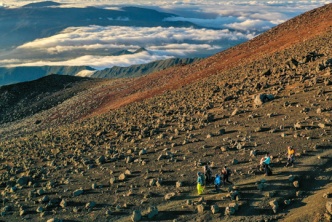
Réunion Island hut-to-hut traverse
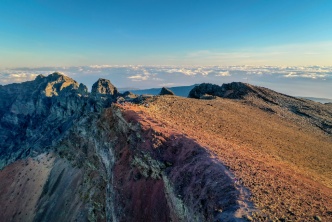
The 'Petite Traversée'
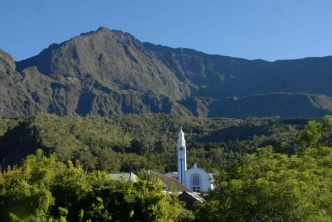
The Essential Road trip
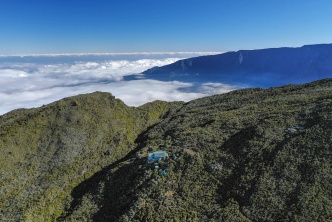
The 'Diagonale des Fous' Trail
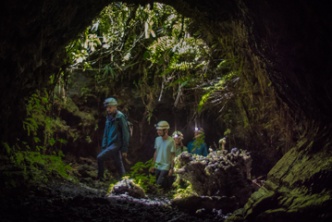
Rad' Réunion: an active island adventure
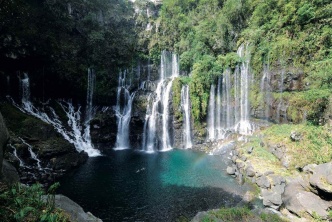
The Thrill-Seekers Island Adventure
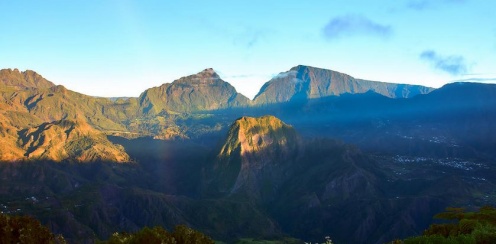
Tailor-made adventures & road trips

Volcanoes & Lava tubes
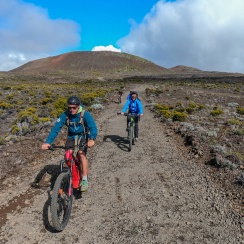
Multi-activity
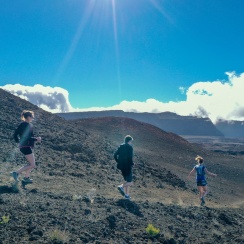
Why travel with us?
4 good reasons to trust Altaï for an unforgettable trip...
- Local wilderness & adventure travel experts
- 100% customizable
- No middleman = direct prices
- Excellent support team
Our community
Altaï Réunion is part of Altai Travel: the community of travellers, local experts & populations that promotes positive and sustainable tourism where each actor is enriched by contact with others. In more than 25 destinations, our local experts build experiences with our travellers where freedom, nature, encounters and pleasure are the key words. Click on each country in colour to discover our other local agencies! Select a country to discover our other local agencies!
Altaï Cabo Verde
Discover Cape Verde with our local agency
Altaï Maroc
Discover Morocco with our local agency
Altaï Réunion
Discover Reunion Island with our local agency
Altaï Tanzania
Discover Tanzania with our local agency
Altaï Canada
Discover Canada with our local agency
Altaï Costa Rica
Discover Costa Rica with our local agency
Discover Cuba with our local agency
Altaï Patagonia
Discover Patagonia with our local agency
Discover Peru with our local agency
Altaï India
Discover India with our local agency
Altaï Indonesia
Discover Indonesia with our local agency
Altaï Nepal
Discover Nepal with our local agency
Altaï Sri Lanka
Discover Sri Lanka with our local agency
Altaï Vietnam
Discover Vietnam with our local agency
Altaï Azores
Discover Azores with our local agency
Norwide Finland
Discover Finland with our local agency
Altaï France
Discover France with our local agency
Altaï Grèce
Discover Greece with our local agency
Altaï Iceland
Discover Iceland with our local agency
Altaï Terres Celtes
Discover Ireland with our local agency
Altaï Italia
Discover Italy with our local agency
Altaï Madeira
Discover Madeira with our local agency
Altaï Norway
Discover Norway with our local agency
Altaï Portugal
Discover Portugal with our local agency
Discover Scotland with our local agency
Altaï Sicilia
Discover Sicily with our local agency
Altaï España
Discover Spain with our local agency
Altaï Svalbard
Discover Svalbard with our local agency
Altaï Canarias
Discover the Canary Islands with our local agency
Altaï Egypt
Discover Egypt with our local agency
Altaï Jordan
Discover Jordan with our local agency
Discover Oman with our local agency
Who are we?
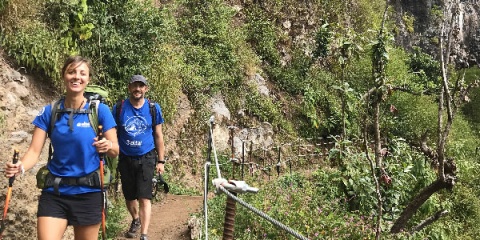
Altaï Réunion Spirit
1. the quality of our trips, 2. fair prices, 3. environmental and cultural preservation, 4. excellent customer service.
Three 98-year-old women celebrate their 80th high school reunion
GALESVILLE, Wis. (WKBT) - Three women from a Wisconsin high school’s Class of 1944 got together to celebrate their 80th reunion.
In 1944, World War II was still going on, Franklin D. Roosevelt was elected to his fourth term as president and the average United States home cost just over $3,000. It was also the year these three women graduated from Galesville High School.
The women – all 98 years old – gathered Friday to celebrate their 80th class reunion.
The trio planned on grabbing lunch after riding in a 1929 Packard, but it seems the 95-year-old vehicle isn’t as strong as the women. It broke down on the way to pick them up.
But that didn’t stop the celebrants from enjoying their day. They took a picture with the car and caught a slightly less flashy ride.
The women topped off lunch with cake and ice cream and called a few classmates who weren’t able to make the reunion.
Copyright 2024 WKBT via CNN Newsource. All rights reserved.

Northern lights from geomagnetic storm seen across Arizona

Triple homicide suspect from Mississippi killed in shootout with Arizona DPS troopers

La Niña likely returns, what does it mean for the monsoon?

Man, woman found dead in apparent murder-suicide at Gilbert home, police say

Teen in custody after shooting his parents at Chandler home, police say
Latest news.

Remains of 17-year-old found after boyfriend tells police he disposed of her body

Eastbound Loop 202 Red Mountain in Mesa reopens after crash

Loop 202 officially back open after closure due to crash in Mesa

Republican holdout, absent member force Arizona Senate to delay vote on ‘Secure the Border Act’

Tempe residents concerned over proposal for new 21-story apartment building

IMAGES
COMMENTS
La Réunion was born about three million years ago from volcanic activity. Although the ancient volcano that created the island is now asleep, its younger brother, the Piton de la Fournaise, continues to erupt today. It is one of the most active hot spots on the planet and also a spectacular sight. To enjoy the most complete view over the ...
Vue du cratère Rivals, qui est un cône volcanique adventif du Piton de la Fournaise, lors de l'éruption volcanique de septembre - octobre 2022, à la Réunion ... Reunion Island ...
Reunion Island. Home to one of the world's most active volcanoes, snow-capped Piton de Fournaise, Reunion is a little known gem. This rocky, French-governed island off the coast of East Africa is easily explored by Les Cars Jaunes, yellow buses that link main settlements. The road into the mountains provides breathtaking scenery.
15 Amazing Things To Do on Reunion Island: Our Itinerary. 1. - Start With a Glimpse of Colonial History in Saint-Denis. 2. - Visit The Most Creole Town on The Island: Hell-Bourg And Its Region. Picturesque Hell-Bourg. Things To See in Hell-Bourg. La Maison Folio. Le Musée des Musiques et Instruments - Maison Morange.
Réunion Island is located in the Indian Ocean (), east of Madagascar and southwest of the island nation of Mauritius.An overseas department of France, Réunion is well known for Piton de la Fournaise, one of the most active volcanoes in the world, and its breathtaking mountains and calderas. It's home to an incredible diversity of landscapes and micro-climates, a melting pot of cultures ...
From Reunion, it is possible to reach Mauritius and Madagascar by boat. Two ferry services offer these routes, the Mauritius Pride and the Mauritius Trochetia. They are at 4, avenue du 14-Juillet 1789, 97420, Le Port, telephone: ☏ +262 262 42 19 45. Throughout the year, a number of cruise liners dock on the island.
Located in the Mascarene Islands, Reunion Island is a French overseas department that offers travellers. a complete change of scenery, transporting them to this tropical island in the Indian Ocean. A crossroads of African, Asian and European civilisation, Reunion Island is a true melting pot of cultures. Tips and tricks to help you prepare for ...
The magazine "La Réunion, the Ultimate Island" (getting here, entry formalities, healthcare, disabled facilities, telephone calls, driving on Reunion Island, travel solutions, etc.). Tips for travelling responsibly. The information and booking platform: Tel. +262 90 78 78 - resa@
6. Best Time To Go. The best time to visit Réunion Island is May-November when the weather is generally dry and cool. It starts to get hot and rainy from November-April. Réunion is known for its torrential rainfall, so it's advisable to avoid the monsoon season. Photo Credit: Réunion Island Tourism Board. 7.
Flights from Paris start at ~$360 one-way. Neighboring Mauritius (134 miles east) receives numerous long-haul flights, making it another option if you have time to visit both islands. In 2017, Sarah and I visited Reunion while touring the region, so we flew in from Mauritius for $148 and out to Madagascar for $117.
Poor. Réunion is great to visit anytime outside the cyclone season from January to March. July to October are the driest months and the cool temperatures are ideal for hiking. Be warned though, the mornings and evenings are cold at this time. It gets very busy from July to the end of August as these are the main French school holidays.
Travels agency - LA REUNION. Phone : +262 692 803 823 / Email : [email protected].
Get a quick tour of breathtaking Reunion Island and see the top things to do: from the best beaches, hikes, scenic drives and more! Get your FREE Reunion Isl...
Tourists taking photos of the sunset at L'Hermitage. Hikers on a volcanic cone in Réunion. Saint-Denis, Réunion's capital. Tourism is an important part of the economy of Réunion, an island and French overseas departement in the Indian Ocean.Despite its many tourism assets, the island's tourist attractions are not well known.
5. You can hike up an active volcano. IRT/Luc Perrot. This one's a must-do if you're at Reunion Island, which is home to one of the world's most active and accessible volcanoes, Piton de la Fournaise. You might get lucky and be witness to a spectacular show of nature when the volcano spews lava and ash in the air.
Discover intensely La Reunion. Located in the Mascarene Islands, Reunion Island is a French overseas department that offers travellers. a complete change of scenery, transporting them to this tropical island in the Indian Ocean. A crossroads of African, Asian and European civilisation, Reunion Island is a true melting pot of cultures.
La Réunion is an island in the Indian Ocean and belongs together with the neighbouring Mauritius and Rodrigues to the Mascarene archipelago. Madagascar, the second largest island state in the world, lies about 450 miles west of Réunion. Politically, La Réunion is an overseas department of France, making it part of the European Union and the official currency is the euro.
All international travelers should be fully vaccinated against measles with the measles-mumps-rubella (MMR) vaccine, including an early dose for infants 6-11 months, according to CDC's measles vaccination recommendations for international travel. Measles (Rubeola) - CDC Yellow Book. Rabies. Réunion is free of dog rabies.
UTC +4. Reunion (French: Réunion [1]) is a French overseas island located in the midst of the Indian Ocean, 700 kilometers east of the island of Madagascar , and 200 kilometers South-West of Mauritius. The island was previously known as île Bourbon. This enchanting destination is blessed with a tropical climate and beautiful volcanic landscapes.
Ensure that your travel insurance covers accidents related to recreational activities; Useful links. Prevention and reduction of shark risk - La Réunion state services (in French) Water safety abroad; Hiking. The Piton de la Fournaise volcano is active, unpredictable and experiences random eruptions.
Located on the island, Altaï Réunion is a local agency specialized in organizing nature and adventure travel in la Réunion. Let us organize the trip of your dreams. Our experienced team guarantee the highest quality service. Before, during and after your trip, you will be supported by a dedicated team of specialists with a contagious passion ...
Holiday tips. Questions & Answers. Reunion Island entry formalities. Compulsory documents for French citizens or citizens of the European Union: Valid identity card or passport. For people coming from any country other than France: valid passport, visa if necessary and a return ticket or ticket for an ongoing journey from the island.
The women - all 98 years old - gathered Friday to celebrate their 80th class reunion. The trio planned on grabbing lunch after riding in a 1929 Packard, but it seems the 95-year-old vehicle ...